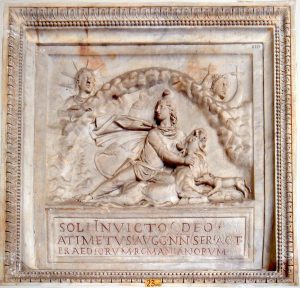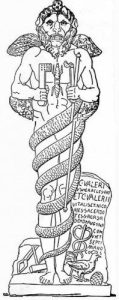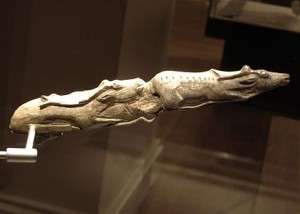
''Two Swimming Reindeer''. Made from the TIP of a mammoth tusk: Waxing/Waning?

'Curved' horns.
"Life was good for the hunter gatherers. Palaeolithic hunter gathering people didn't suffer from famine and malnutrition like the Neolithic farming tribes that followed them... Archaeological evidence from the Dordogne region of France shows they used lunar calendars giving the phases of the moon. Solar calendars do not appear until the Neolithic period...The hunter-gatherer affluence came about because they needed very little in the material sense in order to be content and produce beautiful art - which is an expression of a deep philosophy..." ['Elen of the Ways' / E. Sentier].
Question. Philosophy of what? In the 'intuitive' sense of the word or in the scholarly sense. Think about it in relation to that ''bit''. Something {experienced?} internally that needed an external expression for it - in the natural order of things - in order to assimilate it. Hindsight/foresight by way of the subjective/objective process? Could that lead to an answer as a 'difference' between Neanderthals and Cro Magnon man? and as to why one outlasted the other? Enlarged elsewhere.
Among others try ''deer'' and ''horn'' before allowing those first impressions to {dictate?} something else. Begin in Part 2.

''The Lion (al-asad) of ancient Arabia was so massive that it roared from January to May, stretching across three seasons in its pre-dawn stellar settings, according to the rain star calendar of Qushayr. The cold season of winter (ash-shatawi) continues with the setting of the Two Forearms (adh-dhira’an) and then the Nose of the Lion (nathrat al-asad). The setting of the Forehead of the Lion (jabhat al-asad) marks the end of winter and the onset of the warm spring rains (ad-dafa’i). Some weeks later, the Two Shanks of the Lion (saqa ‘l-asad) set about 40 days apart, defining between them the rainy portion of the summer (as-sayf). All of this seasonal rain activity unfolds over the course of about four months, between the morning settings of the two brilliant pairs of stars (its Two Forearms and its Two Shanks) that roughly define the boundaries of the Lion.''
A working example: ''In search of textual references to a monumental lion at Giza predating the
Old Kingdom, we focused our investigation on the earliest use of three ancient Egyptian hieroglyphs depicting the frontal and caudal halves of a lion and a fissure-like symbol. These symbols first appear in Egypt’s proto- and early dynastic era and form part of Egypt’s earliest known set of written language symbols. During the First Dynasty, these symbols were both carved into ivory tags and painted onto jars to designate the quality of oil shipped as grave goods to both royal and private tombs. The same iconography and symbols appear in the creation story recorded on the frieze and upper register of the Edfu Temple’s enclosure wall, where the frontal and caudal animal parts are used to name two of seven personified creation words, the so-called ḏ3jsw1, uttered during the act of creating the world from the primordial flood Mehit-wrt by Ptah.'' ['Major Geological Fissure Through Prehistoric Lion Monument at Giza - Inspired Split Lion Hieroglyphs and Ancient Egypts Creation Myth' / Scientific Research Publishing {PDF FILE} / Manu Seyfzadeh + Robert M. Schoch].
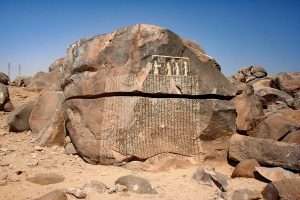
North and south. Opening / closing. Which and why?
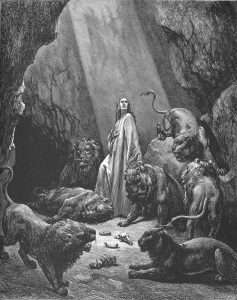
Daniel replies that his God had sent an angel to close the jaws of the lions, "because I was found blameless before him." Gebel Barkal?
And/or: ''In the same tomb, couchant lions are depicted in raised relief on the lintel over the sarcophagus chamber (Figure 6) demonstrating the close association between these two animals perceived by these early dynastic tomb designers. In later depictions, the baboon is usually shown facing east, towards the Sun, and was believed to be a manifestation of Thoth. Baboons are well known for their loud morning call when they issue “contest wahoos”
(Fischer et al., 2002: p. 1465). Edfu’s Memphite Creation Myth. It is this behavior which may have inspired an aspect of the Memphite creation myth where baboons personified the seven uttered words (ḏ3jsw) of Ptah in the act of creating the world and the first seat of the gods on Earth from the waters of the primordial flood (Kurth et al.,2014, pp. 23-26; Chassinat, 2014: pp. 14-15, 18). The seven counterparts of the ḏ3jsw in the myth are the seven ḫnmw, the potter spirits who shape the words into beings from clay. The western half of the north frieze on the inner girdle wall of the Edfu temple has been translated into German by the Edfu Project (Kurth et al., 2014: p. 322/Émile Chassinat 181, 11) and here, we provide the English translation: This is a faithful reproduction of the text which Thoth prepared according to the speech of the Ḏ3jsw of Mehit-Wrt and which one calls “specification of the places of the first epoch”. [Same].
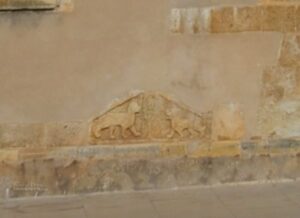
At the bottom right of the clock tower sits a pyramidal stone relief of a dog and a lion which is very weathered by time older than the church itself. They are separated by a flor-de-lis.
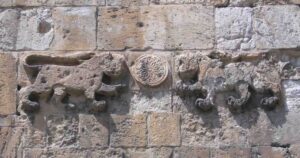
Loewentor.
"The key idea we want to convey here is that according to the Edfu texts the seven baboons represented the first seven words of creation as the ḏ3jsw and the material substance from which these words were made “on the lips of Ptah” so to speak was the primordial flood water which drowned the previous rebellion of man against the Sun. This flood was named Mehit, the same name given to the lioness guarding the provisional administrative tent of the first kings of Egypt, which we previously located at Giza (Seyfzadeh et al., 2017)....These seven ḏ3jsw are individually named and depicted together with the two ṧbtjw (see below) on the upper third register of the western inner girdle wall of the Edfu Temple (Figure 7). Their epithets/names are (from top right): The Hurrying One, The Bull, The Falcon, The Speedy One, The Perfect Front, The
Equipped End, The Lord of the Red Ones (Kurth et al., 2014: p. 296)."
'Holly' / 'Swell' to enlarge.
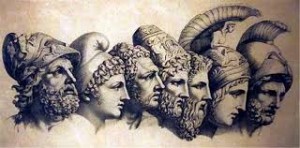
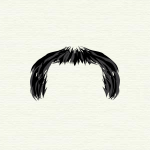
Horseshoe moustache
"Semantically, we perceive elephants in terms of their ivory [Greek elephos]. In Sanskrit, however, 'hasta' is ''hand'' and hasti, meaning 'the creature with the hand', is the elephant {the trunk being the hand}... Whence from the Hindustani comes the Anglo-Indian 'hatty' for an elephant...Tennyson, in 'Merlin and Vivien', wrote of elephants; 'serpent hands'...The Roman etymologist Varro in the 1st century B.C. - wondered why the elephant was known as the 'Luca bos', in which 'bos' is ''ox'' but 'Luca' possibly ''light'' from 'lux'...It is curious that Varro didn't refer to the elephants in the triumphal march after Caesar's conquest of Gaul [58-51 BC]. Suetonius wrote that Caesar - 'ascended the Capital by the light of forty elephants on the right and left bearing lamps [Lychni]'....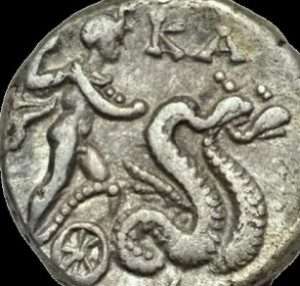
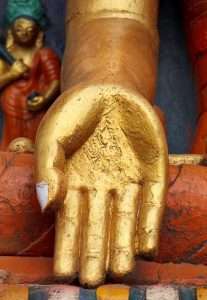
Buddha's hand.
Andrea Mantegna, in his painting commonly known as 'The Elephants' [c. 1500-1506], showed three elephants; preceded by an ordinary bos, or ox; with garlands on their heads and tall flickering torches mounted on their backs. If this doesn't provide an etymology 'light oxen' it does at least suggest that Caesar was following the logic of such an etymology." [Taken from the book 'The Book of Babel'. Mentioned elsewhere]. Question. Did Caesar know something? The tail end of something begins {the process?} of something else? As with the 'tail' end of a 'dog' and/or 'bear' ? Try 'Homer's Secret Iliad'.
Recall ''plumes'' on other heads.
The author therefore attempting to speculate on the possible connection between ''elephant'' and the ''ox'' or Great Bear {by way of ''the Plough'' constellation}. North in relation to South?
''Thailand in S/E Asia is said to be shaped like an elephants head.''
Refresher: East is a beginning, west its ending.

'light oxen': "I bring up an individual type as a point of departure to talk about. The one {'emotion'?} that is strongest will pull you first." [Page 4 'Stopping and Seeing' / Translated by T. Cleary].
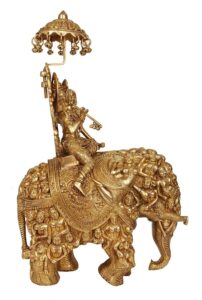
Let us return to the Arcanum of Force.
It is said that “union makes force”, and one understands by this the alliance of individual wills with a view to achieving a common aim {'reindeer' horns?}. It is the formula for the quantitative increase of force. With respect to qualitative force, it would be appropriate to say that “unity is force”, because one is strong only in so far as there is unity of spirit, soul and body, i.e. in so far as there is virginity. It is inner conflict that renders us weak: the fact that we serve two or even three masters at the same time. The Emerald Table of Hermes states : “to accomplish the miracles of one thing”. It teaches concerning the “strongest of all powers, the force of all forces, for it overcometh every subtle thing and doth penetrate every solid substance.”
Side note: Now, the development of the two inferior spheres, the instinctive and the animistic, all important as it is, would have remained unfruitful, if that of the intellectual sphere had not come in time to strengthen it. Man, whose needs influence and whose passions draw him unceasingly on, is far from having attained the perfection of which he is susceptible. It is necessary that a purer light than that which is born of excitement of the passions should come to his aid, in order to guide him in the career of life. This light, which springs from the two great torches of religion and law, can be born only after the first perturbation of the intelligence has taken place. But this perturbation is not such as some men of more enthusiasm than sagacity imagine; this light does not appear abruptly in all its splendour; it opens out of twilight as that of the day, and passes through all the degrees of dawn and morning before arriving at its midday. Nature, I repeat in other terms, shows in nothing sudden transitions; she passes from one extreme to the other by almost imperceptible modifications. {Hermetic Interpretation of the Origin of the Social State of Man}.
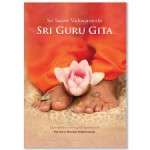
Vesta (Classical Latin: [ˈwɛs.ta]) is the virgin goddess of the hearth, home, and family in Roman religion. She was rarely depicted in human form, and was more often represented by the fire of her temple in the Forum Romanum. Entry to her temple was permitted only to her priestesses, the Vestal Virgins. Their virginity was deemed essential to Rome's survival; if found guilty of inchastity, they were buried or entombed alive. As Vesta was considered a guardian of the Roman people, her festival, the Vestalia (7–15 June), was regarded as one of the most important Roman holidays.[1] During the Vestalia privileged matrons walked barefoot through the city to the temple, where they presented food-offerings. Such was Vesta's importance to Roman religion that following the rise of Christianity, hers was one of the last non-Christian cults still active, until it was forcibly disbanded by the Christian emperor Theodosius I in AD 391.
'Sixes and sevens'.
Menkaure to enlarge.

The Stola: Emphasis on right 'breast' and 'knees'? "Hands"?

"Amazon preparing for battle" (Queen Antiope or Hippolyta) or "Armed Venus", by Pierre-Eugène-Emile Hébert, 1860, National Gallery of Art, Washington, D.C. 'Bended knee'?
According to tradition, worship of Vesta in Italy began in Lavinium, the mother-city of Alba Longa and the first settlement by the Trojan refugees after their flight from Troy's destruction, led there by Aeneas and guided by Venus. It was believed that from Lavinium, the worship of Vesta was transferred to Alba Longa, a belief evident in the custom of Roman magistrates going to Lavinium, when appointed to higher office, and offering sacrifice both to Vesta and the household gods of the Roman state known as Penates, whose images were kept in Vesta's temple. Alongside those household gods was Vesta, whom the Roman poet refers to as Vesta Iliaca ("Vesta of Ilium/Troy").[11] Vesta's sacred hearth was also named Iliaci foci ("hearth of Ilium/Troy").[12]
Livy said of Alba Longa that it was founded by Ascanius to relieve crowding at Lavinium. He placed it at the foot of the Alban Mount and said that it took its name from being extended along a ridge.[6] Dionysius of Halicarnassus repeated the story, but added that Ascanius, following an oracle given to his father, collected other Latin populations as well. Noting that alba means "white" and longa means "long", he translated the name into the Greek language as "long white town". Dionysius placed the town between the Alban Mount and the Alban Lake,[7] thus beginning a long controversy about its location.
White Goddess by R. Graves.

Iapyx removing an arrowhead from the leg of Aeneas, with Aeneas's son, Ascanius, crying beside him. Wounded thigh? Fisher king? 'Tears'? Any triangular forms? 'Five' star pattern?
There is, however, "no archaeological evidence of a powerful state in the area of the Alban Hills at this time"

In Greek and Roman mythology, Iapyx (from Greek Ἰάπυξ, gen.: Ἰάπυγος), Iapux or Iapis was a favorite of Apollo. The god wanted to confer upon him the gift of prophecy, the lyre, etc.; but Iapyx, wishing to prolong the life of his father, preferred the more tranquil art of healing to all the others. Virgil's Aeneid (XII: 391–402) relates that Iapyx was Aeneas's healer during the Trojan War and then escaped to Italy after the war, founding Apulia.
Alba Longa (occasionally written Albalonga in Italian sources) was an ancient Latin city in Central Italy in the vicinity of Lake Albano in the Alban Hills. The ancient Romans believed it to be the founder and head of the Latin League, before it was destroyed by the Roman Kingdom around the middle of the 7th century BC and its inhabitants were forced to settle in Rome. In legend, Romulus and Remus, founders of Rome, had come from the royal dynasty of Alba Longa, which in Virgil's Aeneid had been the bloodline of Aeneas, a son of Venus.[3][4][5]
According to Livy, Roman patrician families such as the Julii, Servilii, Quinctii, Geganii, Curiatii and Cloelii originated in Alba Longa.[5]
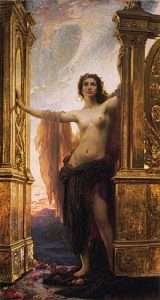
Goddess of Dawn. Gateway to the light.
And/or: Iapyx is also the name of a minor Greek wind god, the north-west or west-north-west wind. Virgil relates this Iapyx to the wind that carried the fleeing Cleopatra home to Egypt after her loss at the battle of Actium.[5] Horace[6] prays that Iapyx may safely carry his friend Virgil's ship to Greece....
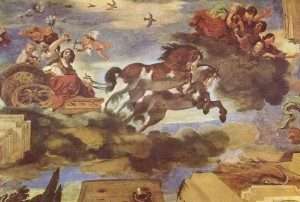
The Roman Goddess of Dawn. Whose brother was the sun, and sister the moon. Painted by the same artist, as that of The Shepherds of Arcadia. Boehmes first book after twelve years was called Aurora, supposedly never finished. As are a number of publications. Purposely. Question. Why? All dried up?[ Eclipse Of The Sun: An Investigation Into Sun and Moon Myths by J. McCrickard]. And/or: "Dawn always begins in the bones." Femur?
Astraeus married Eos, the goddess of the dawn. Together as nightfall and daybreak, they produced many children associated with what occurs in the sky during twilight.
'Dappled'?
In Greek mythology, Astraeus (/əˈstriːəs/) or Astraios (Ancient Greek: Ἀστραῖος, romanized: Astraîos, lit. 'starry'[1]) is an astrological god. Some also associate him with the winds, as he is the father of the four Anemoi (wind deities), by his wife, the dawn-goddess Eos..... His name "Astraeus" (Ancient Greek Ἀστραῖος, translit. Astraîos) is derived from the Greek word ἀστήρ (astḗr) "star". Ἀστήρ itself is inherited from the Proto-Indo-European root *h₂ster- "star", from *h₂eh₁s- "to burn".[2] "Astraea", the name of his daughter, shares this same etymology.

Jordan/Dead sea as a means....? left or right foot?
Side note: A well-known image of the stola is the one worn by the Statue of Liberty in New York City....

"Two soldiers standing facing each other, holding spears and pointing at sow which lies between them (depicts scene from Aeneid where sow identifies the place to found new city." Nose/smell link?
It has long been believed that Roman women originally did not wear stolae and that they instead wore togas like the men. However, this goes back to a scholarly lore invented in Late Antiquity.[9][10] For the most part, the toga was worn exclusively by men, and Roman wives (matronae) traditionally wore the stola. In Latin literature, wearing the male toga was associated with prostitution and adultery.[11][12] In Roman life, the only Roman women who wore a toga were unfree prostitutes (referred to as meretrices or ancillae) who worked in the streets and in brothels. A Roman matron convicted of adultery (moecha damnata) did not actually have to wear a toga in public from then on. She was only symbolically called a togata (a woman in toga) since she was unfit to be a matron (as epitomized by the stola).[13] Female and male citizen children could wear a toga praetexta (a toga with purple border), but this usage should be kept apart from wearing the toga as an adult.[citation needed]
'Orphan' / 'Foster'?
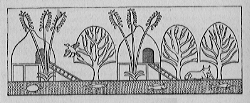
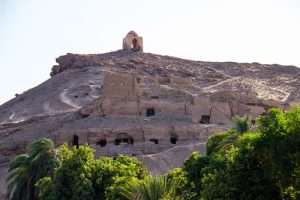
Qubbet el-Hawa or "Dome of the Wind" is a site on the western bank of the Nile, opposite Aswan, that serves as the resting place of ancient nobles and priests from the Old and Middle Kingdoms of ancient Egypt. The necropolis in use from the Fourth Dynasty of Egypt until the Roman Period. The site was inscribed on the UNESCO World Heritage List in 1979 along with other examples of Upper Egyptian architecture, as part of the "Nubian Monuments from Abu Simbel to Philae" (despite Qubbet el-Hawa being neither Nubian, nor between Abu Simbel and Philae).
Continued: ''The first historically recorded elephant in northern Europe was brought by emperor Claudius during the Roman invasion of Britain in AD 43 to the British capital of Colchester.''
Side step: Born in London, Jane Taylor lived with her family at Shilling Grange in Shilling Street, Lavenham, Suffolk, where her house can still be seen. Her mother was the writer Ann Taylor. In 1796–1810, she lived in Colchester, where she is believed to have written "Twinkle, Twinkle, Little Star", which was first published in 1806 {in the attic}. A less convincing claim is that it was written in New House, Ongar, as suggested by some descendants of the Taylor family. The Taylor sisters belonged to an extensive literary family. Their father, Isaac Taylor of Ongar, was an engraver and later a dissenting minister. Their mother, Ann Taylor (née Martin) (1757–1830), wrote seven works of moral and religious advice, two of which were fictionalized
Continued: "The most notable gift of all was an Asian elephant named Hanno (Italian: Annone; likely a derivative of aana, which means ‘elephant’ in the Moorish trainer’s native Malayalam language. According to zoologists, elephants do not respond to ‘pet’ names). In 1514 Hanno’s journey from Lisbon to Rome with the Portuguese ambassador Tristão da Cunha caused quite a sensation. He was the first elephant to be seen in Rome since the Roman Empire! It is said that when Hanno entered Rome in a grand procession, he stopped in front of Castel St. Angelo (where Pope Leo was watching) and knelt to the ground. After barking 3 times, he plunged his trunk into a nearby trough and filled it with water; he then raised his trunk high in the air and sprayed the pontiff and nearby spectators. Leo was delighted, and Hanno immediately became the pope’s favorite pet.
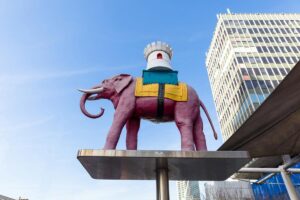
Despite all these difficulties, a four-year-old Hanno made a triumphant entry into Rome on March 19 {coronation?}, 1514, bearing a silver castle-like structure on his back and delighting onlookers with salutes of his trunk.
Pope Leo was delighted! For two years Hanno stole the show in numerous Roman festivals, processions, and spectacles; he was so popular, in fact, that Leo commissioned from Raphael a life-sized mural of Hanno at the entrance to the Vatican (this was later destroyed by the construction of Bernini’s colonnades for St Peter’s Square). Other Hanno art cameos (still visible today) in the Vatican include a wood mosaic on the door between the Stanza della Segnatura and Stanza del Incendio del Borgo, on the Adoration of the Magi tapestry, part of the “New School” series in the Stanza degli Arrazzi, and on 2 frescoes in Raphael’s Loggie in the Apostolic Palace. You’re probably wondering if Bernini’s elephant in Piazza della Minerva has anything to do with our dear Hanno? Even though Bernini might have been aware of Hanno’s saga, his inspiration came from elsewhere: from the manuscript Hypnerotomachia Poliphili, published in 1499 by the Dominican Francesco Colonna. This obscure text contains engravings depicting the protagonist’s dreams, one of which is an elephant carrying an obelisk on its back.
Refresher: The strongest emotion will pull you first."
And/or: Let us return to the Arcanum of Force.....


'Nineteen' milk maids?
It is said that “union makes force”, and one understands by this the alliance of individual wills with a view to achieving a common aim. It is the formula for the quantitative increase of force. With respect to qualitative force, it would be appropriate to say that “unity is force”, because one is strong only in so far as there is unity of spirit, soul and body, i.e. in so far as there is virginity. It is inner conflict that renders us weak: the fact that we serve two or even three masters at the same time.
The Emerald Table of Hermes states not only the principle of universal analogy, but also that of universal force: “to accomplish the miracles of one thing”. It teaches concerning the “strongest of all powers, the force of all forces, for it overcometh every subtle thing and doth penetrate every solid substance” (Tabula Smaragdina, 9). The force taught by the Emerald Table is the unity in action of heaven and earth, for thelema (the fundamental will) “doth ascend from earth to heaven; again it doth descend to earth, and uniteth in itself the force from things superior and things inferior” (Tabula Smaragdina, 8).{Meditations on the Tarot / V. Tomberg}.
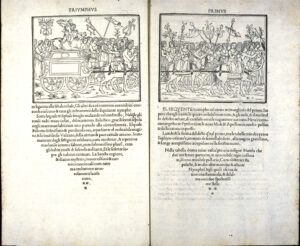
Fire or water?
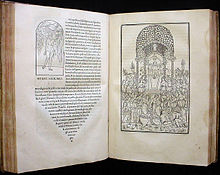
Hypnerotomachia Poliphili.
Hanno’s death in 1516 came as a shock; after days of constipation, he was given a laxative laced with gold, which in effect poisoned him. Leo was so devastated about Hanno’s death that he wanted him buried right where he resided in the Vatican: under the Belvedere courtyard. Believe it or not, during the 1962 construction of the Vatican Library’s new heating system, several elephant bones were excavated! Portugal later attempted to gift a rhino to the Pope, but sadly the boat that carried the rhino was shipwrecked off the coast of La Spezia.
Side note: The Lord Mayor's Show is one of the best-known annual events in London as well as one of the longest-established, dating back to the 13th century.[1] A new lord mayor is appointed every year, and the public parade that takes place as their inauguration ceremony reflects that this was once one of the most prominent offices in England and subsequently the United Kingdom.
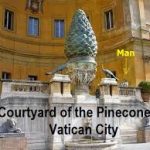
Within 'its' square mile. The smallest CITY in the world?
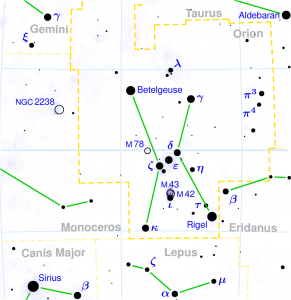
Fire AND water.
The show is named after the Lord Mayor of the City of London, a city and ceremonial county within Greater London and the historic centre of the wider metropolis. This is distinct from the Mayor of London, the elected head of the Greater London Authority (a position which has existed only since 2000). The City is London's main financial district, widely known informally as 'the Square Mile'.
The Lord Mayor's Show is centred on a street parade, which in its modern form is a light-hearted combination of traditional British pageantry and elements of carnival. On the day after being sworn in, the Lord Mayor and several others participate in a procession from Guildhall, via Mansion House and St Paul's Cathedral, in the heart of the City of London, to the Royal Courts of Justice on the edge of the City of Westminster, where the new Lord Mayor swears allegiance to the Crown. Until 1882, the procession went to Westminster Hall.[2]
Originally, this journey was mostly made by barge on the River Thames, the usual method of transport for this route in those days. Pageantry and display gradually grew around the trip, comparable to the far less frequent Royal Entry parades that usually followed a coronation or royal wedding.
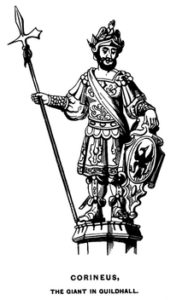
Corineus, in medieval British legend, was a prodigious warrior, a fighter of giants, and the eponymous founder of Cornwall.

Gogmagog. This and Corineus were a pair of figures displayed at Guildhall, London, carved by Captain Richard Saunders in 1709.
In the 16th century the "show" become a major entertainment for Londoners.[3] This rests significantly on the shoulders of the Lord Mayors Sir Rowland Hill and his friend Sir John Gresham, in revival of the Marching Watch or Mid Summer Watches in London. In these pageants 15,000 citizens all in bright harness, with coats of white Silk or Cloath, and Chains of Gold, passed through London to Westminster, and round St. James's Park, and on to Holborn.[4] The long daylight of June caused the civic government to fear disorder; the Watch was originally a show of the city's policing force with armed men marching in the streets., but it evolved into an annual festival of street pageantry which reached its spectacular peak in Hill's time and evolved into the Lord Mayor's Show.[5][6] These developments are recorded in Lady Long's household-book at Hengrave, Suffolk, which notes that Henry VIII watched these marches from Mercers Hall with Jane Seymour; "the presence of more than 300 demi lances and light horsemen" were a particular highlight.[7]
In London, the show occurred annually on 29 October.[8] In 1751, Great Britain replaced the Julian calendar with the Gregorian calendar; the Lord Mayor's Show was then moved to 9 November. In 1959, another change was made: the Lord Mayor's Show is now held on the second Saturday in November....
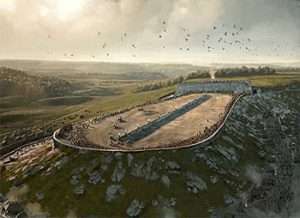
Alte Burg. Described as an oval shape 'hippodrome'. The first of its kind. "Capital" to enlarge.
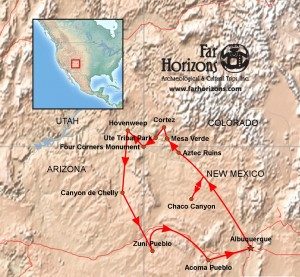 Side note: One of two wooden figures in the Guildhall in London, carved in 1709, that replaced wicker and pasteboard effigies traditionally carried in the Lord Mayor's Show. They represented Gogmagog and Corineus, and were later known as Gog and Magog. Both were destroyed in the London Blitz in 1940; new ones were carved in 1953.
Side note: One of two wooden figures in the Guildhall in London, carved in 1709, that replaced wicker and pasteboard effigies traditionally carried in the Lord Mayor's Show. They represented Gogmagog and Corineus, and were later known as Gog and Magog. Both were destroyed in the London Blitz in 1940; new ones were carved in 1953.
Continued: Formerly, the route was varied each year so that the procession could pass through the Lord Mayor's home ward; since 1952, however, the route has been fixed. The Lord Mayor rode on horseback or went on a barge via the River Thames, based on the route chosen. The river transport for the Lord Mayor's Show gave rise to the word "float" when used in the context of parades.[citation needed]

'lozenge' to enlarge.
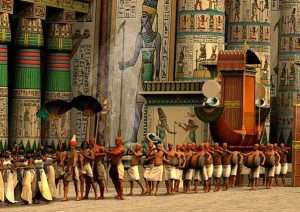
'Feast of the Valley'. float? Who instigated Karnac-Luxor? Any nicknames?
On more than one occasion, floats have been used as puns on the Lord Mayor's name; in 1616 John Leman had a lemon tree in the procession, while the following year William Cockayne had an artificial cock crowing and flapping its wings. More recently, Sir Murray Fox in 1974 had a large model of a fox in the procession.[2]
Lord Mayor Gilbert Heathcote was unseated from his horse by a drunken flower girl in 1710, breaking his leg. A stand-in coach was used for some years until 1856, the last occasion on which barges were used...
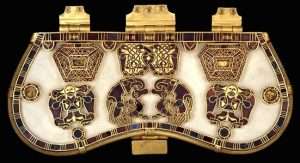
Sutton Hoo purse clasp: Wolfs / eagles and ducks. Stoke Mandeville to enlarge.
The side panels of the Lord Mayor's State Coach were painted by Cipriani, who also painted those for the monarch's Gold State Coach. It is pulled by six horses, two fewer than the monarch's. The escort to the Lord Mayor's coach recalls the waterborne transport of the Lord Mayor. They are liveried watermen carrying oars: formerly, the Mayor's barge was rowed by members of the Company of Watermen and Lightermen. Riding postillion on the Lord Mayor's State Carriage are two winners of the annual Doggett's Coat and Badge rowing race.
And/or: "At the State Opening of Parliament, the Monarch's Speech is kept in the Lord Chancellor's Purse." {'The Chase' / S17 EP91}.
'Opening of the Mouth'?
In the abstract SENSE of the word {i.e., 'nuggets' to be found}: "The Buddha's own life story is another version of the story of the man shot by an arrow.....
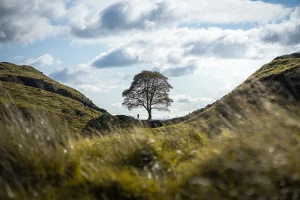
The Sycamore Gap Tree or “Robin Hood Tree” is a sycamore tree (Acer pseudoplatanus) standing next to Hadrian's Wall in Northumberland, England. The lake of Crag Lough and the village of Once Brewed are nearby, as is the Twice Brewed Pub, useful for trekkers at days end.
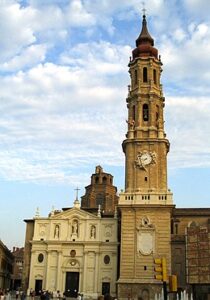
"A scene of Corineus (upper centre) sailing with Brutus to Gaul in a c. 1475 tapestry now in the Cathedral of the Savior of Zaragoza." Right angle?
The queen of a small kingdom in Northern India had a dream that she was carried on the wind on a long journey to a lake in the Himalayas. There a white elephant, wise and powerful and with six tusks, entered her left side. She was being 'overshadowed'. Later the pregnant {'pause'?} queen set off to stay with her parents feeling her time was near. Her mother would look after her, she thought. On the night of the full moon in May she was passing through gardens and orchards. She went over to look at some flowering trees. It was time. A fig tree leaned towards her so she could grasp it and steady herself {'anchor'}. She looked down to see that her son had already been born and was standing on his feet. Siddhartha took four steps to the north, south, east and west and announced his arrival with the roar of a lion: 'I am the greatest, {I am} the first, I have been born for all that lives'. That night all the creatures in the woods and orchards were silent and at peace. The baby was born the size of a six month old child and grew with astonishing speed..." [ Page 152 'Sacred History' / J. Black].
Big Fish Movie.
Side note: "Suleiman the Great's Mosque overshadows the Golden horn." {'Ottoman Empire by Train' / A. Roberts. S1 EP3}.
Also known as 'Lawgiver'.
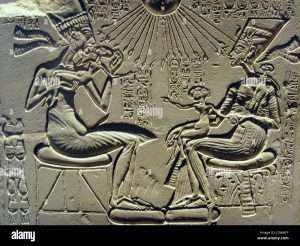
In profile {'side'?} or face on?
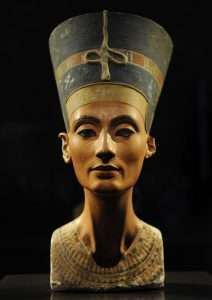
Nefertiti’s Sunshade of Re Temple at Kom el-Nana reveals the function of Sunshades of Re at Amarna in general, and the role played by Queen Nefertiti specifically. The temple served as the locus for the king’s divine renewal and daily rebirth, brought about by Nefertiti’s attributes as a fertile stand-in for the goddess Hathor (the solar goddess of sexuality, fertility, and celebration). Inscriptions from the temple also reveal that it played an important role in the mortuary cults of the elite dead at Amarna – with dead courtiers coming to Nefertiti’s Sunshade of Re as spirits to obtain offerings to sustain them for eternity. Since Atenist mortuary practices are still almost entirely unknown, this is a valuable piece of the puzzle that is King Akhenaten and Atenism. In short it is clear that this site, the Sunshade of Re of Nefertiti at Kom el-Nana, is incredibly important, revealing not only new information regarding the role of Nefertiti but also providing new information regarding the mortuary lives of the elite residents of the city.
Side note: The crown of thorns represented the general emotional state of humanity at that time. They were choked emotionally by selfinterests and although many of them could understand Christ's teaching, they could not give it any room. The 'will' side of them, which springs out of the state of a man's emotional centre and changes with his emotional development, was such that they could not let the teaching of Christ act upon them in any real way - that is, become the first thing, emotionally. For if you do not feel emotional enough about knowledge it cannot touch the SIDE of your being - that is, it cannot act on you. It will have no power over you. In other words, although you may feel it to some extent emotionally, you cannot apply your knowledge and begin to live it. Other emotional interests are too strong. This idea is expressed in many parables - namely, the idea of what is really most important to you, emotionally.

'light oxen': "I bring up an individual type as a point of departure to talk about. The one {'emotion'?} that is strongest will pull you first." [Page 4 'Stopping and Seeing' / Translated by T. Cleary].
Again, every man is first two men, an external man and an internal man. These at first are, or appear to be fused, just as if they were one. Only when a man begins to reflect on his life, and on the kind of man he is, and on his actions and speech and intentions, does the internal man begin to become separated from the external, and conscience can stir in him. This is a necessary state preliminary to the first stage of regeneration. Let it be again said that regeneration is the supreme idea of man. It is the true evolution of man. A man, in this sense, is not a violent external creature, more cunning or stronger than others, a principal animal. What a man is, is according to his understanding. And unless the inner man is separated from the outer, a man remains incapable of becoming a man. He is incapable of understanding, which begins originally, perhaps, only by 'standing under' oneself, and this may be the inner sense of the word, which is unknown etymologically. {'The Mark' / M. Nicoll}.
'Shadow'.
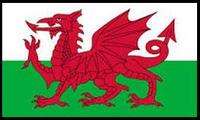
''The tongue of the Welsh dragon is the symbol of the Welsh Language Society.''
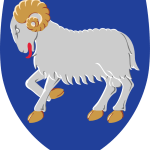
Golden tongued?
Continued: The excavations at the funerary enclosure of the “Kasta” mound revealed that a big part of the enclosure had been demolished during the Roman era. Consequently, several architectural members are not in there original place. According to historians and archaeologists, the face of the Lion, which has always been a sacred symbol of Macedonians, was looking towards the city, thus expressing the importance and glory of it.
The Amphipolis Lion was erected as a symbolical monument, in order to express the power of the city, as was the case with the Lions of Delos. Furthermore, according to a legend, its sculptor (whose identity is unknown), after finishing his work, which was also the peak of his career, faced an unpleasant surprise. The Lion missed its tongue. In desperation, the sculptor threw the Lion to the Strymonas river, so that no one would see it.
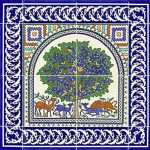
'Grip' to enlarge.
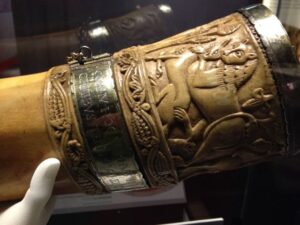
Midas / Barber / River to enlarge.
Temple of the winged lion at Petra.
A practical example: ''I was the shyest creature in the world, but i had a lion inside me that wouldn't stay quiet.'' Ingrid Bergman.
''There's a fire within my soul.'' {'Mamma Mia' / Abba].
Try Red lion / Green lion to get closer to a mindset.
SIDE NOTE: The Roman cult of Mithras has associated with it the figure of Aion a lion-headed god swathed by a serpent He represented boundless time, which held sway over the ages and the cyclic divisions of the year. In his hands he carried the keys of the solstices a silver one which opened the Gate of Cancer, the Way of the Ancestors, and a golden one which opened the Gate of Capricorn, the Way of the Gods, which lead beyond the processes of birth and dying and through which the gods could descend to earth (104) (fig 1 ). These two ways represent eternal laws, as unchanging as the universe itself, and they can also be seen as akin to the two traditions which are the subject of the present work. On the one hand the Native Tradition, which looks to the Ancestors, now elevated to the status of gods, for guidance. On the other the Hermetic Tradition, which looks outwards to the stars, and to the angelic presences which inhabit them, as mediators between mankind and God.
These are different but complementary approaches to the same end: a fuller understanding of our place in the scheme of things. Both have helped to preserve an ancient wisdom which would otherwise have been lost to the world. In Herman Hesse’s novel, The Glass Bead Game, a group of esoteric philosophers known as The League of Jouyneyers to the East were said to have ‘contributed new insights into the nature of our culture and the possibility of its continuance, not so much by analytical and scholarly work, as by their capacity, based on ancient spiritual exercises, for mystical identification with remote ages and cultural conditions’ (142). The same can be said of the explorers of the Western Esoteric Tradition whom we call Hermeticists, who have helped almost single-handedly to preserve and transmit the ancient mysteries. {'The Western Way: Native-Hermetic Tradition' / C+J Matthews}.
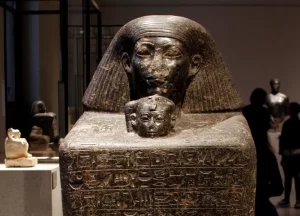
"To come from the Thirteen{th} Station to the Fourteen{th} Station we have descended the long steps of Calvary. But here in this spot is an ARCH like a cupola, which is OVER a spot that is called the Spot of the Holy Women. Because from here you can see Calvary perfectly and adjacent to it {at right angles} can be seen the tomb. Which is the reason the Armenians {guardians} have candles right here. So the women would have looked at the cross of the lord at a distance {'AFAR'}. They would have waited for the body to come down and be anointed." AND/OR: "And so here we have finished our Way of the Cross. We have closed the inside and outside doors. We heard the sound and now it is quiet. This is what happened on that first Good Friday. We have walked the way of the cross and left his body in the tomb. We have so much to reflect on by going back step by step. But we have the advantage of 2000 tears of faith. And so we can take the hand of Mary, Mary Madelene, Joseph of Arimathea, , John the Apostle those who saw where he was laid. And we can go with them to the Upper Room - in silence {'Bower'?}. Not only reflecting on what happened, but also holding onto that hope. We know that by his cross and resurrection he has set us free. In three days we return FROM THIS SOLEMN MOMENT." [Day 45 {'fortyfive'}: 13th and 14th Stations / Pilgrimage of Prayer: Lent 2024 / Golgotha and the Tomb of Jesus / Jerusalem}. Sad/ Joy to enlarge.
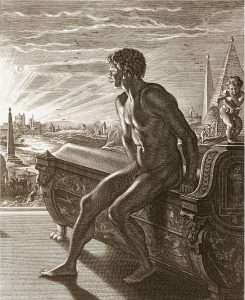
Where would Isis and her dark sister be positioned. At the foot or head of the sarcophagus?
CONTINUED: The voice of truth in a person that has not yet awakened to spiritual life, is the ''still small voice'' { a ''golden'' one?} that may be felt in the heart, listened to by the imperfect; as a half conscious dreamer may listen to the ringing of bells in the distance; but in those that have become conscious of life, that have passed through the first 'resurrection' of the spirit in their own heart, and received the baptism of the first initiation, administered by themselves, the voice of the new born 'ego' has no uncertain sound, but becomes the powerful Word of the 'Master'. [Emphasis this readers. Chapter 1, from the book by F. Hartman]. Link to the word ''teacher'', of 'Dead Sea Scroll' fame. Enlarged elsewhere.
First born.
First child.
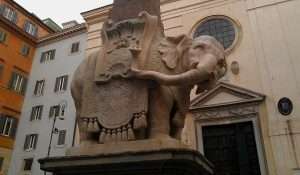
'Prince' link?
Side note: During her last season of excavation in the HK6 cemetery, Barbara Adams discovered Tomb twentythree, the largest tomb of the Naqada IIAB (c. 3600 BC) period yet known. It was surrounded by a large rectangular wooden enclosure, which is the earliest example of above-ground funerary architecture in Egypt and clear forerunner of complexes later constructed in stone, such as the Step Pyramid at Saqqara (see Nekhen News 13: 4–6). To the east of this tomb, fragments of an unprecedented life-sized limestone statue were recovered, while to the south the distinctive bones of an elephant were found lying on the surface. At Hierakonpolis, as our time was limited, we concentrated our efforts around a large depression with the densest accumulation elephant bones, and by the end of the week we hit pay dirt. The bones were highly disturbed by ancient plundering, so we were unprepared for what we found on the floor of the grave when we finally reached it, some 1.2 m below the surface. 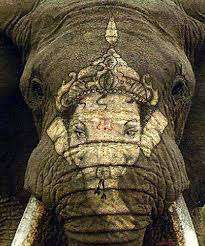 On it lay three large bones that essentially filled the entire space of our 2.5 m2 test trench (see cover), leaving little room for the workmen, and certainly no room for a basket boy or—frustratingly—an Egyptologist. I watched from the side as the workmen gradually revealed the articulated front leg of the elephant, part of its massive pelvis, and a shoulder bone that had been knocked out of place. I could also make out a dark stain spreading across the floor and the bones. When I could take it no longer, I jumped in to see what this was and I was astounded by what I saw: a fine layer of textile both above and below the bones, enveloping a remarkably well-preserved layer of blackened elephant skin! Now that we had the floor, we soon uncovered the entire extent of the elephant’s elaborate tomb (Tomb 24). With sloping and stepped walls, it was roughly oval in shape, and m e a s u r e d approximately 3x4 m. Four large postholes were found, one at each corner, two still containing remnants of acacia tree trunks over 50 cm in diameter. While these posts may have supported the roof, their size suggests they formed a superstructure above the grave or had been used to immobilize the animal for sacrifice.''
On it lay three large bones that essentially filled the entire space of our 2.5 m2 test trench (see cover), leaving little room for the workmen, and certainly no room for a basket boy or—frustratingly—an Egyptologist. I watched from the side as the workmen gradually revealed the articulated front leg of the elephant, part of its massive pelvis, and a shoulder bone that had been knocked out of place. I could also make out a dark stain spreading across the floor and the bones. When I could take it no longer, I jumped in to see what this was and I was astounded by what I saw: a fine layer of textile both above and below the bones, enveloping a remarkably well-preserved layer of blackened elephant skin! Now that we had the floor, we soon uncovered the entire extent of the elephant’s elaborate tomb (Tomb 24). With sloping and stepped walls, it was roughly oval in shape, and m e a s u r e d approximately 3x4 m. Four large postholes were found, one at each corner, two still containing remnants of acacia tree trunks over 50 cm in diameter. While these posts may have supported the roof, their size suggests they formed a superstructure above the grave or had been used to immobilize the animal for sacrifice.''
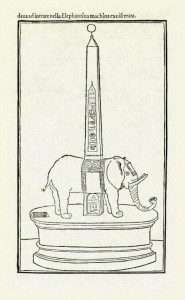
'Moving mountains'.
 ''Full clearance of the tomb floor revealed more of the elephant’s pelvis with the upper part of the legs still in articulation. Most of the tail, with the outline of the skin, flesh and fabric that once surrounded it, was also still in place. These bones along with the articulated foreleg, vertebrae and ribs, found in correct anatomical order along the southern edge of the burial, show that the elephant had been placed on its left side, facing down wadi towards the river. The thick layer of elephant skin and a strange substance that looked like bone but felt like soap, later identified as elephant fat (adipocere), confirmed that the elephant had gone to its grave fully fleshed. Although elephant bones were found scattered through all levels and over an area about 10 m in diameter, almost every bone of the animal was recovered, from tusks to tail. Clearly no expense had been spared in the creation of the tomb or its expensive contents. These included a fragment of a painted bowl (Petrie’s C ware), several black-topped beakers, and a distinctive jAR imported from the Maadi region near Cairo.....Microscopic examination by Dr Ahmed Fahmy of the organic matter collected from the elephant’s pelvic region shows that during the last days of its life it was fed mainly on rushes of the genus Juncus and another marsh plant, Ceruana pratensis. Considering its requirements, it is perhaps not surprising that cultivated plants like wheat and barley were not provided, although gathering such a large quantity of marsh plants would not have been an easy task...''
''Full clearance of the tomb floor revealed more of the elephant’s pelvis with the upper part of the legs still in articulation. Most of the tail, with the outline of the skin, flesh and fabric that once surrounded it, was also still in place. These bones along with the articulated foreleg, vertebrae and ribs, found in correct anatomical order along the southern edge of the burial, show that the elephant had been placed on its left side, facing down wadi towards the river. The thick layer of elephant skin and a strange substance that looked like bone but felt like soap, later identified as elephant fat (adipocere), confirmed that the elephant had gone to its grave fully fleshed. Although elephant bones were found scattered through all levels and over an area about 10 m in diameter, almost every bone of the animal was recovered, from tusks to tail. Clearly no expense had been spared in the creation of the tomb or its expensive contents. These included a fragment of a painted bowl (Petrie’s C ware), several black-topped beakers, and a distinctive jAR imported from the Maadi region near Cairo.....Microscopic examination by Dr Ahmed Fahmy of the organic matter collected from the elephant’s pelvic region shows that during the last days of its life it was fed mainly on rushes of the genus Juncus and another marsh plant, Ceruana pratensis. Considering its requirements, it is perhaps not surprising that cultivated plants like wheat and barley were not provided, although gathering such a large quantity of marsh plants would not have been an easy task...''
Bog 'Iron' to enlarge.
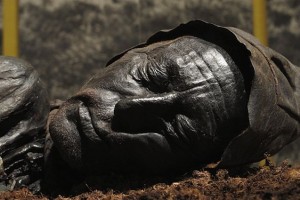
One of many 'BOG MEN' found in marshes/fenland. An initiate? Headgear optional? Calf skin or elephant scalp?
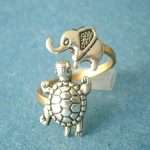
'Wedding' ring? Carapace?
Continued: "Since the days of antiquity, observers of the skies around the world have arranged stars into patterns, and always for the same reasons - to bring order and understanding to the heavens. Some groups of stars are so striking that they have been seen in a similar way in cultures widely separated in distance and time. A common strand of human thought is seen, for instance, in the way in which three different societies perceived the shape of the seven best known stars of Ursa Major that are predominately known today as the 'Plough' or 'Big Dipper'. In Homeric astronomy they represent the wain or wagon on which King Priam took Hector's body back to Troy. Edna Leigh wrote: ' Among the Arabians, the Big Dipper represents a bier and mourners. The four stars which form the wagon or cart represent the bier, and those in the handle are the mourners'. A similar funereal image was seen by the Sioux, native American Indians." ['Homer's Secret Iliad'].
A working example: ''The Ox {a 'domesticated' bovine} was central to Chinese cultural celebrations in 1997 and 2009 and will be again in 2021.'' ['Chase the Case'].
''Twelve' link''?
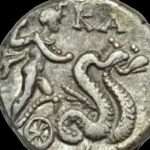

Pulling his chariot {'car'}?
A work in progress: Among the adjacent Syrians it was a Wild Boar, and in the stars of the feet of our Bear the early nomads saw the tracks of their Ghazal {Gazelle?}. Similarly, in the far North, it has been the Sarw of the Lapps, their familiar Reindeer, the Los of the Ostiaks, and the Tukto of the Greenlanders. Smyth wrote in his Speculum Hartwdlianum : Whatever may be the fact in this speculation, we know that the early English placed King Arthur's home here, and that the people of Great Britain long called it Arthur's Chariot or Wain, which appears in the Lay of the Last Minstrel : Arthur's slow wain his course doth roll, In utter darkness, round the pole.
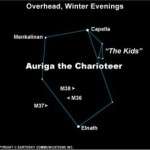
In Ireland it has been King David's Chariot, from one of that island's eariy kings; in France, the Great Chariot, and it was seen on Gaulish coins. The Anglo-Norman poet De Thaun of the 12th century had it Chaiere; and La Lande cited the more modern la Bone, the Wheel. Occasionally it has been called the Car of Bootes.
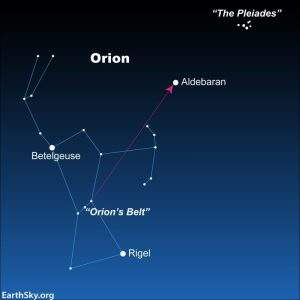 And this carries us back to another of the earliest titles for our constellation, the Wain or Wagon, — Riccioli's Amaxa, — of the Iliad and Odyssey, that Homer used equally with mApicTos, although with the same limitation to the seven stars.
And this carries us back to another of the earliest titles for our constellation, the Wain or Wagon, — Riccioli's Amaxa, — of the Iliad and Odyssey, that Homer used equally with mApicTos, although with the same limitation to the seven stars. 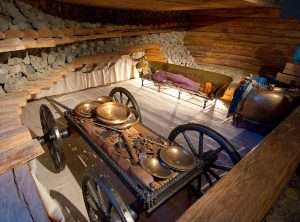 Describing the shield made by Hephaistos for Achilles, the poet said, in Sir John Herschel's rendering : There the revolving Bear, which the Wain they call, was ensculptured, Circling on high, and in all its course regarding Orion; Sole of the starry train which refuses to bathe in the Ocean ; which I have quoted, in preference to others more rhythmical, from the interest that we all feel in the translator as an astronomer, although but little known as a poet. Homer repeated this in the 5th book of the Odyssey, where Ulixes, in Bryant's translation, is: Gazing with fixed eye on the Pleiades, Bootes setting late and the Great Bear, By others called the Wain, which wheeling round, Looks ever toward Orion and alone Dips not into the waters of the deep. For so Calypso, glorious goddess, bade That, on his ocean journey, he should keep That constellation ever on his left. {Star Names and their Meanings / R. Allen}.
Describing the shield made by Hephaistos for Achilles, the poet said, in Sir John Herschel's rendering : There the revolving Bear, which the Wain they call, was ensculptured, Circling on high, and in all its course regarding Orion; Sole of the starry train which refuses to bathe in the Ocean ; which I have quoted, in preference to others more rhythmical, from the interest that we all feel in the translator as an astronomer, although but little known as a poet. Homer repeated this in the 5th book of the Odyssey, where Ulixes, in Bryant's translation, is: Gazing with fixed eye on the Pleiades, Bootes setting late and the Great Bear, By others called the Wain, which wheeling round, Looks ever toward Orion and alone Dips not into the waters of the deep. For so Calypso, glorious goddess, bade That, on his ocean journey, he should keep That constellation ever on his left. {Star Names and their Meanings / R. Allen}.
Side note: ''The MUSICAL 'Paint your Wagon' was all about prospectors 'mining' for gold.''
A work in progress: ''To get things done. John, you still haven't closed that deal; you need to paint that wagon now!''

'light oxen': "I bring up an individual type as a point of departure to talk about. The one {'emotion'?} that is strongest will pull you first." [Page 4 'Stopping and Seeing' / Translated by T. Cleary].
Side step: ''The Third-Class Carriage (French: "Le Wagon de troisième classe") is the name of at least three oil paintings entitled made by the French painter Honoré Daumier . In a realistic manner, Daumier depicts the poverty and fortitude of working class travellers in a third class railway carriage.''
 Continued: Death / rebirth? Represented with Achilles friend - 'Phoenix' of the Iliad ? Recall what Achilles represents.
Continued: Death / rebirth? Represented with Achilles friend - 'Phoenix' of the Iliad ? Recall what Achilles represents.
Question. ''order and understanding to the heavens'' = the very first representation of it? i.e.,from the 'oral' tradition? Therefore ''top/down''. Think about it relation to the Nazca Lines as 'seen from that monument {top of?} on the opposite side of the river'. Bottom/up? That desert {wilderness?} where no rain falls.
[POEM] "A Great Wagon" - by Rumi
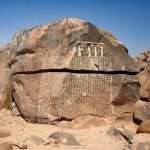
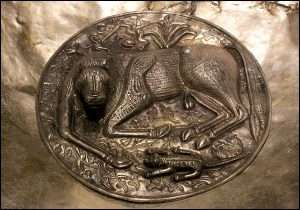
In the middle of the base plate of the Gundestrup Cauldron. Asleep. Both male animal and human. 'Lower'?
Translated by Coleman Barks:
“Out beyond ideas of wrongdoing and rightdoing,
there is a field. I’ll meet you there.
When the soul lies down in that grass,
the world is too full to talk about.
Ideas, language, even the phrase “each other”
doesn’t make any sense.
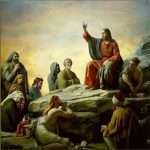
The breeze at dawn has secrets to tell you.
Don’t go back to sleep.
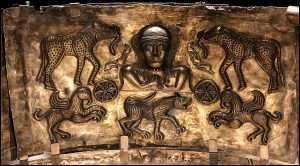
Spots and Stripes to enlarge.
You must ask for what you really want.
Don’t go back to sleep.
People are going back and forth across the doorsill
where the two worlds touch.
The door is round and open.
Don’t go back to sleep.”
And/or: ''In the UK and USA the Great Bear is known as the Plough or Big Dipper. In Egypt it is known as the Crocodile. In mesopotamia it was the Hippo. With the Chinese it was known as the Horse and Cart.'' ['Spring Constellations' / Martin Lunn / Mirthy / 2023].

Large ears. Broad back. Strong legs. As a means...? Question. Male or female or does it matter?
SIDE NOTE: "Icknield Way - no one has a clue what it means. Some say from the word ''Iceni'' - others from the ancient word ''oxen'' - the Oxen Way. But what i love, is the fact that we have this roadway snaking through all these counties, but at its heart is a mystery that none of us can decode." [ Quote from the narrator of 'Britains Ancient Tracks']. Enlarged elsewhere.
Side note {and/or refresher}: "Will the wild ox consent to serve you. Or will he spend the night at your manger?" Job.39:9. ['Book of Job' / Melissa Lees].
'Wild' in relation to 'domesticated' as a means...?

'Overlook' from the White Horse of Uffington to the 'Manger' below - with the Giants Stairway on left side.
The Icknield Way - that follows a chalk line. Why. What does 'chalk' represent. If only within this subject? Question. Which came first. Subject material or landscape or put another way - the ox or the cart? East-West? IF SO - what would S/N be represented by?

Any light within - to allow something to grow?
A work in progress: ''Gordium, the ancient capital of Phrygia, had a temple to Zeus, where a strange cart was kept. According to legend Zeus had once, through an oracle, instructed the Phrygians to take as their king the first man to ride to his temple on such a cart. The lucky man was a peasant named Gordion and he was indeed made king, his vehicle {'car'?} being taken into the temple. The cart was very special for it was held together by a strangely knotted length of cornel bark. Legend had it - that whoever succeeded in untying it - would become king/master of all Asia.'' [Page 118 'Magi: Quest for a Secret Tradition'].
'The Wain' to enlarge.
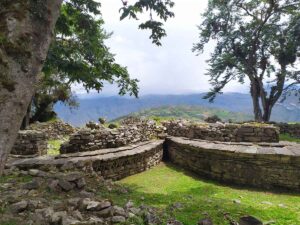
 And/or: None of these mentions makes good poetic sense. Raspberry is excellent food; the plum is a popular tree; pear-wood is so ardent that in the Balkans it is often used as a substitute for cornel to kindle the ritual needfire; the mulberry is not used as a weapon-tree; the cherry was never slighted and in Gwion's day was connected with the Nativity story in a popular version of the Gospel of Pseudo-Matthew; and the black cherry does not 'pursue'. It is pretty clear that these eight names of orchard fruits, and another which occupied the place that I have filled with 'fir', have been mischievously robbed from the next riddling passage in the poem......
And/or: None of these mentions makes good poetic sense. Raspberry is excellent food; the plum is a popular tree; pear-wood is so ardent that in the Balkans it is often used as a substitute for cornel to kindle the ritual needfire; the mulberry is not used as a weapon-tree; the cherry was never slighted and in Gwion's day was connected with the Nativity story in a popular version of the Gospel of Pseudo-Matthew; and the black cherry does not 'pursue'. It is pretty clear that these eight names of orchard fruits, and another which occupied the place that I have filled with 'fir', have been mischievously robbed from the next riddling passage in the poem......
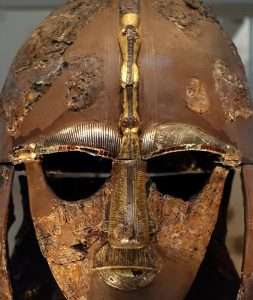
Dragon? Above or below the clouds?
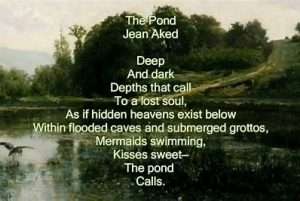
lozenge?
Side note: Another FIRST: Let us return to the Arcanum of Force. It is said that “union makes force”, and one understands by this the alliance of individual wills with a view to achieving a common aim. It is the formula for the quantitative increase of force. With respect to qualitative force, it would be appropriate to say that “unity is force”, because one is strong only in so far as there is unity of spirit, soul and body, i.e. in so far as there is virginity. It is inner conflict that renders us weak: the fact that we serve two or even three masters at the same time. The Emerald Table of Hermes states not only the principle of universal analogy, but also that of universal force: “to accomplish the miracles of one thing”. It teaches concerning the “strongest of all powers, the force of all forces, for it overcometh every subtle thing and doth penetrate every solid substance” (Tabula Smaragdina, 9). The force taught by the Emerald Table is the unity in action of heaven and earth, for thelema (the fundamental will) “doth ascend from earth to heaven; again it doth descend to earth, and uniteth in itself the force from things superior and things inferior” (Tabula Smaragdina, 8).
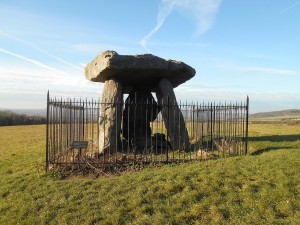
''Symbol of the lower WILL is the altar'' {Kit's Coty House?}. Where would 'higher' be represented, {and what with}?

'Spirit' or 'Soul'? Male or female feet.
And/or: These interruptions in the chalk are wide valley mouths, which in effect are but enormous funnels marking the confluence of the gathering tributaries from the watersheds in the Weald, whereupon they muster enough force to cut corridors through the chalk, downland to reach the Kent coastal plains and the Thames estuary. The first of these breaks in the chalk escarpment is the breach cut by the river Stout on its way to Canterbury, and the second and much wider breach is known as the Medway Gap...In the Medway Gap, not only do we find evidence of prehistoric settlers that may have been frequent users of the North Downs trackways, but we also find a concentration of the structures that they built to house their dead...It is pertinent to the Pilgrims Way story that the seven Medway megaliths - chambered tombs, found close to the North Down trackway - are considered by some to be the most important of the British Neolithic...they may have held a wider significance than simply being burial sites, although archaeologists are unsure of the meaning they hold...These megaliths of sarsen stones are the remains of the architecture that formed numerous long barrows...FOUR on the east side of the river Medway and THREE on the west side {'three and four'?}…." [Pages 24/25/31 'The Pilgrims Way' / Derek Bright].
''In a military unit, a muster roll, is an official list of soldiers.'' ['The Chase'].
Refresher: 'One often sees great things from the valley, only small things from the summit. Actually, come to think of it, the whole mystery of life lies within that one word. 'Seeing'!..''
Follow the title of the book to 'see' it in its {watershed'?} context.
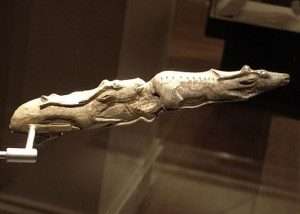
The 'tip' of a mammoth horn.
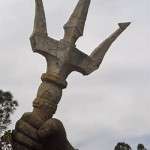 Side note: The Weald together with Forest of Dean and the Jurassic Ridge {Leicestershire} - were the three big sources of Iron in the Iron Age {700BC} = Ploughs made of it {''iron tipped ploughs''} - that changed the landscape...Why was metal so much more than making tools {ask's Alice Roberts}: 'Its value was as much symbolic as practical...something weird going on at this time....to create something from a ROCK....Bronze and iron age metals had otherworldly qualities. Religious offerings made from it which were often buried near water or placed directly into it. Water was spiritually significant...to become 'hidden' within it.'' ['Digging for Britain: Age of Bronze and Iron' ].
Side note: The Weald together with Forest of Dean and the Jurassic Ridge {Leicestershire} - were the three big sources of Iron in the Iron Age {700BC} = Ploughs made of it {''iron tipped ploughs''} - that changed the landscape...Why was metal so much more than making tools {ask's Alice Roberts}: 'Its value was as much symbolic as practical...something weird going on at this time....to create something from a ROCK....Bronze and iron age metals had otherworldly qualities. Religious offerings made from it which were often buried near water or placed directly into it. Water was spiritually significant...to become 'hidden' within it.'' ['Digging for Britain: Age of Bronze and Iron' ].
''Water was very important to those Iron Age people. In a way thats really difficult to get at and fully understand.'' [Same].
Something 'set in stone'. Recall the Help section.
''Ploughing the waves''.
Philosophical Stone.
'See' it?
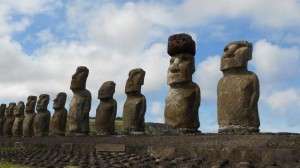
As seen from a different perspective. Across the sea?

“Most certainly, I tell you, one who doesn’t enter by the door into the sheep fold, but climbs up some other way, is a thief and a robber."
Side note: "The key essential element for growth has always been change {via motion}, and so we must, if we wish to grow, constantly strive to escape from the comfortable congestion of our daily lives - we must attempt to climb into a ''larger box'' {chamber?} whenever we can, like a snake shedding its skin through successive cycles of growth....We must actively think our way out, and the best way to do that is to constantly question - to test and probe the 'concreteness' of our world....We are engulfed in a sea of mystery which is normally never thought about or considered due to the well constructed walls of our defences." [Page 18 of the book by D. Monroe].
Try Static/dynamic as a means....?
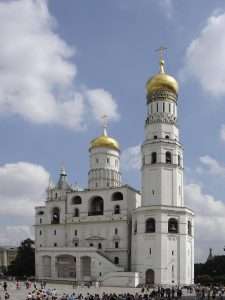
Layers of Onion. 'Fortyfive' degrees?
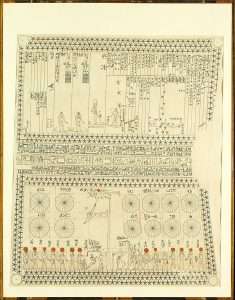
Astro ceiling in Senenmut bare tomb chamber. 'Folded'?
And/or: "The structures are particularly unusual for the enormity of their chambers. It is also noteworthy that this small area had the highest density of such structures found in the south of England outside of Salisbury Plain. Paul Ashbee noted that: 'The Kentish sarsen stones, mostly upon Blue bell Hill were, as they are now sorely depleted, the largest southern English concentration of such stones, apart from Northern Wiltshire'...'' [Page 26, same book}.
Hare Bell?
Try ''Bluestar'' or ''Morning Glory''.
AND/OR: ''Ring the BELLS that still can ring. Forget your perfect offering. There is a crack in everything. That's how the light gets in.'' {Prologue: 'Dreams of Isis' / N. Ellis].
Famine Stela?
1547 Dance of Death {woodcut engravings} - Hans Holbein.
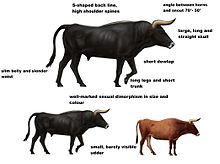
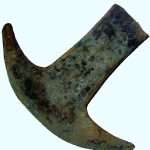
Aztec currency. Same shape as seen on the exterior of the Sarsen Stones at Stonehenge.
Present day analogy? Items found in 'pits' at the double henge recently discovered at Bulford - opposite Woodhenge, i.e.,east as opposed to west. With a river in the 'middle'. Axe heads and chalk balls found in most but in some the bones {leg/thigh?} of the prehistoric Auroch were found. The etymology of which links to both the German and British ''oxen.'' Such quotes are made by the narrators Alice Roberts and Phil Harding as: ''Putting one {i.e.,axe head} in a pit seems like a huge sacrifice." and/or ''To throw away a perfectly good axe. Why do it?'' and/or " Not on the average take away menu.'' {In reference to the Auroch bones}. Also found in one of the henges the large skull of a dog or wolf. ['Digging for Britain'. Episode 1]. All enlarged elsewhere.

Best foot forward.
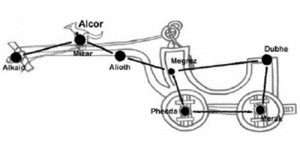
Best hoof forward? "In North Germany Alkor, as there written, has been der Hinde, the Hind, or Farm Hand; in Lower Germany, Dumke; and in Holstein, Hans Bumken, Hans the Thumbkin, — the legend being that Hans, a wagoner, having given the Saviour a lift when weary, was offered the kingdom of heaven for a reward ; but as he said that he would rather drive from east to west through all eternity, his wish was granted, and here he sits on the highest of the horses of his heavenly team. A variant version placed Hans here for neglect in the service of his master Christ ; and the Hungarians call the star Oontzol, with a somewhat similar tale. Another Teutonic ston was that their giant Orwandil, our Orion, having frozen one of his big toes, the god Thor broke it off and threw it at the middle horse of the Wagon. where it still remains."
Side note: Also in same program Albert discovers Auroch hoof marks PURPOSELY preserved {Blick Mead - one mile away}. Antlers of same either side to the southern entrance to Stonehenge. The Orkneys {N. Oliver} recently discovering Cattle {cow?} bones North of this island. North {'female'?} South {'male'} OR Vice versa? as a means....? Question. Where would the midpoint be between those two poles? Try ''furrow'' / ''Taurus'' to attempt a mind set.
And/or: In situ blue stones left unfinished N/Wales. Stones left in situ at Orkney. Obelisks left in situ at Aswan / Egypt. Same applies on Easter Island and in the Mayan/Aztec cultures. Marble stones in Greece,
Finished/Unfinished to enlarge.
A working example: ''The Sphinx Temple was built on the foundation of the preexisting northern enclosure wall of the Valley Temple. This wall was entirely removed apart of a small portion, which was incorporated into the Sphinx Temple. Unlike the Valley Temple, both the Sphinx enclosure and the Sphinx Temple remained unfinished.''
''The Sphinx was intended to be part of a much larger temple complex. But Pharaoh Khafre's vision was never fully completed. In 1978 in a corner of the Sphinx's quarry excavations found three stone blocks, abandoned as laborers were dragging them to build the Sphinx Temple.''
Recall the 'three' boulders on Elephant Island.
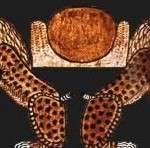
''Before and behind''?
And/or: "He who aspires to be a sage and to know the Great Enigma of Nature must be the heir and despoiler of the Sphinx: his the human head, in order to posses speech; his the eagles wings, in order to scale the heights; his the bulls flanks, in order to furrow the depths; his the lions talons, to make a way on the right and the left, before and behind." [Quote taken from the chapter entitled 'The Candidate' from the book by E. Levi].
REFRESHER: ''The cheerful brilliance of the morning lent youth to Earth's old bones, touched the peak with gold, gleamed along the river and put the gardens en fete..." ['Her-Bak']. Try ''horn'' {i.e.,Al-Qurn].
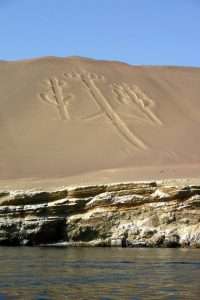
A trident shape symbol. The most ancient one. The first one. In the bay {peninsula} at Paracus. The originators of the Nazca culture. Three parts water; one land?
Analogy: {and/or: something hinted at}: "To get a clear view will require a lot of hard work, for in one sense you will be embarking {'harbour'?} on a voyage of discovery, climbing a new peak of personal experience, and that is no easy task." [Page 12 from the book by Marian Green].
And/or: "Many years ago the English psychologist, F. W. H. Meyes, suggested that - ''hidden in the depth of our being is a rubbish heap as well as a treasure house''.
"I will give you the treasures of darkness and the secret places." {Isaiah 45,7}.
Refresher: "To sacrifice a 'lower' value to a 'higher' value is to give substance and power to the desire which has been 'sacrificed'. If this higher value is of a 'spiritual' order, the spiritual power is attracted by this desire, and givers to the sacrificer a power of domination over his lower states." ['Journey into the Light'].
"In basic form an altar is simply a table; a focus of consciousness."
 TABLE MOUNTAIN? and/or {in its lower form} a foundation to build on.
TABLE MOUNTAIN? and/or {in its lower form} a foundation to build on.
"The altar of sacrifice demonstrates that where your treasure is there will your heart be also."
Among others try ''Axe'' / ''Labyrinth'' - all as an external expression of something internal?
As is: ''Her new husband will be the suiter who wins her in a sporting contest - involving archery and 12 axe heads. Whoever could string Odysseus's great bow and then fire an arrow through the 12 axe heads would win her 'hand' in marriage." ['Gods and Monsters: Homer's Odyssey / Simon Armitage].
Odds/evens.
Mind set?
12 = solar. Arrows = lunar?
Benjem Stark? {Game of Thrones}.
 As an example: "I have mentioned the fact of the three axes of the Temple, but not the significance of them. An axis is an imaginary and ideal line about which a moving body revolves; in geometry, an axis is equally imaginary, a line without thickness, an abstract moment. The axis is 'occult', immaterial, a mental point of reference. It is an invention of man designed to make the principle of the axis comprehensible to our reason. Esoterically, the axis represents the Absolute, the still center of all movement throughout the universe, from atoms to Galaxies." [Page 181 'Serpent in the Sky'].
As an example: "I have mentioned the fact of the three axes of the Temple, but not the significance of them. An axis is an imaginary and ideal line about which a moving body revolves; in geometry, an axis is equally imaginary, a line without thickness, an abstract moment. The axis is 'occult', immaterial, a mental point of reference. It is an invention of man designed to make the principle of the axis comprehensible to our reason. Esoterically, the axis represents the Absolute, the still center of all movement throughout the universe, from atoms to Galaxies." [Page 181 'Serpent in the Sky'].
To understand the above generalisation of information - which the above author uses constantly throughout his book - try ''horizontal/vertical'' in the external sense of the word and ''yoke'' in the internal sense - in order to ''get ones head'' around that mind set. But most important of all - ALL IN RELATION TO THAT UNIVERSAL ''bit''.
Stonehenge-woodhenge-Bulford = an 'arc' shape - like the crescent of a moon? More importantly N/E - S/W. Hence the reason ''openings to the North'' if only in the construction {development?} -- in its early stages {'elder'?}. Just as the same with all those monuments on the Giza complex.
Side note: ''North is the quarter associated with Law {Moses link?}, the Element of Earth, powers of purification, reflection, and 'death'." ['The Prophetic Vision of Merlin'].
Sermon on the Mount?
N.B. Moses pulled from a 'basket' in Tanis - N/E Nile delta. Try that one.
Question. IF north = 'Law' - then south = 'Grace'?
S/W or S/E?

Herdsman or ploughman. Ploughshare?

'light oxen': "I bring up an individual type as a point of departure to talk about. The one {'emotion'?} that is strongest will pull you first." [Page 4 'Stopping and Seeing' / Translated by T. Cleary].
'Eleven' relative to 'twelve' relative to 'thirteen' with an understanding in mind. Representational of. And/or...
''Eleventh hour'' in relation to ''noon'' = an impending result - one way of the other = 'high noon'? {i.e.,zenith}.
Side note: {something hinted at?}: ''The European quest for the Philosophers Stone began on the 11th February 1144. On this day a certain Robert of Chester finished the first translation of the Arabic chemical text into Latin. Called the Book of the Composition of Alchemy - it was written by Morienus, a Christian ascetic who taught the Art to Prince Kallid ibn Yazid, one of the first Moslems to study our Philosophy.'' [Page 99 'Mercurius' / P. Harpur].
Refresher: 'The Twelve Keys' by Basil Valentine. [Chapter thirteen 'The Chemistry of Alchemy' / Cobb/Fetterolf/Goldwhite]. See it?
'The White {chalk} Horse'. Question. What does the 'horse' represent?
"...But as soon as something happens which does arouse and challenge us, our previous and unnoticed passions immediately break out like uncontrolled horses that have long been kept unexercised and idle..." ['The Philokalia'].

Pulling something?
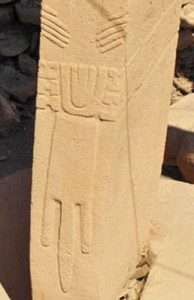
''fingers''.
A {working?} example in the 'Micro' sense of the 'word': "Possibility is one thing, and the realization of the possibility is quite a different thing. Let us now try to see what this possibility depends upon and what its realization means.' Then G. repeated briefly all that had been said before about the 'structure' of man and the world. He drew the diagram of the ray {key} of creation and the diagram of the four {key} bodies of man. But in relation to the four bodies of man he introduced a detail which he had not mentioned before. He again used the Eastern comparison of man with a 'carriage', a 'horse', a 'driver', and 'master' {''teacher'' link} - and drew the diagram with one addition that was not there before. 'Man is a complex organization,' he said, 'consisting of four parts which may be connected or unconnected, or badly connected. The carriage is connected with the horse by shafts, the horse is connected to the driver by reins, and the driver is connected to the master by the master's voice. But the driver must hear and understand the master's voice. He must know how to drive and the horse must be trained to obey the reins. As to the relation between the horse and the carriage, the horse must be properly harnessed. Thus there are 'three' connections between the 'four' sections of this complex organization. If something is lacking in one of the connections, the 'organization' cannot act as a single whole...

Isle of Wight flag: "The island that lifts up out of the sea." and/or "Place of division." Lozenge?
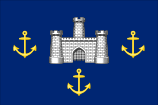
Council flag. 'Delos'?
Side note: " A few years later he [Wolfgang Pauli] was to come across the same numbers again in Carl Jung's psychology, based as it was in alchemy. He was adamant that ''in neither case was it by any means Mr. C. Jung who suggested it to me, nor was there an advance conscious intention for me to grapple with figuring out the problem of three and four. Consequently i am rather certain that objectively there is an important psychological and, perhaps, natural philosophical problem connected with these numbers." Enlarged elsewhere.
'Struggle/Wrestle' to enlarge.
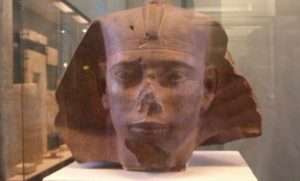
A base metal is a common and inexpensive metal, as opposed to a precious metal such as gold or silver.[1] In numismatics, coins often derived their value from the precious metal content; however, base metals have also been used in coins in the past and today.... Examples include iron, nickel, lead and zinc. Copper is also considered a base metal because it oxidizes relatively easily." "Copper nose?" 'Adding/subtracting'?

Astro ceiling in Senenmut bare tomb chamber. 'Folded'?
And/or: "What's really nice about this Henry III 'cut' half penny {1250-72} is that before it was broken it had evidence of being folded slowly over time by hand. And there is some study in archaeology and from historical sources, that coins are often in an act of devotion folded over during pray." ['Digging for Britain: Anglo Saxon Gold and Nuns in Central England.' / S11 EP2].
Folded /UNfolded.
The archaeology site is at Ankerwycke {on the north bank of the Thames} - S/E of Winsor but WEST of the CITY of London.
"On the south bank is where the Magna Carta was signed between the king and the rebel barons. And, of course, the Archbishop was there orchestrating it all. It's a very male story. Over on the north bank we have a more hidden history - involving women." [Alice Roberts].
Analogy: Amun ='hidden'. Question. What represents the female aspect?
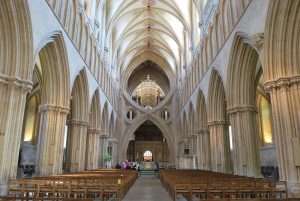
Anchor point?
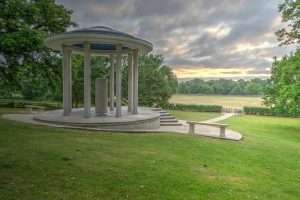
ABA tribute to Magna Carta at Runnymede with stone benches installed in 2015. 'Eight'?
""On the opposite bank of the River Thames are the meadows of Runnymede and the Yew tree is said to have been witness to the sealing of Magna Carta. The tree is also said to be the location where Henry VIII courted Anne Boleyn in the 1530s."
"The British halfpenny coin was worth 1/480th of a pound sterling. At first in its 700-year history it was made from silver, but as the value of silver increased the coin was made from base metals. It was finally abandoned in 1969 as part of the process of decimalising the British currency.....

Sutton Hoo purse clasp: Wolfs / eagles and ducks.
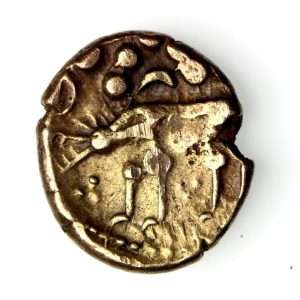
Teeth for a 'key'? A noble coin?
It was long considered that the first halfpenny coins were produced in the reign of King Edward I (1272–1307), with earlier requirements for small change being provided by "cut coinage"; that is, pennies cut into halves or quarters, usually along the cross which formed a prominent part of the reverse of the coin. However, in recent years metal detectorists have discovered a few halfpennies of Kings Henry I (1100–1135) and Henry III (1216–1272) – these are extremely rare and very little is known about them; they have all been found in the London area, where they circulated alongside the more common cut coinage, and while it is possible that these coins were patterns or trials, it is clear that they did see circulation. It is possible that there are other coins or issues still to be discovered."
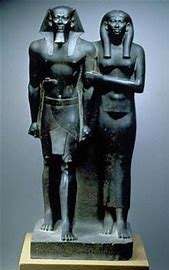
Wednesday's child.
And/or: At Huntingdon {near Ermine Street and the town of Godmanchester}- a sacred area enclosed on three straight sides {trench} that was occupied during the late Roman Period {Dark Ages}. Finds include smashed pots placed purposely in shallow ground {'stacked'?}. The 'handle' of a decorated fired vase {flagon} purposely broken off before being buried {"missing its head"}. Brooch found with pin. Paintwork "smudged," artwork unfinished {Tutankhamun link?}. Other items found: hand sickle / scythe {with handle}- snake rings + a 'little' ring with spirals at each end. Very similar to the one found in the 'Valley of the Monkeys' {West branch of Valley of Kings}: "An industry could have been present selling 'small' miniature reproductions of the real thing as votive offerings." ['Digging For Britain'].
'Mother of Pots'?
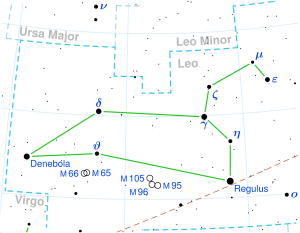
Question mark or sickle? Regulus = 'handle'.
"Three and One?"
'Emptiness' / 'headless' to enlarge.
Decommissioned?
'Iron {fire} in the ascendency?
What's the remedy?
 And/or: Meditation in Luxor Temple: "Perhaps there is a room near or below your heart or in your middle area. Maybe the space is a little cluttered with old baggage and worn-out unused things. Once you have found this space, see what you have to move to clear it....Now in this cleared space, we begin to create our inner temple. It will take its new shape as we focus our minds eye within....Notice that there is an altar here that has been prepared for you. It is bare {'naked'?} and ready to recieve your sacred items. Bring the items you hold sacred: crystals, candles, statues, bells, drums etc....You see a doorway that you had not noticed before. It may be beyond your altar or in a different part of the temple that you had not explored. As you approach this gateway, you observe how it is made. There may be something writen on the door or on the lintel...THERE IS NO HANDLE on this door. It can only be opened with the mind...." [Page 213/14 'Invoking the Scribes of Ancient Egypt'].
And/or: Meditation in Luxor Temple: "Perhaps there is a room near or below your heart or in your middle area. Maybe the space is a little cluttered with old baggage and worn-out unused things. Once you have found this space, see what you have to move to clear it....Now in this cleared space, we begin to create our inner temple. It will take its new shape as we focus our minds eye within....Notice that there is an altar here that has been prepared for you. It is bare {'naked'?} and ready to recieve your sacred items. Bring the items you hold sacred: crystals, candles, statues, bells, drums etc....You see a doorway that you had not noticed before. It may be beyond your altar or in a different part of the temple that you had not explored. As you approach this gateway, you observe how it is made. There may be something writen on the door or on the lintel...THERE IS NO HANDLE on this door. It can only be opened with the mind...." [Page 213/14 'Invoking the Scribes of Ancient Egypt'].
Eye of Horus.
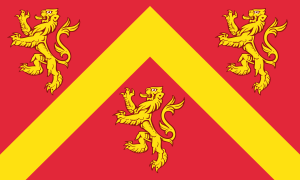
Flag of Anglesey.

Flag of Zaragoza.
REFRESHER: "He who aspires to be a sage and to know the Great Enigma of Nature must be the heir and despoiler of the Sphinx: his the human head, in order to posses speech; his the eagles wings, in order to scale the heights; his the bulls flanks, in order to furrow the depths; his the lions talons, to make a way on the right and the left, before and behind." [Quote taken from the chapter entitled 'The Candidate' from the book by E. Levi].
And/or: ''These 'angels' are described as a composite of Ox, Lion, Eagle and Man. They are the 'Elements' themselves on a higher level, being the Fixed signs of Taurus, Leo, Scorpio, and Aquarius...Strength and Patience for the Ox, courage and nobility with the Lion, swiftness and aspiration with the Eagle, and intelligence and devotion with Man.'' [Page 31 'Ladder of Lights' / W. Gray].
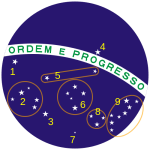
Cursus?
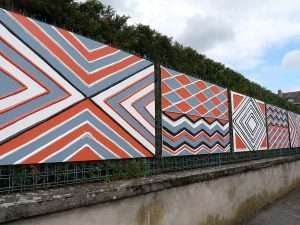 From a different perspective: ''Approximately 5500 years ago CAUSEWAY camps like Crickley Hill and Robin Hood's Ball were abandoned {decommissioned?}, their decline heralded the end of hostile activities in Britain, and in the relative peace that followed, monumental construction in and around Stonehenge began once more - with the digging of huge oval ditches {'ecliptic' and/or 'Precession' link?}. The largest of which is the Greater Cursus...Interpreting the Cursus has been very difficult....Over two and half kilometres long - required a huge area to be cleared - before 20,000 tons of chalk was excavated to form its immense ditch....Flint axes used in huge quantities."
From a different perspective: ''Approximately 5500 years ago CAUSEWAY camps like Crickley Hill and Robin Hood's Ball were abandoned {decommissioned?}, their decline heralded the end of hostile activities in Britain, and in the relative peace that followed, monumental construction in and around Stonehenge began once more - with the digging of huge oval ditches {'ecliptic' and/or 'Precession' link?}. The largest of which is the Greater Cursus...Interpreting the Cursus has been very difficult....Over two and half kilometres long - required a huge area to be cleared - before 20,000 tons of chalk was excavated to form its immense ditch....Flint axes used in huge quantities."
Squares / Circles. Arcs and straight lines as a means.....?
Huntingdon is a market town in the Huntingdonshire district of Cambridgeshire, England. The town was given its town charter by King John in 1205.....
Huntingdon was founded by the Anglo-Saxons and Danes. It is first mentioned in the Anglo-Saxon Chronicle in 921, where it appears as Huntandun. It appears as Huntedun in the Domesday Book of 1086. The name means "The huntsman's hill" or possibly "Hunta's hill".[5]
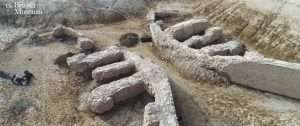
Huntingdon seems to have been a staging post for Danish raids outside East Anglia until 917, when the Danes moved to Tempsford, now in Bedfordshire, before they were crushed by Edward the Elder. It prospered successively as a bridging point of the River Great Ouse, a market town, and in the 18th and 19th centuries a coaching centre, notably at the George Hotel. The town has a well-preserved medieval bridge that used to serve as the main route of Ermine Street over the river. The bridge only ceased to be the sole crossing point to Godmanchester in 1975, with the building of what is now the A1307 (formerly A14) bypass."
Continued: "Things like Google Translate can match the hidden patterns between different human languages and translate them....AI tools can find these invisible patterns that we cannot see and link them to patterns between languages....It finds the shapes of certain phrases - from billions of data - without the need of a dictionary. It does not even know that it is dealing with a language." ['Royal Institution Xmas Lectures' / 2023].
'Heraldry'?
Could it be used someday for a mindset - within {say} a curriculum?
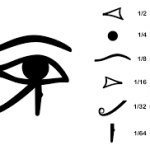
An objective eye?
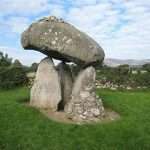
Three or four?
Continued: "Jung emphasizes that the phenomenon of fourfoldness is not just an invention of the conscious mind but a ''spontaneous product of the objective psyche''. A fundamental theme of mythology could be understood by referring it back to the inorganic in man....The answer to the question about the origin of the exact divisions into four can only be sought where fourfoldness and threefoldness appear, as psychic activities and just physical events {The combination of both as the twelvefold division of the world-clock, whether read from the sky or not, is a remarkable mental achievement}. It is not only the psychologist that finds fourfoldness and threefoldness side by side, Ancient records speak of the part played of the number three in the layout of cities....And/or: Always three animals were sacrificed on the altar four in the pit." [Pages 17-20 'Science of Mythology' / Jung and Kerenyi ].
Higher/lower? i.e., in the metaphysical SENSE of the word.
Refresher: " I make no secret whatsoever of the fact that my rather revolutionary model of the atom came to me in a dream.'' Niels Bohr.
Think about it all in relation to that universal ''bit''. Something that the author of 'Fingerprints of the Gods' does not. Believing the remains of a 'lost' civilization will be found beneath miles of ice due to a past 'geological' cataclysm. The originators of all the 'esoteric' literature - that he discusses with John West the author of 'The Serpent in the sky'. Questions that lead to more questions. All that ''information'' in the form of symbols/archetypes is WITHIN man/woman. Always has been, always will be.

A 'Flat head'?
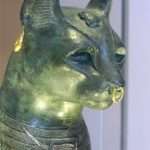
'fortytwo' cm High
And/or: "An atom is a moment of equilibrium. So is a cat. Equilibrium is a state in which positive and negative forces are balanced. Modern science with its doctrine of entropy and negative entropy, expresses the principle without recognizing its functional significance. The Western astrological zodiac expresses the principle both precisely and completely. Libra, The Balance, is the seventh sign. Seven signifies {symbolizes?} the union of spirit and matter - of Three and Four. One of the forms that traditionally expresses the meaning of Seven is the pyramid - square base symbolizing four elements and the triangular sides the three modes of spirit." ['Serpent in the Sky'].
A working example {synchronistic?}: Callie from Flat Head Valley, Montana. North-West Montana. Has a very large fresh water lake. Embroiders seven porcupine quills in a garment: ''Seven is a number important to me. The seven represent the directions - North, South, East and West together with above, within and below." ['Alone: Over the Edge' / History Channel. 2020].
''A sign for Libra represents the setting sun. This was the land of Hyperborean, which was north of the Danube's source, and was the great center of the cult of Boreas, the north wind. The golden apples of Hera are the stars." [Page 53/54 'Pathways to the Zodiac'].
''The Iron Gate {''towards the end of it''} - is the name of a gorge on the River Danube.'' ['The Chase'].
Delta?
Alexanders 'gate'? {wall}.
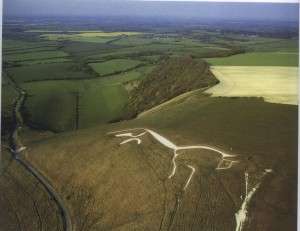 Continued..."The connections are therefore no less important than the actual 'bodies'. Working on himself man works simultaneously on the 'bodies' and on the 'connections'. Work on oneself must begin with the driver. The driver is the mind. In order to hear the 'masters' voice, the driver, first of all, must not be 'asleep', that is, he must wake up. Then it may prove that the master speaks a language that the 'driver' does not understand.....
Continued..."The connections are therefore no less important than the actual 'bodies'. Working on himself man works simultaneously on the 'bodies' and on the 'connections'. Work on oneself must begin with the driver. The driver is the mind. In order to hear the 'masters' voice, the driver, first of all, must not be 'asleep', that is, he must wake up. Then it may prove that the master speaks a language that the 'driver' does not understand.....

light oxen': "I bring up an individual type as a point of departure to talk about. The one {'emotion'?} that is strongest will pull you first." [Page 4 'Stopping and Seeing' / Translated by T. Cleary].
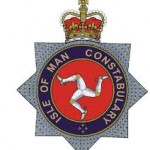 "Symbolically, the number three refers to the establishment of a relationship between two previously unrelated or opposing principles...'Understanding' is an emotional, rather than an intellectual, function. It comes from the heart rather than the head. We could say that the number 'three' is a quality of the soul {'carriage'?} rather than of the spirit. The more we understand, the more we are able to reconcile and relate." Continued elsewhere. [Page 122, 'Mapping the Psyche' volume 1. C. Martin].
"Symbolically, the number three refers to the establishment of a relationship between two previously unrelated or opposing principles...'Understanding' is an emotional, rather than an intellectual, function. It comes from the heart rather than the head. We could say that the number 'three' is a quality of the soul {'carriage'?} rather than of the spirit. The more we understand, the more we are able to reconcile and relate." Continued elsewhere. [Page 122, 'Mapping the Psyche' volume 1. C. Martin].
'Tripod' to enlarge.
Hippodrome?
And/or: "All myth, legend and poetry derives from the Mysteries in some sense they are the potential sparks to ignite a sense of the wonders of creation and the purpose of life. Almost any of the countless themes, characters, fragments of tales — whether from ancient Greek, Egyp- tian or Welsh Triads can be quarried and utilized for exploration individually or with a group. Once you begin to work with the matter of the mysteries you will find it like controlling a team of eager, high-stepping horses. Feel the reins in your hands and the pull of their heads at the bit. Your chariot will carry you far, across land and sea, both in Inner and Outer realms.
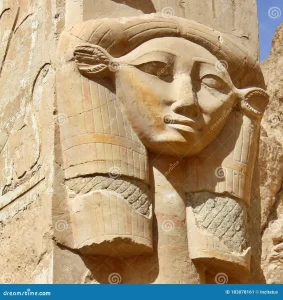
Spirit or soul?

Solitary 'tooth' {and liver} found in a 'square' box belonging to Hatshepsut.
The mysteries are not something locked away in dusty tomes on a library shelf — they are here and now, living lines of contact with which to enter a wholly different dimension .
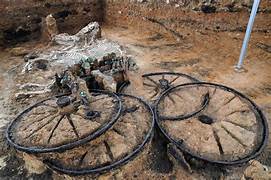
Two horse skeletons and the remains of a chariot dating back to the Iron Age have been found on a housing development in East Yorkshire.
Archaeologists started working on the Pocklington site in 2014 and have excavated more than 75 burial graves, known as barrows.
They described the latest find as "highly unusual".
Other finds include human skeletons, including a "young warrior", swords, spears and shields.
The object of the Hermetic search is that life which is capable of being transmitted to a specific being in order to lead that being to its own perfection....this available ‘life-essence’ is called the King, cosmic man, but it must be recognized that attaining the aim of the Hermetic opus is not an end; it is the beginning of the light that illuminates reality . . the true King, is the living being who has reached the stage of immortal and conscious return to the source of the SOUL that animates him (298) .
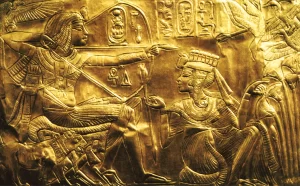
Giving directions?
This return to the source is the objective that animates all magical work, fuelling Orphite and Hermeticist, Gnostic and Cathar alike . As we shall see in the next chapter, it is present in esoteric Christianity as well as the Hermetic schools. Divine knowing is all important if we are to find our way further than the first few steps on the road we have elected to travel." [Page 240 'The Western Way'].
And/or: Princess cut diamonds appear square from the face-up, but are shaped like inverted pyramids with two to four chevron patterns on the underside of the cut. They are the second most sought-after diamond in engagement rings only behind round brilliant cut diamonds.
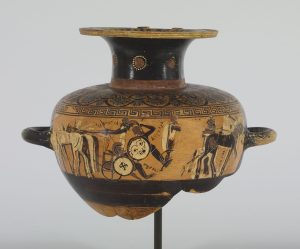
This "hydria", a water-jug, depicts a battle from the Trojan War in which two of the war's greatest heroes, Achilles and Memnon, clash in the presence of their mothers, the goddesses Thetis and Eos. Each warrior has his chariot standing by, with charioteers at the ready. Inscriptions, in the Corinthian alphabet, identify the figures. The painter was obviously proud of his ability to write, a skill that was not widespread.
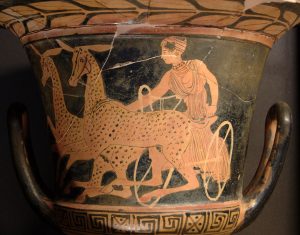
Biga of Artemis drawn by hinds (Boeotian red-figure kylix, 450–425 BC)
Side note: The biga (Latin; pl.: bigae) is the two-horse chariot as used in ancient Rome for sport, transportation, and ceremonies. Other animals may replace horses in art and occasionally for actual ceremonies. The term biga is also used by modern scholars for the similar chariots of other Indo-European cultures, particularly the two-horse chariot of the ancient Greeks and Celts. The driver of a biga is a bigarius.[1]
Other Latin words that distinguish chariots by the number of animals yoked as a team are quadriga, a four-horse chariot used for racing and associated with the Roman triumph; triga, or three-horse chariot, probably driven for ceremonies more often than racing (see Trigarium); and seiugis or seiuga, the six-horse chariot, more rarely raced and requiring a high degree of skill from the driver. The biga and quadriga are the most common types.

The Roman Goddess of Dawn. Whose brother was the sun, and sister the moon. Painted by the same artist, as that of The Shepherds of Arcadia. Boehmes first book after twelve years was called Aurora, supposedly never finished. As are a number of publications. Purposely. Question. Why? All dried up?[ Eclipse Of The Sun: An Investigation Into Sun and Moon Myths by J. McCrickard].

Charioteer?
The earliest reference to a chariot race in Western literature is an event in the funeral games of Patroclus in the Iliad.[4] In Homeric warfare, elite warriors were transported to the battlefield in two-horse chariots, but fought on foot; the chariot was then used for pursuit or flight.[5] Most Bronze Age chariots uncovered by archaeologists in Peloponnesian Greece are bigae.[6]
The date at which chariot races were introduced at the Olympian Games is recorded by later sources as 680 BC, when quadrigae competed. Races on horseback were added in 648. At Athens, two-horse chariot races were a part of athletic competitions from the 560s onward, but were still not a part of the Olympian Games.[7]
In his Etymologiae, Isidore of Seville explains the cosmic symbolism of chariot racing, and notes that while the quadriga, or four-horse chariot, represents the sun and its course through the four seasons, the biga represents the moon, "because it travels on a twin course with the sun, or because it is visible both by day and by night – for they yoke together one black horse and one white."[22] Chariots frequently appear in Roman art as allegories of the Sun and Moon, particularly in reliefs and mosaics, in contexts that are readily distinguishable from depictions of real-world charioteers in the circus.[23]

In North Germany Alkor, as there written, has been der Hinde, the Hind, or Farm Hand; in Lower Germany, Dumke; and in Holstein, Hans Bumken, Hans the Thumbkin, — the legend being that Hans, a wagoner, having given the Saviour a lift when weary, was offered the kingdom of heaven for a reward ; but as he said that he would rather drive from east to west through all eternity, his wish was granted, and here he sits on the highest of the horses of his heavenly team {'High Street'?}. A variant version placed Hans here for neglect in the service of his master Christ ; and the Hungarians call the star Oontzol, with a somewhat similar tale. Another Teutonic ston was that their giant Orwandil, our Orion, having frozen one of his big toes, the god Thor broke it off and threw it at the middle horse of the Wagon. where it still remains.
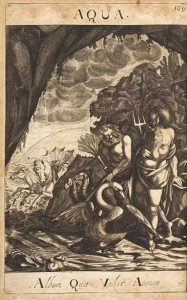 Luna in her biga drawn by horses or oxen was an element of Mithraic iconography, usually in the context of the tauroctony. In the Mithraeum of S. Maria Capua Vetere, a wall painting that uniquely focuses on Luna alone shows one of the horses of the team as light in color, with the other a dark brown. It has been suggested that the duality of the horses drawing a biga can also represent Plato's metaphor of the charioteer who must control a soul divided by genesis and apogenesis.[24]
Luna in her biga drawn by horses or oxen was an element of Mithraic iconography, usually in the context of the tauroctony. In the Mithraeum of S. Maria Capua Vetere, a wall painting that uniquely focuses on Luna alone shows one of the horses of the team as light in color, with the other a dark brown. It has been suggested that the duality of the horses drawing a biga can also represent Plato's metaphor of the charioteer who must control a soul divided by genesis and apogenesis.[24]
Greek and Roman art depicts deities driving two-yoke chariots drawn by a number of animals. A biga of oxen was driven by Hecate, the chthonic aspect of the Triple Goddess in complement with the "horned" or crescent-crowned Diana and Luna, to whom the biga was sacred.[25] Triptolemus is depicted on Roman coins as driving a serpent-drawn biga as he sows grain in response to Demeter's appeal to him to teach mankind the skill of agriculture, such as on an Alexandrine drachma.
Side note: High Street is a fell in the English Lake District. At 828 metres (2,717 ft), its summit is the highest point in the far eastern part of the national park. The fell is named after the Roman road that ran over the summit.
And/or: The Eden Valley is one of Cumbria's best-kept secrets and lies between the Pennines to the east and the Lake District fells to the west. Eden is well named – a mixture of lush countryside, picturesque hamlets, sandstone farms, traditional towns and clusters of woodland makes this one of the most unspoiled areas of the country.
The River Eden flows through the Eden Valley, Cumbria's longest waterway and a reserve for creatures such as salmon and otters. In fact, along with Ullswater, the whole river and its tributaries are a designated Special Area of Conservation, highlighting its importance as a habitat.
'Boundary'.

Refresher: "Bootes as the Herdsman {'Ox Driver'} of the heavens is an ancient concept..."

Alte Burg. Described as an oval shape 'hippodrone'. The first of its kind.
A working {oxen?} example - but now in the 'Macro' sense of the 'word': "Other aspects of the constellation directed her eyes to the coastline, to Mount Ossa and to Mount Pelion, while its strangely shaped 'head' and 'legs' projected an image of the Bay of Pegasus itself. She then turned to the Catalogue of Ships. Of the region surrounding the Bay of Pegasus, Homer says the regiment of men came from 'Pherae and the populous city of Iolcus', and they were led by Eumelus. She delved into the Iliad for other references to Eumelus, and discovered that the descriptive narrative she found could be linked to the visual qualities of Pegasus and its relationship to adjacent constellations. Eumelus is famous for his 'matched' pair of horses, described thus: 'Eumelus mares were foremost in the chase, fierce in the fight their nostrils breathed a flame. Their height, their colour, and their age the same.' The E. V. Rieu translation says that the horses were joined by a yoke that was as true as a plumb line. A modern chart of the constellations shows that two of the brightest stars 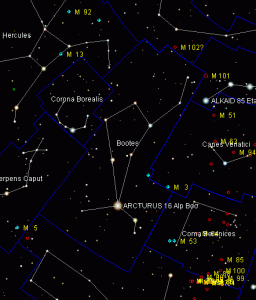 in Pegasus {Scheat/Markab} are indeed the same colour and brightness. What is more, when the constellation is at its highest point as it crosses the sky Scheat lies almost directly north of Markab in the Square of Pegasus and an imaginary line drawn from them down to the earth {'horizontal'} - would make an angle of almost 90 degrees. Later we were to find evidence of the astronomical association of Eumelus, when during the funeral games in Book 23, his yoke breaks...Scheat {one end of the yoke} is a variable star that can be seen with the naked eye - which is identified, by Homer, as the 'snapping yoke'...Eumelus then tumbles from his chariot and falls beneath its wheel - {represented?} with ''the Circlet of Pisces that lies below Pegasus in the sky." ['Homer's Secret Iliad'].
in Pegasus {Scheat/Markab} are indeed the same colour and brightness. What is more, when the constellation is at its highest point as it crosses the sky Scheat lies almost directly north of Markab in the Square of Pegasus and an imaginary line drawn from them down to the earth {'horizontal'} - would make an angle of almost 90 degrees. Later we were to find evidence of the astronomical association of Eumelus, when during the funeral games in Book 23, his yoke breaks...Scheat {one end of the yoke} is a variable star that can be seen with the naked eye - which is identified, by Homer, as the 'snapping yoke'...Eumelus then tumbles from his chariot and falls beneath its wheel - {represented?} with ''the Circlet of Pisces that lies below Pegasus in the sky." ['Homer's Secret Iliad'].
And/or: ''In Greek mythology, two giants piled Mount Pelion on Ossa (Kíssavos or Óssa), another mountain in Thessaly, in order to scale Olympus (Ólympos), but Apollo killed the giants before they could make the attempt. Pelion was also the legendary home of Centaurs.''
'Tower of Babel' to enlarge.
And/or: ''Nor are fatuous and befogged sparklings wanting in our own day who dream that they are stars and are thought equal to the sun. May such arogance and climax of ambition be far from Eugenius. It were surely to pile Pelion upon Ossa.'' [Page 3 'Works of Thomas Vaughan: Eugenius Philalethes].

The Corona Borealis is Caer Arianrhod whose secret citadel is the tower of initiation. Ruler of the heavens and indicator of our true north is Arthur's Wain, or the Great Bear. And, because no king can travel without his poet, LYRA is the Harp of Arthur, Telyn Arthur. Taliesin, the supreme seer-poet, has his dwelling in the region of the ''Summer Stars''. [Page 13 'Mabon and the Mysteries of Britain'].
Top/down - bottom/up? Recall what ''23'' represents {in relation to ''45''?}.
Side note: "Twentythree foot long; from bow to stern - deep seated with men.'' William Bligh Journal.
''Funeral games'' relative to: "In time-honoured tradition, Achilles sponsors funeral games in which such events as a chariot race, wrestling, running and archery are held in memory of Patroclus."
Working example: ''In golf, the right to tee off first when playing a hole is called The Honour.'' ['The Chase'].
Side note: Recall Gilgamesh's 'best' friend? Link it to the word ''memory'' {i.e., what it IMPLIES within subject material}.
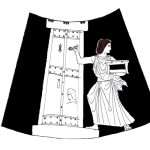 REFRESHER: The oldest known texts - of the Ten Commandments - known anywhere on the planet, are to be found in the Dead Sea Scrolls....with one alteration to the norm - ''Remember'' the Sabbath instead of ''keep'' the sabbath.'' ['Expedition Unknown : Mysteries of the Dead Sea Scrolls' / Sat. TV].
REFRESHER: The oldest known texts - of the Ten Commandments - known anywhere on the planet, are to be found in the Dead Sea Scrolls....with one alteration to the norm - ''Remember'' the Sabbath instead of ''keep'' the sabbath.'' ['Expedition Unknown : Mysteries of the Dead Sea Scrolls' / Sat. TV].
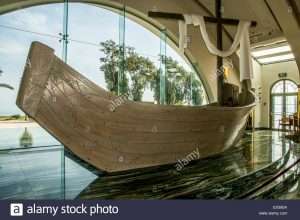
'M'?
Sabbath, (from shavat, “cease,” or “desist”), day of holiness and rest observed by Jews from sunset on Friday to nightfall of the following day. The time division follows the biblical story of creation: “And there was evening and there was morning, one day” (Genesis 1:5). Hebrew: Shabbat.

One horn or two?
Side note: "And indeed, we have been condemned justly, for the sentence we received corresponds to our crimes, but this man has done nothing criminal." Then he said, "Jesus, remember me, when you come into your kingdom." He replied to him, "Amen, I say to you, today you will be with me in Paradise."
A thief who woke up in the morning on his way to hell had his eternal destiny changed with a simple plea to the Savior. “Jesus, remember me.”
Essene members?
And/or: "For I received from the Lord what I also passed on to you: The Lord Jesus, on the night he was betrayed, took bread, 24 and when he had given thanks, he broke it and said, “This is my body, which is for you; do this in remembrance of me.” 25 In the same way, after supper he took the cup, saying, “This CUP is the new covenant in my blood; do this, whenever you drink it, in remembrance of me.” {I Corinthians 11: 23-25}.
Puteoli & Three Taverns | Pilgrimage of Paul Apostle of Hope | Magdala
'Aquarius' / '153' to enlarge.
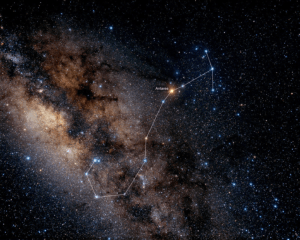
The Scorpion constellation. Long or short?
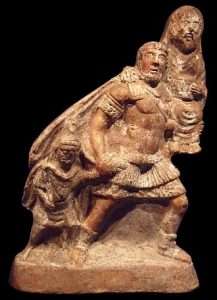
Growing old?
A working example: ''Hermeticism, in so far as it is a 'living' tradition - owes its life to the commandment 'Honour thy father and mother'. For this commandment brings 'longevity' with it - as, moreover, is said in the text: 'Honour thy father and mother, that thy days may be LONG in the land given to thee by the Lord' {Exodus xx,12}. It is in honouring the 'transcendent' god {''Our Father who is in Heaven''} and the soul of non fallen Nature {''the Virgin Mother''} that Hermeticism has survived - in order to make spiritual 'gold'....The 'Virgin' is not only the source of creative elan {that universal ''bit''}, but also of spiritual longevity. This is why the West, in turning away more and more from the Virgin, is growing old, i.e., it is distancing itself from the rejuvenating source of longevity.''
Smith/Jones to enlarge.
Upper/Lower = a final Union?
Hence: ''The fundamental law of Hermeticism is 'meditation', i.e., the practice of remembering the sabbath day - to keep it 'holy'. Meditation is sanctified rest, where thought is turned towards that which is above.'' [Pages 293 - 7 'Meditations on the Tarot'].

Soul.
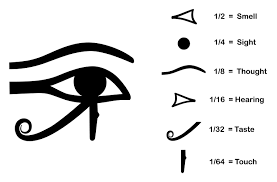
Remembering or forgetting?
As an example: {that 'universal' one}: ''Stars fade like memory the instant before dawn. Low in the east, the sun appears golden as an opening eye. That which can be 'named' must exist. That which is named can be written. That which is written shall be remembered. That which remembers lives. In the land of Egypt Osiris breathes. The sun rises and mists disperse...'' [Page 43 {Kindle} 'Awakening Osiris' / N. Ellis].
Above or below the clouds?
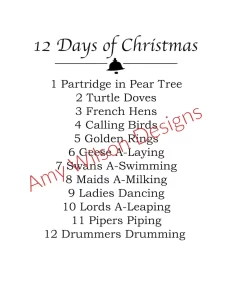
Many early sources suggest that The Twelve Days of Christmas was a "memory-and-forfeits" game, in which participants were required to repeat a verse of poetry recited by the leader. Players who made an error were required to pay a penalty, in the form of offering a kiss or confection {i.e., 'gift'}. ''Theme'' to enlarge.
Understanding the above tells US that a 'written' record was indeed left BEHIND by the ancients. By ALL ancient cultures.

'T' shapes MOSTLY found on the external sides of the stones.
From a different perspective: ''Once a place of celebration, 600 years after it had been built - Stonehenge became a place of remembrance.'' ['Blowing Up History'].
'The Sacred Origin of Sports and Culture' / Ghazi bin Muhammed.
Try the ''Battle of Marathon''.
Working example: ''Sometimes even though u think the answers in there. It just doesn't stick, you just can't remember it.'' ['Who Wants to be a Millionaire' / 2022].

'Tower'? And/or: Let's kick off this sweet list with some of the sweetest pancake quotes out there. I'm going to have pancakes with a side of pancakes. There has never been a sadness that can't be cured by breakfast food. Keep calm and eat pancakes. There is a hardship in everything. Except for when eating pancakes. Pancake Obsessed! BITTER/SWEET. JOY/MELANCHOLY. SEAS/LAKE ['calm' link} - to enlarge. Praesepe to enlarge.
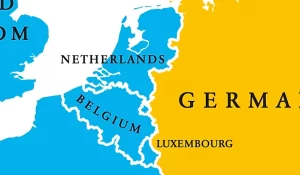
Europe = ''Low Countries''.
And/or: ''The Gilles are the oldest and principal participants in the Carnival of Binche in Belgium. They go out on Shrove Tuesday from 4 am until late hours and dance to traditional songs. Other cities, such as La Louvière, have a tradition of Gilles at carnival, but the Carnival of Binche is by far the most famous. In 2003, the Carnival of Binche was proclaimed one of the Masterpieces of the Oral and Intangible Heritage of Humanity by UNESCO......Around 1000 Gilles, all male, some as young as three years old, wear the traditional costume of the Gille on Shrove Tuesday. The outfit features a linen suit with red, yellow, and black heraldic designs (the colours of the Belgian flag), trimmed with large white-lace cuffs and collars. The suit is stuffed with straw, giving the Gille a hunched back.[1]
Side note: ''Carnivals are street festivals that happen most years in Rio before Lent and Notting Hill at the end of August.'' ['Reddiculous'].
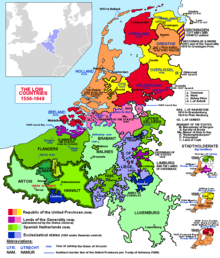
Northern and Southrn LOW COUNTRIES.
Gilles also wear wooden clogs and have bells attached to their belts.[2] In the morning, they wear a wax mask of a particular design. After reaching the town hall, they remove these masks for the afternoon. During the afternoon parade, Gilles throw blood oranges to the crowd or at its members, and some wear large, white, feathered hats made of ostrich feathers. Gilles carry ramons, tied bunches of twigs that are said to ward off evil spirits, and baskets in which to carry the oranges.[1]
The Carnival of Binche dates back to the 14th century and is listed by UNESCO as a Masterpiece of the Oral and Intangible Heritage of Humanity. The carnival transforms the Belgian town of Binche from Sunday to Ash Wednesday, but the most important day is Shrove Tuesday.
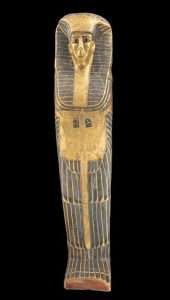
Made from two tree trunks. Lower {Sycamore}. Higher {Tamarisk}. Longwood?
''Lent comes from the Anglo Saxon word lencten, meaning “lengthen” and refers to the lengthening days of spring. The forty days represents the time Jesus spent in the wilderness, enduring the temptation of Satan and preparing to begin his ministry.''
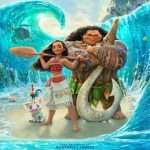
Fishers of men?
''The name Shrove Tuesday comes from the old Christian tradition of confessing your sins before Lent, becoming 'shriven' of them, and while modern Ireland generally refers to today as Pancake Tuesday, the term Shrove Tuesday is still used....Other words for 'shriven' could be pardoned, aquitted - let off the hook....And/or: Shrieve. / (ʃriːv) / noun. an archaic word for sheriff....And/or: *skrībh-, Proto-Indo-European root meaning "to cut, separate, sift;" an extended form of root *sker- (1) "to cut."
"Spring onions are traditionally served with Peking duck and pancakes." {'The Chase' / S17 EP91}.
East?
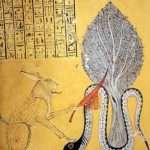
'Head of the snake'? ''Headless'' to enlarge.
Side note: Robin Hood is a legendary heroic outlaw originally depicted in English folklore and subsequently featured in literature and film. According to legend, he was a highly skilled archer and swordsman.[1] In some versions of the legend, he is depicted as being of noble birth, and in modern retellings he is sometimes depicted as having fought in the Crusades before returning to England to find his lands taken by the Sheriff. In the oldest known versions, he is instead a member of the yeoman class. Traditionally depicted dressed in Lincoln green, he is said to have robbed from the rich and given to the poor.''
Sheriff Woody Pride[1] is a fictional pull-string cowboy doll who appears in the Disney–Pixar Toy Story franchise. In the films, Woody is one of the main protagonists, alongside Buzz Lightyear and Jessie. He is primarily voiced by Tom Hanks, who voices him in the Toy Story films, short films, and TV specials. Tom Hanks' brother, Jim Hanks, voices him in Lamp Life, video games, attractions, and other merchandise.
Woody was created by directors and writers John Lasseter, Andrew Stanton, Pete Docter, and Joe Ranft. His facial features are based on the former Disney animator Tone Thyne. Woody was designed by Bud Luckey, and is based on John Lasseter's Casper pull-string doll he had as a kid, as well as the Howdy Doody puppets from the 1950s show. Woody is named after Woody Strode, a character actor known for many roles in western films. In August 2009, Toy Story 3 director, Lee Unkrich, stated in his Twitter feed that Woody's last name is Pride and has been since the making of the original movie.

Friend. What happened to you're shoes? They kinda got ahead of me."
In the films, Woody is Andy Davis's favorite toy and is the leader of Andy's toys. When Andy gets a new toy called Buzz Lightyear, Woody’s position is jeopardized until he later becomes friends with Buzz. He figures out he used to be in a popular TV show called Woody's Roundup and is asked to stay with the group, but he decides to remain with Andy's toys; all but one member of the group also join Andy's toys. When Andy leaves to go to college, he decides to give his toys to a little girl named Bonnie Anderson; he had initially planned to take Woody to college, before seeing that Bonnie loved him. When Bonnie's family decides to go on a vacation, he finds his long-lost girlfriend, Bo Peep....
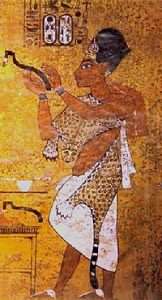
Little Bo-Peep has lost her sheep,
- And doesn't know where to find them;
- Leave them alone, and they'll come home,
- Wagging (bringing) their tails behind them.[1]
Common variations on second-line include "And can't tell where to find them." The fourth line is frequently given as "Bringing their tails behind them",[2] or sometimes "Dragging their tails behind them". This alternative version is useful in the extended version, usually of four further stanzas. The melody commonly associated with the rhyme was first recorded in 1870 by the composer and nursery rhyme collector James William Elliott in his National Nursery Rhymes and Nursery Songs.[3]
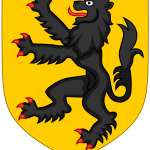
Coat of Arms, Flanders. Recall Somerset emblem.
Continued: The biggest attraction of the carnival's parades is costumed performers known as Gilles. Clown-like figures are dressed in clogs and suits embroidered with heraldic symbols. They also wear large hats with ostrich plumes. About 1,000 Gilles in their bright costumes, wax masks, and wooden clogs march through the streets from Tuesday morning to the grand finale of the carnival. In the afternoon they carry baskets of oranges throwing them into the crowd. The oranges are supposed to bring good luck.

Holland. 'Flat top? Climbing or aspiring?
There are a few theories regarding the origin if Gilles' unusual appearance. According to one of them, Queen Mary of Hungary, who ruled the city in the 16th century brought Incas to perform at the carnival, and their flamboyant costumes have become a tradition ever since.''
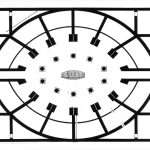
'Bathing' to enlarge.
And/or: "At the back of the Trouvere revised edit of the Arthurian myth was the QUEEN Venus cult which was kept secret and later developed into the witch-cult, which contained features not recorded by the historians; that there was a highly developed cult of the woman which showed itself clearly in Trouvere and Troubadour literature and in the Courts of Love, but which was discretely ignored by the worthy Malory. Chretien used Trouvere material and demonstrates more insight.....
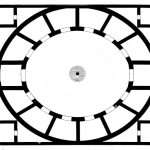
Chester to enlarge.
Ashtoreth was the forerunner of Queen Venus, and Guinevere was her successor; the records have been deliberately expunged. So we take their bones, in this valley of dead bones {'White Desert of Libya'?}, and clothe them with the Mysteries, so that bone cleaves to bone and they become alive again." [Page 40 'The Arthurian Formula'].
'Swaddling' cloth?
Refresher: ''The Queen, is the only person to travel overseas without having to present a passport.''
 From a different perspective: ''The Right Honourable the Lord Lyon King of Arms, the head of Lyon Court, is the most junior of the Great Officers of State in Scotland and is the Scottish official with responsibility for regulating heraldry in that country, issuing new grants of arms, and serving as the judge of the Court of the Lord Lyon, the oldest heraldic court in the world that is still in daily operation.
From a different perspective: ''The Right Honourable the Lord Lyon King of Arms, the head of Lyon Court, is the most junior of the Great Officers of State in Scotland and is the Scottish official with responsibility for regulating heraldry in that country, issuing new grants of arms, and serving as the judge of the Court of the Lord Lyon, the oldest heraldic court in the world that is still in daily operation.
The historic title of the post was the High Sennachie, and he was given the title of Lord Lyon from the lion in the coat of arms of Scotland.[1]
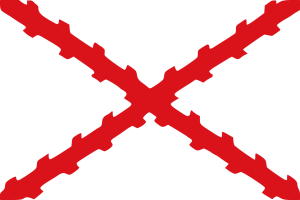
Flag of the Low Countries.
The post was in the early nineteenth century held by an important nobleman, the Earl of Kinnoull, whose functions were in practice carried out by the Lyon-Depute. The practice of appointing Lyon-Deputes, however, ceased in 1866.''
A working example: ''Why all this produced a strong impression on me, and why i almost automatically behaved so strangely, i still cannot make out, though during recent years, particularly on the days known as 'Shrovetide' , i have pondered over it a great deal, trying to discover the reason.'' [Page 26 'Beelzebub's Tales to His Grandson' / Gurdjieff].
Side note: For the ''cricket'' equivalent see page 98 'Fruits of the Moon Tree' / A. Bleakley.
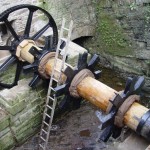 Continued....Put it all together and/or from a different perspective: "It is not that the sense life is to be negated or outwardly discontinued, as impractically taught by some Sankhyas. It is an inner withdrawal that is to be practiced, a withdrawal to 'higher levels' that will in itself bring that outer harmonization which is essential if the buddhi is to be attained. In the old symbol of the chariot, the horses of the senses are to be held back [ nigrihita] by the reins of the mind, but it is not intended that they be unyoked from the chariot or that their movement should be stopped altogether..." Enlarged elsewhere.
Continued....Put it all together and/or from a different perspective: "It is not that the sense life is to be negated or outwardly discontinued, as impractically taught by some Sankhyas. It is an inner withdrawal that is to be practiced, a withdrawal to 'higher levels' that will in itself bring that outer harmonization which is essential if the buddhi is to be attained. In the old symbol of the chariot, the horses of the senses are to be held back [ nigrihita] by the reins of the mind, but it is not intended that they be unyoked from the chariot or that their movement should be stopped altogether..." Enlarged elsewhere.
Something hinted at: "But who or what was Gogmagog….The neighbourhood of Wisbech is incidentally celebrated for the grave in its vicinity of the hero, or giant, Hic{cath}rift or Hiccafrith. This warrior, who fought a battle with a wheel for a buckler and an axel-tree for a sword, seems to me to have been 'The trust of the Hiccas' or 'Iceni', and was probably a Celtic god. His grave was pointed out, and a stone, known as his candle-stick, preserved in a Marshland Church." [Page 16, 'Gogmagog: The Buried Gods' / T. C. Lethbridge]. Anything?
Side note: King John and his lost 'treasure' travelled through many towns on that 'fatal' journey. One of which was Wisbech.
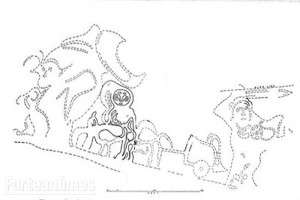
''Error runs down an inclined plane while truth has to ….?
Continued: " Brown also says that the Euphratean Sugi, the Chariot Yoke, was identified with 'a' + 'b' of this constellation, which remind us by sound and signification of the Zuyov and Jugum of Greece and Rome respectively, and that astrology adds evidence in favour of a Chaldean origin, for it has always claimed Libra - the Northern Scale at least - as a 'fruitful sign', taking this from the very foundations of astrology in the Chaldean belief that ''when the Sugi stars were clear the crops were good''. In modern astrology however, the reverse of this is held, in the case of the Southern Scale....In classical astrology the whole constituted the ancient House of Venus....the planet appeared here at 'creation'....and the goddess bound together human couples under the yoke of matrimony...." [Page 274 {under Libra} ' Star Names their Lore and Meaning'].
Side note: "The word 'conscience' {''con-science''} contains the idea of balance, for it implies "simultaneous knowing," i.e.,knowledge of the facts of the two scales suspended at the extremities of the beam of the balance. Conscience is neither a product nor a function of character. It is above it. And it is here - and only here - that there begins and there is found the domain of freedom." [Letter viii 'Justice' from the book 'Meditations on the Tarot'].

"THE FORE-LEG OF OX'' - hieroglyph of ancient Egypt is an old hieroglyph - it represented the 'Big Dipper'. It came to have many uses over 3000 years." {Wiki}. Question. Food for thought?
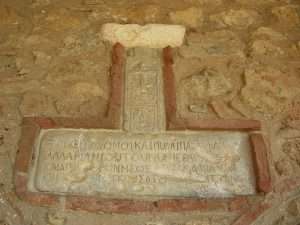
Twice as broad than long? Birket Habu? Question. Any bridge supports found between the Mortuary Temple of Amenhotep III and the Temple of Khonsu on the opposite side of the river?
"What we call a symbol is a term, a name, or even a picture that may be familiar in daily life; yet that possesses specific connotations in addition to its conventional and obvious meaning. It implies something vague, unknown, or hidden from us. As an example take the case of the Indian who, after a visit to England, told his friends at home that the English worship animals, because he had found eagles, lions, and oxen in old churches. He was not aware {nor are many Christians} that these animals are symbols of the Evangelists and are derived from the vision of Ezekiel, and that this in turn has an analogy to the Egyptian Horus and his four sons...Thus a word or an image is symbolic when it implies something more than its obvious and immediate meaning. It has a wider ''unconscious'' aspect that is never precisely defined or fully explained." [ 'Man and His Symbols'. Enlarged elsewhere
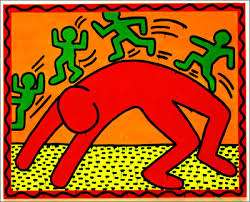
Bridge over troubled waters?
Question. Lion = Mark / Eagle = John / Ox = Luke. Which of the four sons of Horus represent the Egyptian equivalent of the ''Ox''? AND WHY? Try ''four''.
A working example: "Even when constellation boundaries remain the same from culture to culture, the ways in which those constellations are seen can be very different. Thus the ancient Egyptians knew the constellation that we call the Great Bear, but represented it with the foreleg of a bull. They saw the Little Bear {Ursa Minor} as a Jackal. They depicted the constellation of Cancer as a scarab beetle. The constellation of Drago, which we see as a dragon, was figured by the ancient Egyptians as a hippo with a crocodile on its back..." ['Magicians of the gods'].
''On its back'' in relation to ''under ones belt'' {enlarged elsewhere}. Attempt to 'see' what the above author cannot {other than the obvious},i.e.,try ''crocodile'' of which the 'Jackal' {i.e.,in one form or another} plays its part. Others highlighted.
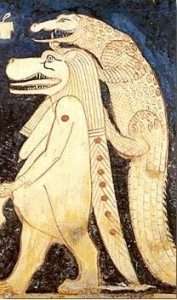 As {one} example: "At Edfu, the great mystery Play of Horus is fully inscribed on the outer west wall of the temple quarter. It details the complete Horian mythos acted out by Pharaoh and his retinue at an annual festival which included the sacred drama...The 'play' depicts the triumph of Horus over Set, in the form of, hippopotamus, oryx, and crocodile." ['Sacred Tradition in Ancient Egypt' / R. Clark].
As {one} example: "At Edfu, the great mystery Play of Horus is fully inscribed on the outer west wall of the temple quarter. It details the complete Horian mythos acted out by Pharaoh and his retinue at an annual festival which included the sacred drama...The 'play' depicts the triumph of Horus over Set, in the form of, hippopotamus, oryx, and crocodile." ['Sacred Tradition in Ancient Egypt' / R. Clark].
''Play'' in relation to 'outer' {external} - understanding core elements of which = that ''inner'' something - relative to the self,i.e.,as one example - ''quarter'' in relation to 90 degrees; therefore right angle symbolism etc. Enlarged throughout.
Try 'Feast of Fools' for its universal appeal - if only in defining subject material.
Demeter/Persephone and Hades?
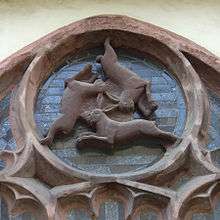 As seen from a different perspective: { a correct one?}: "Aratus, who was one of the primal sources for mediaeval star-imagery {as opposed to star-lore used in astrology, which was derived ultimately, though by circuitous routes, from Ptolemy}, makes the observation that the stars of Taurus do really mark out the 'head of the ox'. For Aratus, the Hyades is 'in the forehead of the bull', and one star marks the tip of the left horn, as well as the right foot of the Charioteer. Indeed he says 'not by other signs would one mark the head of an ox'...In the esoteric lore the relationship between the patterns of the stars and the images they represent is explained in quite a different way. It is suggested that the areas of sky marked out by certain star groups were first experienced as areas of 'spiritual influence'. It is likely that such 'experience' would not be available to all men, but would be available to those initiates who had endured the disciplines {study?} and spiritual 'enlightenments' {eureka moments?} of those teachers in the mystery schools...Here we shall merely note the fact of its zodiacal series being constellational rather than tropical..." ['The Secret Zodiac'].
As seen from a different perspective: { a correct one?}: "Aratus, who was one of the primal sources for mediaeval star-imagery {as opposed to star-lore used in astrology, which was derived ultimately, though by circuitous routes, from Ptolemy}, makes the observation that the stars of Taurus do really mark out the 'head of the ox'. For Aratus, the Hyades is 'in the forehead of the bull', and one star marks the tip of the left horn, as well as the right foot of the Charioteer. Indeed he says 'not by other signs would one mark the head of an ox'...In the esoteric lore the relationship between the patterns of the stars and the images they represent is explained in quite a different way. It is suggested that the areas of sky marked out by certain star groups were first experienced as areas of 'spiritual influence'. It is likely that such 'experience' would not be available to all men, but would be available to those initiates who had endured the disciplines {study?} and spiritual 'enlightenments' {eureka moments?} of those teachers in the mystery schools...Here we shall merely note the fact of its zodiacal series being constellational rather than tropical..." ['The Secret Zodiac'].
Understanding that final sentence defines Homers method of 'story telling'. That same method - by way of those universal constants - that have; and still are; being applied generation after generation. Since the written word came into common use. An unknown factor to such authors as G. Hancock.
Side note: ''Pantheon = Oculus = ''Bulls eye''.

'light oxen': "I bring up an individual type as a point of departure to talk about. The one {'emotion'?} that is strongest will pull you first." [Page 4 'Stopping and Seeing' / Translated by T. Cleary].
Abraxas?
''The Gnostic Jung' / S. Hoeller].
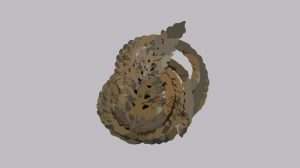
A feather in the CAP?
A side step...In the Hermes / Asclepius, Hermetic text, Hermes talks about a 'transformation' that is "wrought inside the process of time",[chapter six. 'The Source Field Investigations]. The author speculates about same, in relation to 'the Precession' cycle. Think about it, in relation to 'groove' and 'repetitive' symbolism, [benefit of, in relation to the 'Ka']. Knowing that 'time' in its basic form could be described as 'segments' ['spine' link] within a learning process. Each 'learning curve' is a 'step' by step process, where time is relevant both external and internal, in relation to that 'development' . The most important point, however [according to this subject, that is, once again by implication] is that... 'benefit of'... is especially relevant in 'B', in order; through a 'learning process', [by way of a positive / negative aspect 'understanding'] to get to 'C'. Should B/C exist of course. Remember objectivity at all times, i.e.,at least attempt it ,rather than allowing those emotions to dictate where on that learning curve you find yourself {'arc' link}.
N.B. 'The Thigh of the Ox' {or bull} in the shape of the Egyptian Adze. Question. What 'ceremony' was associated with it?
Question 2. Play time addicts?
Side note: The author of 'Imhotep the African' points out the association of the 'thigh' in relation to Letopolis and 'its' relation to Giza and Heliopolis {i.e.,as a 'right angled triangle'}. No mention of the symbolic intent of the 'Delta' to {say} in relation to the 'Sea'. Salt water in relation to fresh. All as a means...?
To go beyond his Sothic Cycle hypothesis - try 'Pyr'-amid and/or 'right angled triangle' and/or ''hypotenuse'' and/or ''N/E -S/W'' {i.e., between Giza - Heliopolis} in relation to ''line of sight''. ALL in relation {relative?} to the most important aspect of a 'mind set' as mentioned above.
Question. Top/down or bottom/up?
'New Model of the Universe' / P. D. Ouspensky. {Geocentric?}.
Cleopatra identified with the ‘Triple Uraeus’, [explained elsewhere, i.e., A-C. The full S/P ]. Notice...A few decades later ‘Jesus’ arrives on the scene. He his now able to learn all the above in his ’missing years’. To be ‘applied’ between 30-33. Both significant numbers, [ see number symbolism etc ]. Proving that through objective research / analysis rather than leaving all to those first impressions...a certain logic ‘shines’ through, [a link to the true meaning of the "shining ones", i.e., ’Devas’, [explained elsewhere, together with that words link to 'music' symbolism, explained within]. Proving again the viability of the subject regardless of ones opinion of it. Ones first impressions of it.
"...the 'nails' of objectivity - which give conscience to thought." The symbol of which is the Crown of Thorns, i.e.,"The 'thorns' of the crown center function as the 'nails' of objectivity..." [Taken from 'letter 5' from within the book by Tomberg].
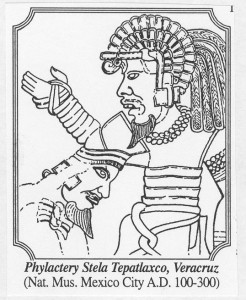
Question. Mayan equivalent of 90/45 degrees? i.e., 'ear' {lobe} in relation to 'middle' of forehead. Together with 'Hands' = S/E - N/W. 'Heads' = N/E - S/W. 'Point of Beard' = 'Crossover' point?
"All the celebrated songs of India have been composed by devotees of the 'divine'. The Sanskrit word for ''musician'' is bhagavathar, - ''he who sings the praises of god."...Because man himself is an expression of the Creative Word..." try ''logos'' to see it from a different {western?} perspective {i.e., 'angle'}.
Part of the purpose within the ‘design’ is to impart that same information to others. According to these authors it is part of the ‘course’. A prerequisite of attaining that ultimate goal, i.e., [C]. Hence the reason why; in most cases; its freely given. Misguided anthropology / Philanthropy? False altruism?

The Cross. Its true representation? As a means...?
"It is from god, so hear! and to 'god' do you return! When you hear what i bring, learn! Then with understanding see the details in the whole, then give it to those who seek it, and stint not. This is the mercy that encompasses you; so extend it." [Preface by Al-Arabi to the book 'The Bezels of Wisdom'].
Question. Mercy in relation to 'grace'. What figure represents it - Is associated with it?
Side note: A lectern is a reading desk with a slanted top, on which documents or books are placed as support for reading aloud, as in a scripture reading, lecture, or sermon.
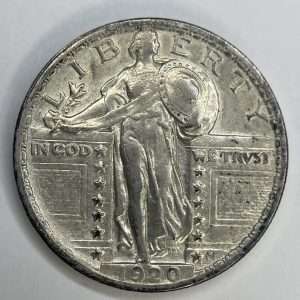
"The Standing Liberty quarter is a 25 {'twentyfive'}-cent coin that was struck by the United States Mint from 1916 to 1930. It succeeded the Barber quarter, which had been minted since 1892. Featuring the goddess of Liberty on one side and an eagle in flight on the other, the coin was designed by American sculptor Hermon Atkins MacNeil. In 1915, Director of the Mint Robert W. Woolley began steps to replace the Barber dime, quarter, and half dollar, as he mistakenly believed that the law required new designs. MacNeil submitted a militaristic design that showed Liberty on guard against attacks. The Mint required modifications to the initial design, and MacNeil's revised version included dolphins to represent the oceans. In late 1916, Mint officials made major changes to the design without consulting MacNeil. The sculptor complained about the changes after receiving the new issue in January 1917. The Mint obtained special legislation to allow MacNeil to redesign the coin as he desired. One change made by the sculptor was the addition of a chain mail vest that covered Liberty's formerly bare breast." 'Thirteen' {i.e., stars} + 'three and a half' to enlarge. {i.e., the head between the 'seven' letters of LIBERTY}. "Freedom" for a deeper read.
A lectern is usually attached to a stand or affixed to some other form of support.

Goddess of Dawn. Gateway to the light. Mind set? "Naked" to enlarge.
To facilitate eye contact and improve posture when facing an audience, lecterns may have adjustable height and slant. People reading from a lectern, called lectors, generally do so while standing....The pulpit is generally reserved for clergy. This is mandated in the regulations of the Catholic Church, and several others (though not always strictly observed). Even in Welsh Nonconformism, this was felt appropriate, and in some chapels a second pulpit was built opposite the main one for lay exhortations, testimonies and other speeches.[3] Many churches have a second, smaller stand called the lectern located in the Epistle side, which can be used by lay persons, and is often used for other Scripture lessons and ordinary announcements. The traditional Catholic location of the pulpit to the left side of the chancel or nave has been generally retained by Lutherans and many Anglicans,[4] while in Presbyterian and Baptist churches the pulpit is located in the centre behind the communion table.[5] Many modern Roman Catholic churches have an ambo that functions as both a pulpit and lectern.
Logos / extend to enlarge.

In Profile? 90 degrees?
"Perhaps it is the ancient importance of this Dog on the Nile that has given the popular name - the Egyptian X - to the figure formed by the stars Procyon and Betelgeuze, Naos and Phaet - with Sirius at the vertices of the two triangles and the center of the letter. On our maps Sirius marks the nose of the Dog...Some have called it Mazzaroth of the Book of Job..." [Info. on Canis Major 'Star Names and Their Meaning'].
Dog - rose?
'Market place'?
Side note: The ''nose'' of something {regardless of species, including the human one} relative to the ''tip'' of {say} a tail. All as a means...?
'Face on' in relation to 'in profile'?

A ''meeting'' in the middle? A twitch under the nose?
Side note: ''The holly king is primary a sacrificial king. As a winter counterpart for the oak king, he ensures the safety and provision for the tribe under his protection....Where the holly king can be seen as an element of the antlered gods like Cernunnos, we can see the horns as reflecting this rise in power and potency. The great rise in energy the holly facilitates allows great things to be achieved....Holly's fire is metaphysical as well, being fuel for the life force and leading to illumination of the soul. The holly's use in Smith craft links it with the Celtic smith god Govannon {Welsh} / Goibniu {Irish}, who possessed the mead or ale of eternal life, as well as the Saxon smith god Weyland....It eventually gives rise to both enlightenment or 'the shinning brow' of poetic vision and shamanic inspiration.'' [ Pages 109/110 'Celtic Tree Magic' / D. Forest].
Sacred Oil?
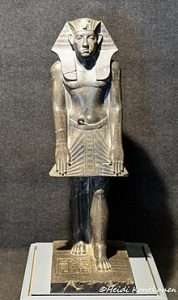
Sad {'melancholy'} / joy? N.B. The pathway that leads to the Sphinx enclosure {'quarry'?} is all UPHILL.
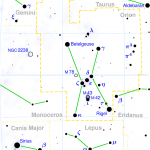
Fire AND water?
Continued: Something to ponder on: "Now, it is true that we moderns have arrived at a critique of the 'Empire of the Eye' and of the privileged primacy of sight, among all the senses, in the discourse of 'Western Civilization'. Charles Fourier, who was himself a kind of Hermeticist {and much admired as such by certain Martinists, Illuminists, and Masons of his era}, may perhaps claim the honour of first challenging the monarchy of the Eye with the democracy of the Nose. Most immediate of the senses, smell has none of the abstract alienating qualities of sight; moreover, the organizing principle of Fourier's cosmos is aroma, or rather the 'aromal rays' which connect all things through a subtle but palpable eros, from stars to flowers." [Page 312 'Alexandria' Vol 3. / D. Fideler].
Djedefre to enlarge.
And/or: "At the State Opening of Parliament, the Monarch's Speech is kept in the Lord Chancellor's Purse." {'The Chase' / S17 EP91}.
'Opening of the Mouth'?
Side note: ''In golf, the right to tee off first when playing a hole is called The Honour.'' ['The Chase'].
''Hole'' = 'pit'?
Khafre to enlarge.
''For the feminine gender is no shame for the sun, Nor is the masculine gender an honor for the crescent moon.'' [Annemarie Schimmel].
Anima/Animus to enlarge.

The ''Beautiful lady'' yet to arrive?
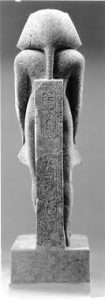
First Witness?
And/or: ''When someone talks about a long face, they usually mean a face that expresses sadness, stress, or exhaustion. But this is different from long face syndrome, a medical condition that deals with the actual structure of the skull.''
A working example: "Is this what Imhotep meant by: 'his temple opens southeastward; Re {the sun}, rises in its face every day?' That is, on the suns annual journey, moving north and south of due east, it never rises further south than the axis of this S/E facing temple, and so rises 'in its face every day'. " [Page 113 'Imhotep the African'].
Excellent research especially on sunrises/sunsets in relation to the Big Dipper and ''foundations''. But until this subject is taken into account FULLY no end result can be got.
As an example {ONE example only}: "These temples are however, on the east bank of the river - representing the involutionary cycle of creation - the field of the gods - whereas the west bank = the evolutionary path travelled by man." Cancer/Capricorn?
Smith/Jones to enlarge.
Try ''u-turn'' to add something extra to that excellent research.
And/or: ''The seven stars of Ursa Minor - as the 'handle that turned the quern'. " [Page 202, 'Esoteric Egypt' / J. S. Gordon]. Try those two.
Question. Understand subject material to give a possible location for all that material that was taken out of the now ''dry moat'' that surrounded the Step Pyramid.
REFRESHER: "....Sirius being the star of Horus, and the Step Pyramid complex being named Horus Is the Star at the Head of the Sky." [Page 134 'Imhotep the African']. Recall what was found at Abydos. Question. Where would his 'feet' rest?
Continued: Representation / symbolism of that ‘giving back’ takes different forms, depending like all else on time / place and culture. Its main example given by the same person mentioned above, [the Jesus chap]... ‘returning for 40 days’. To be seen by his close friends and strangers. Indicative of something being verified. Indicative of a ‘potential’ accessible to all. ’Four’ and multiples / series of., i.e., 4/40/400... indicative of the physical world. Especially in relation to the 'Venus cycles' {of which the Mayan culture had a vested interest in}- relative to the 'morning star' representing an awakening of something. As explained in such books as 'The Sacred History'. Mentioned within {parenthesis, this readers].
"Still another astronomical explanation of the importance of 40 can be found in the 40 aspects of Saturn which, according to the Bible, is the star of Judah." ['Mystery of Numbers'].
Side note. Green jade in relation to Venus and teeth {i.e.,the same embedded in the teeth of 'Kings']. Try ''teeth''. Think about it relative to the precession - as indicated within such works as 'Galactic Alignment'. Mentioned elsewhere].
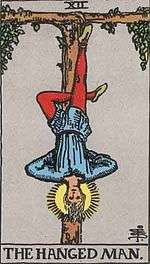
Put those symbols together to understand something other than the obvious, i.e.,Tau cross; figure four: 'light' as opposed to 'dark' i.e.,aware /unaware; blue / red; 12th card in relation to 'high noon' or 'zenith'; etc.
As is same with the character shown on the ’hangmans card’ of Tarot fame. One leg in the shape of a figure ’4’. Notice the expression on face. Indicative of a willingness to learn [ ‘return’.] From understanding something of ’the above’. To imparting it below. Symbolic of that ‘position’...The upside down one. Or even the head [and therefore 'expression' ] of the Sphinx; in relation to the Great pyramid. The 'horizontal' at the lower end of the 'vertical'. The upside down cross. Imparting that knowledge, indicative of north / south, ['dry' way link. Also take note...all 'entrances' on all three pyramids....on the North side]. South to North being indicative of that return journey.
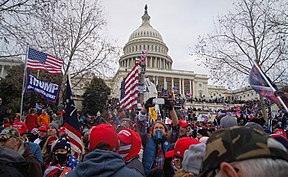
American or UN-American? Good or bad karma?
And/or: ''Because of our past karma and childhood wounds the ego is formed as an adaptation. When we make 'the turn' we become ready to change perspective....the willingness to surrender the ego's agenda to a higher perspective....old beliefs changing.'' [Page 114/5 'Shamanic Mysteries of Egypt' / N. Sully + L. Wolf].
180 degrees?
The beginning of which is represented by the 'offset' pyramid, indicative of the 'fallen' state. Hence the reason why they only align when the figure of Orion is ''upside down." [Discovery channel 2015]. That same intent that is represented with the ‘Quernstone’...but now in relation to the ‘journey’. The later represents the individual effort, [Micro]...as the former does to the collective one, [Macro]. Explained elsewhere.
Try ''quern'' for other examples - to see if you agree or disagree.
Side note: "As Lord of the nethermost, Saturn views the world from the outside, from such 'depths of distance' that he sees it all ''upside down'', and to this view {objective view?} the structure of things is revealed." ['Saturn and the Theoretical foundations of an Emerging Discipline'].
Hindsight / foresight ?
Side note: In the Sphinx temple statues of Khafre were found ''upside down''. Pure coincidence?
Question. What material {and/or colour?} were they made from. Any link to 'Saturn'?
Question 2. If Saturn = Khafre; what are the others represented by and why?
Try ''Saturn'' to see it from a 'beginners' {leaden?} point of view. It also gives clues as to the possible start {and/or end?} date of something.
''Turned it around on its head'' - in reference to the crossbow bolt found on Oak Island {'Curse of Oak Island'].
Question. 90/180 or 360 degrees?
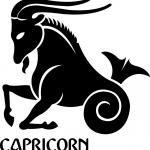
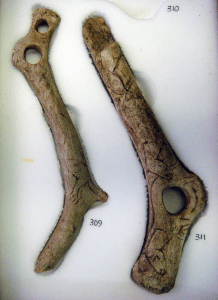
Upper paleolithic reindeer antler tools with figurative art. Horse sculptured not carved. Embossed/Debossed? Knee joint? {'Strangest Things' S2 EP2 50min}.
And/or: "The Giant generally has been represented with his back towards us and face in profile, armed with a club, or sword, and protected by his shield...Durer drew him facing the Bull, whose attack he is warding off; but the Leyden Manuscript has a slightly clad 'youth' with a short , curved staff in the right hand, and the Hare in the background. The stars make up the head, shoulders, left foot and right knee. But Sir John Herschel observed from southern latitudes that the inverted view of the constellation well represents a human figure; the stars that we imagine the shoulders appearing for the knees, Rigel forming the head, and Cursa of Eridanus, one of the shoulders." [Page 308 'Star Names and Their Meaning' under Orion].
Upside down statue of Khafre in the Sphinx Temple?
Side note: "The wild bull represents untamed inner {usually represented as sexual} power. The actual 'sacrifice' of the bull is a symbolic representation of a necessary inner, spiritual quest." [Page 87 'Serpent in the Sky'].
''Second childhood''?
Podrick Payne? {Game of Thrones}.
Something to ponder on: "Sahu-Orion was often depicted as ''he who walks backwards'' and the decan list describe him as facing Sothis-Sirius, that is, facing the horizon. Since Orion moves east-west it indicates that Sahu was visualised as moving across the sky, walking backwards. James Frazer, in the 'Golden Bough' tells of a people on a remote island of New Guinea who have a very interesting ceremony....
Side note: ''The Latins occasionally wrote the word Scorpios, but usually Scorpius, or Scorpio; while Cicero, Ennius, Manilius, and perhaps Columella gave the kindred African title Nepa, or Nepas, the first of which the Alfonsine Tables copy, as did Manilius the Greek adjective, Walking Backward. Astronomical writers and commentators, down to comparatively modern times, occasionally mentioned its two divisions under the combined title Scorpius cum Chelis; while some representations even showed the Scales in the creature's Claws.''
Question. What two aspects is the ''scorpion'' known for?
Recall its 'relationship' with Orion.
Continued: He goes on to describe a mock sacrifice....death/rebirth....and 'learning' from scratch - represented by ''walking backwards''. [Page 210 'Death of the Gods in Ancient Egypt'].
And/or: ''It has long been suspected that Hathors return from Nubia in the Goddess in the Distance myth is a 'solstice' return. Her role in 'turning back' the years and rebirth by day is as old as the Pyramid Texts, as the king proclaims in Utterance 405: {the legs walking backwards} - when identifying with the Eye of Re: For i am that eye of yours on the horn of Hathor, which brings back the years through me.'' [Page {'seventyseven'} 77/278 'Hathors Alchemy'].
'AFAR'?
'Cancer' / 'Book of Day' to enlarge.
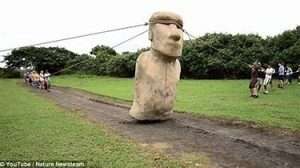
Static or dynamic? Question. Could it be walked ''backwards'' ?

"In fact, the word itself stems from the 15th century, being defined as “full of meaning.” So as a pregnant body is full of meaning with a little human, a 'pregnant pause' is full of meaning with silence."
A working example: Many statues on Easter Island found ''face'' down {downhill} and lying on their ''backs'' {uphill}. An even number found in BOTH positions on level ground {''fallen'' aspect?}….''Probably just left them'' - in answer as to WHY. Experts believe it has to do with the legend that the statues ''walked'' to their place of rest - being the platforms {'foundation'?} that they are renowned for - Facing out towards the HORIZON. But looking upwards towards the heavens {horizontal/vertical?}. Some 'facing' inward {'Seven'?}. Or vice versa? All made from within an extinct volcano {compressed ASH}. Always made in the horizontal position {'awakened'?} before being ''walked'' to THE foundation spot in the vertical one. Pot bellied {'pregnant'?}. Also discovered a ''right angle'' between eyes and forehead that allowed a third rope to be engaged {'overhang'?}. ['Lost Empire of Easter Island' / Nat. Geo / December 2019].
Inward/Outward. Uphill/Downhill. Forwards/Backwards. Others elsewhere. That ''duality'' clause - as a means....?
For the ''shadow'' to learn?
'Navel' to enlarge.
Question. Did those early explorers that 'found' Easter Island ALREADY know of its natural 'resources'? {Polynesians}. What was the real/original {primordial?} reason for deciding to move and live on that ''island''. Enlarged elsewhere.

Labyrinth of tunnels beneath. Beginning? Djedefre = ending?
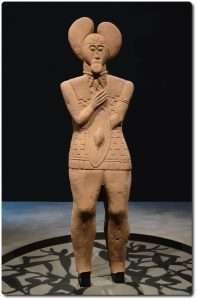
Inner ear?
''The Malekulans believe that the newly dead person will arrive at a cave by the sea, where a traditional labyrinth design is traced....Now the person who has 'danced the maze' throughout his/her life knows the pattern well, and dances the maze, thus completing the pattern in the sand. This leads one to the cave entrance {'giant' to enlarge}, where the same tusked boar that is sacrificed at the persons death now appears.....Whence the soul may be taken by the ferryman to a volcanic island that is a rebirth. Dancing the labyrinth is to unpick the knot of life {the Ankh}....Labyrinths are always connected with caves....The labyrinth is a reflection of the labyrinthine canals of the inner ear that regulate balance on the ground, for to slay the minotaur, or engage with the vitality of life, is to do so in a balanced way, in a way that harmonises the VERTICAL of the quest, the journey for vision, and the HORIZONTAL of the ground {sensation}....'' [Page 198/201/2 'Fruits of the Moon Tree' / A. Bleakley].
''Piglet'' to enlarge.
Question. Reason for the chose of Island? Recall the ritual each year of collecting the first egg of the season. Next stage up?
And/or: Volcanic Islands in relation {versus} ancient 'sea bed' ones, i.e., as one example those White Cliffs on THIS island and/or the Giza Plateau - supposedly the middle {'navel'?} of the earths land mass.
Side note: ''Piglet represents an anxiety disorder. Tigger represents attention-deficit hyperactivity disorder (ADHD). Eeyore represents major depressive disorder. Rabbit represents obsessive compulsive disorder.''
From a different perspective: ''The Russian saints are never ecstatic. They are entirely without that mysticism which so many mediaeval saints of Western Europe show. A pure breath of the spirit proceedes from them, a mild and high severity. They seek above all, to attain to the light of the Holy Spirit. No single one of the Russian saints can show the stigmata. This is connected to the special mission of the Russian people. The risen transfigured Christ seeks the Russian soul. The Russian land is an EASTER ISLAND; it awaits the resurrection. The mediaeval soul of the west experienced quite especially deeply the sufferings of Christ, His Passion. The Art of that period glorified the Crucified One. The East, on the contrary, has had, the resurrection more in mind. These are two different stages of perception. Rudolf Steiner says in one of his lectures that the Russian soul experiences the archangel of its people through the flowers and grasses.....'' [Page 7 'Russia: Past, Present and Future' / R. Steiner].
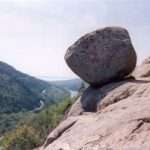
Overhang in a different form?
 Side step: ''The Titans would always be the enemies of Jupiter. They failed to 'kill' him while he was still an 'infant', but they did not cease to wage war on him....until finally Jupiter {'Zeus'} defeated them, and imprisoned them underground. There these great forces of 'materialism' became part of the very structure of the earth, and whenever volcanoes rumbled and threatened to erupt the ancients heard their discontent. With the Titans imprisoned , Jupiter became king of the gods and god of a new age. He shook his magnificent locks, and was the only god strong enough to throw the thunderbolt." [Pages 105/116 'The Secret History of the World' / J. Black].
Side step: ''The Titans would always be the enemies of Jupiter. They failed to 'kill' him while he was still an 'infant', but they did not cease to wage war on him....until finally Jupiter {'Zeus'} defeated them, and imprisoned them underground. There these great forces of 'materialism' became part of the very structure of the earth, and whenever volcanoes rumbled and threatened to erupt the ancients heard their discontent. With the Titans imprisoned , Jupiter became king of the gods and god of a new age. He shook his magnificent locks, and was the only god strong enough to throw the thunderbolt." [Pages 105/116 'The Secret History of the World' / J. Black].

'A birthing soul'?
To 'swallow'' ones pride?
''Zeus who hid 'fire' from earth.''
Prometheus who 'stole' it back.
Athene {i.e., soul/anima aspect} - born from his head ''fully armed'' or his thigh.

"A pregnant pause is a silence full of potential in the way a pregnant body is full of a new human being {'child' link}..... In fact, the word itself stems from the 15th century, being defined as “full of meaning.” So as a pregnant body is full of meaning with a little human, a pregnant pause is full of meaning with silence."
Question. What does that say about 'Zeus'? Higher range ONLY of the lower aspect?
Question 2. How does 'He' get above that 50% ?
And/or: ''Not only did malachite eventually produce red copper, it also, when crushed, provided the Egyptians with their striking green eye paint. Hathor tells the pharaoh at Denderah: 'I give you the mountains charged with what is in them, the two mountain chains {'horizon'?} birth for you their products'. The word for the mighty 'mountain chains' {mnty} recalls an Egyptian word for 'thighs' {mnty}, suggestively linking together 'mountains' and 'goddess' birthing. Mountains are like caverns or wombs. They are said to be 'pregnant' with the minerals gestating within them, and like, a pregnant woman, they bring forth their hidden treasures.'' [Page 151 'Hathor's Alchemy'].
Femur.

Male or female?
The Löwenmensch figurine, also called the Lion-man of Hohlenstein-Stadel, is a prehistoric ivory sculpture discovered in Hohlenstein-Stadel, a German cave, part of the Caves and Ice Age Art in the Swabian Jura UNESCO World Heritage Site, in 1939. The German name, Löwenmensch, meaning "lion-person" or "lion-human", is used most frequently because it was discovered and is exhibited in Germany. It is an anthropomorphic figurine combining a human-like body with the head of a cave lion.
Determined by carbon dating of the layer in which it was found to be between 35,000 and 41,000 years old, it is one of the oldest-known examples of an artistic representation and the oldest confirmed statue ever discovered.[1] Its age associates it with the archaeological Aurignacian culture of the Upper Paleolithic.[2] An example of zoomorphic art, it was carved out of mammoth ivory using a flint stone knife. Seven parallel, transverse, carved gouges are on the left arm.

The Venus of Hohle Fels (also known as the Venus of Schelklingen; in German variously Venus vom Hohlen Fels, vom Hohle Fels; Venus von Schelklingen) is an Upper Paleolithic Venus figurine made of mammoth ivory that was unearthed in 2008 in Hohle Fels, a cave near Schelklingen, Germany, part of the Caves and Ice Age Art in the Swabian Jura UNESCO World Heritage Site. It is dated to between 42,000 and 40,000 years ago,[1][2] belonging to the early Aurignacian, at the very beginning of the Upper Paleolithic, which is associated with the earliest presence of Cro-Magnons in Europe.

"As he passed the Matthew Harding Stand on Chelsea’s lap of appreciation following a 4-2 win over Brighton and Hove Albion {28.9.24}, Cole Palmer tucked his well-earned match ball under the front of his shirt to free his hands and return the applause. His intent may have been practical, but the image it created was indelible: a 22-year-old superstar, pregnant with genius." {New York Times/ 'Athletic'}. World cup 'golden boot' 2026?
A working example: A mummified hip-thigh and knee joint belonging to a royal woman {left side} found in the west branch of the Valley of the Kings {'Valley of the Monkeys'} - belonging to the era of Amenhotep III ['Valley of the Kings: The Lost Tombs' / Discovery Science].
Refresher: "Dawn always begins in the bones."
And/or: The ancient Holy Saturday liturgy recalls Jesus’s descent to the dead, where he preaches the good news of his triumph over sin and death, releasing all those bound since the time of Adam and Eve. The Author of Life descends into darkness to bring light and salvation (CCC 633-635).
In the spiritual life, Christ calls us to a deeper transformation and conversion of heart. The long Sabbath wait and empty tomb experience are God’s way of integrating us into the Paschal Mystery. The painful longing gives birth to the gift of hope that sustains us through a seemingly empty and dark void. But the emptiness and darkness that we feel is pregnant with the hidden presence of Christ. While we wait in patience, the Lord is at work. Hope itself places us in the presence of who we long for and gives us a taste of the salvation that is ours if we persevere, for “in hope we were saved” (Romans 8:24). [🙏 Day 7 - The Sabbath Wait and Empty Tomb | Novena | Magdala].
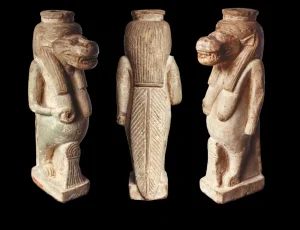
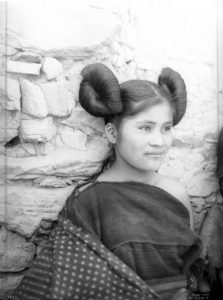 Side note; Taweret is the goddess who protected pregnant women in ancient Egypt. There were no temples, shrines, or priests dedicated to her; nevertheless, throughout the pharaonic period she was more popular than any other god. Her only rival was Bes, the god who protected babies through childhood....Taweret means the Great One. She was a composite creature: a pregnant hippopotamus with pendant human breasts, lion's claws, and a crocodile tail.... She was typically displayed with her lion-claw hands holding the sa, the ancient Egyptian version of a lifebelt, which was also the hieroglyph for protection. A tripartite wig further defined her as a divinity. In some instances, she was embellished with a sun disc and cow-horn crown, too, which affirmed her affiliation with Hathor, the goddess of love and sexuality. This further suggested her power was cosmic, and not simply limited to the household....
Side note; Taweret is the goddess who protected pregnant women in ancient Egypt. There were no temples, shrines, or priests dedicated to her; nevertheless, throughout the pharaonic period she was more popular than any other god. Her only rival was Bes, the god who protected babies through childhood....Taweret means the Great One. She was a composite creature: a pregnant hippopotamus with pendant human breasts, lion's claws, and a crocodile tail.... She was typically displayed with her lion-claw hands holding the sa, the ancient Egyptian version of a lifebelt, which was also the hieroglyph for protection. A tripartite wig further defined her as a divinity. In some instances, she was embellished with a sun disc and cow-horn crown, too, which affirmed her affiliation with Hathor, the goddess of love and sexuality. This further suggested her power was cosmic, and not simply limited to the household....
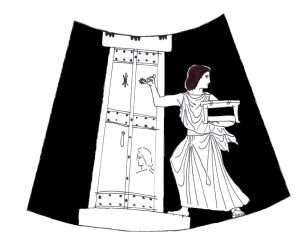
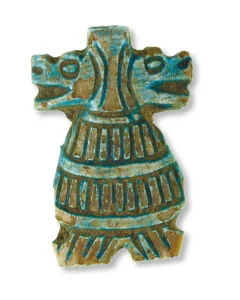 This article features a rare, perhaps unique, magical vessel that was used to assist pregnant women. The statuette is made of a faience-like unglazed material and is 20 cm tall. The top has a fairly wide opening and is drilled down the centre to connect to a channel leading to Taweret’s right breast. When fluid was poured in the top, it would emerge through the statuette’s breast. The fluid would bring with it the magical power of the goddess. The roughly hexagonal shape of the breast opening suggests that the vessel may have contained a stopper, or held a shallow ‘pill box’ crown, since the goddess is sometimes portrayed wearing that or the more elaborate crown evocative of Hathor. Unfortunately, we know nothing of its ancient history; where it was found, and when it was used, are unknown. It probably dates to the Ramesside Period or possibly later in the Third Intermediate Period. It was donated to the Cincinnati Art Museum in 1947 by Dikran Kelekian, a well-known antiquities dealer. The museum deaccessioned it, and I was able to buy it in a sale at Sotheby’s in New York on 14 December 1994.
This article features a rare, perhaps unique, magical vessel that was used to assist pregnant women. The statuette is made of a faience-like unglazed material and is 20 cm tall. The top has a fairly wide opening and is drilled down the centre to connect to a channel leading to Taweret’s right breast. When fluid was poured in the top, it would emerge through the statuette’s breast. The fluid would bring with it the magical power of the goddess. The roughly hexagonal shape of the breast opening suggests that the vessel may have contained a stopper, or held a shallow ‘pill box’ crown, since the goddess is sometimes portrayed wearing that or the more elaborate crown evocative of Hathor. Unfortunately, we know nothing of its ancient history; where it was found, and when it was used, are unknown. It probably dates to the Ramesside Period or possibly later in the Third Intermediate Period. It was donated to the Cincinnati Art Museum in 1947 by Dikran Kelekian, a well-known antiquities dealer. The museum deaccessioned it, and I was able to buy it in a sale at Sotheby’s in New York on 14 December 1994.
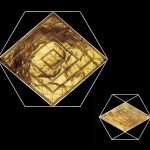
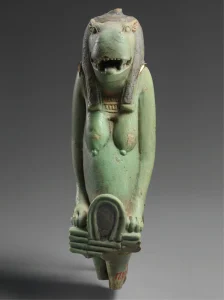 Taweret was the saviour of pregnant women, who relied on her from the Old Kingdom through to the Ptolemaic era. Her amulets are ubiquitous. Even during the Amarna Period, when Akhenaten closed all temples and demanded worship exclusively for Aten, the gods who protected pregnant women and their babies retained their power and popularity. We know this because factories in the royal city of Amarna produced amulets of Taweret and Bes for the local population. Women wore these around their necks....To garner the magic of the gods, women gave birth in a specially decorated room in the house, or in a similarly decorated bower outside it. The depiction of Bes was standard. When labour was prolonged and self-care ineffective, it was time to call in a professional. But that was a serious problem for ancient Egyptian women. There is no ancient Egyptian word for obstetrician, midwife or birth attendant of any sort. Women in labour were accompanied by family members or close friends. Perhaps in a difficult delivery, a woman from the village who had borne multiple babies might be consulted....
Taweret was the saviour of pregnant women, who relied on her from the Old Kingdom through to the Ptolemaic era. Her amulets are ubiquitous. Even during the Amarna Period, when Akhenaten closed all temples and demanded worship exclusively for Aten, the gods who protected pregnant women and their babies retained their power and popularity. We know this because factories in the royal city of Amarna produced amulets of Taweret and Bes for the local population. Women wore these around their necks....To garner the magic of the gods, women gave birth in a specially decorated room in the house, or in a similarly decorated bower outside it. The depiction of Bes was standard. When labour was prolonged and self-care ineffective, it was time to call in a professional. But that was a serious problem for ancient Egyptian women. There is no ancient Egyptian word for obstetrician, midwife or birth attendant of any sort. Women in labour were accompanied by family members or close friends. Perhaps in a difficult delivery, a woman from the village who had borne multiple babies might be consulted....

What are EACH sat on?

'Tomb' or gateway? Death or rebirth?
The only professional who might be called was a heka or magician. We have excellent data showing at least some hekas specialised in helping pregnant women. Flinders Petrie excavated the house of a ‘magician’ at Kahun during his 1888-1889 season. He found several items relating to birthing, the most important of which was a mask of the god Bes. It was made of cartonnage and had obviously been used multiple times. The right eye aperture had been enlarged to help the magician to see more clearly, and the mask had been repainted, indicating repeated use. It is now in the Manchester Museum. In addition, he found a statuette of a naked woman with pendulous breasts wearing a Bes mask. Petrie and James Quibell also found a similar statuette in the ‘Tomb of the Magician’ beneath the Ramesseum during their excavations in 1885-1886. That, too, was a mature naked woman with pendulous breasts, suggestive of having borne children. She holds snakes in her hands showing that she had power over evil intruders. That statuette is also on display in the Manchester Museum. No Taweret mask has been found, but we do have several similar statuettes depicting naked women wearing Taweret masks. Their pendulous breasts suggest they too had borne babies....

Milky white? Any stretch marks?

'Stamp of the feminine'. Real or symbolic?
We have no clue how the fluid from Taweret’s breast was used. In my years practising obstetrics, I found that women uniformly dislike the development of stretch marks. It is possible the fluid was rubbed on the abdomen in the hope of preventing them. There are special unguent vessels known by their German name Gravidenflaschen (‘pregnancy jars’), which are believed to have held a balm for that purpose. Those vessels may also have had magical properties. I am inclined to believe this magical Taweret vessel was reserved for more significant problems. Its fluid could have been ingested or rubbed over the abdomen in hope of enhancing contractions in labour, or in hope of making the head come down. It could have been applied to the mother’s breasts to promote lactation, which was essential for the newborn to survive, as there was no substitute for human breast milk in pharaonic times. Regardless of the nature of the problem or how it was used, we can conclude that this magical vessel was an important talisman to treat problems in pregnancy by drawing the power of ‘the Great One’, Taweret, to aid women in peril during pregnancy. ['Ancient Egypt' / March-April 2024].

Any light?
A practical example: ''The variety of Gnosis propounded by Jung {in his Sermons} - is a 'way' that has been described as the Faustian path, as outlined in Goethe's masterpiece....He walks the perilous but ultimately rewarding highway {'hogs back'?} - that leads to the reservoir of vitality and power, the sole true source of transformation. He 'invokes' the spirit of Earth, the amoral, energetic force of nature, which is unfettered by the inhibitions and high sounding maxims of the intellect. He descends into chaos and tribulation, into the realms beyond the limits of convention and human laws where the seething MAGMA of raw transformative energy resides in its unrefined and undiluted state {molten rock?}. It is only by way of this commitment to darkness, error, suffering along with ecstasy, passion and battle, that he attains to his ASCENT into the realms of light, guided by the transfigured Sophianic spirit of Margaret {Beatrice?}. It is thus that he can say that it is ''wisdoms'' final say - that freedom and life belong to that man solely who must reconquer them each day.'' [Page 73 'The Gnostic Jung and the Seven Sermons to the Dead' / S. Hoeller].
''Set in Stone'' = 'Philosophers stone'?
Side note: ''Margaret means 'pearl' in Greek.'' [Page 172 'The Left Hand Path' / S. Flowers].
{M}argaret = Cassiopeia link?
Mentes-Athena? {'The Hero and the Goddess: The Odyssey as Pathway to Personal Transformation' / J. Houston].

 {Something hinted at in 'prose' form}: "Hark! A swift war-like commotion through the stellar spaces ran, as all the heavenly planets overheard the little plan: 'We will not have this rebel loosened on earth', protested they. We will not countenance such a 'revolt'. Man must our laws obey!' {Moses link?}. They all recalled the 'many lives' they'd helped him live before {'east' relative to 'west'?}. They all looked back on ages past, and then - they sternly swore....Then they all reversed their motion {static/dynamic?}, and walked backward, ONE BY ONE - endeavouring to escape the thing the karmic gods had done. But, retrograde or not, the word went forth to shake the earth {'Poseidon'?} - and Gee-OR-Gee, {the Gold in Earth} came to the HOUR of birth! And ever since, the planets as they 'GRACE' his horoscope, have kept their faces towards him, walking backward, 'VOID' of hope. For he upsets all theories, and their age old thought he jars, preaching a new age eternal - in defiance of the stars! 'He' came to slay the dragon, and to span the bridge of time - to find the chemicals of 'LIFE' {''bit'' link}, and blend their force sublime. To unlock the earths grim secrets - facing 'revolutions' strife - and scaling highest heaven to demand immortal life." [Poem by Edith Painton taken from the book 'The Zodiac and the Salts of Salvation' / Inez Perry].
{Something hinted at in 'prose' form}: "Hark! A swift war-like commotion through the stellar spaces ran, as all the heavenly planets overheard the little plan: 'We will not have this rebel loosened on earth', protested they. We will not countenance such a 'revolt'. Man must our laws obey!' {Moses link?}. They all recalled the 'many lives' they'd helped him live before {'east' relative to 'west'?}. They all looked back on ages past, and then - they sternly swore....Then they all reversed their motion {static/dynamic?}, and walked backward, ONE BY ONE - endeavouring to escape the thing the karmic gods had done. But, retrograde or not, the word went forth to shake the earth {'Poseidon'?} - and Gee-OR-Gee, {the Gold in Earth} came to the HOUR of birth! And ever since, the planets as they 'GRACE' his horoscope, have kept their faces towards him, walking backward, 'VOID' of hope. For he upsets all theories, and their age old thought he jars, preaching a new age eternal - in defiance of the stars! 'He' came to slay the dragon, and to span the bridge of time - to find the chemicals of 'LIFE' {''bit'' link}, and blend their force sublime. To unlock the earths grim secrets - facing 'revolutions' strife - and scaling highest heaven to demand immortal life." [Poem by Edith Painton taken from the book 'The Zodiac and the Salts of Salvation' / Inez Perry].
Question. Which would represent ''backward'' - up or down 'stream'?
'Overthrowing the Old Gods' / A. Crowley.
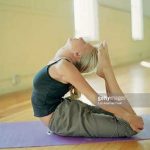
Arms forward = 'west'?
And/or: ''void'' in relation to: ''Awareness isn't something within your experience. It is an emptiness that contains all you are experiencing." ['Lucid Living' / T. Freke].
''You cannot hide. I 'see' you. There is no life in the void - only death.'' ['Lord of the Rings: The Fellowship of the Ring'].
Question. Whats the remedy?

East or west?
From a different perspective: " According to the Sarcophagus of Seti I, the Duat is the body of the god Asar, which is pictured as a man bending backwards into a circle, touching his toes with his hands {Aries/Pieces?}. It is said to have 14 Aats or regions.
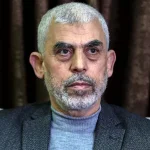
"Who is Peace?"
The ultimate destination of those departed is the region of the Duat called Sekhet Yaru - meaning ''Field of Plants'' {therefore 'vegetation' link?}. It is located within the region called Sekhet Hotep or ''Field of Peace''. Hotep may be translated as peace and/or offerings which make peace." [Page 230 'Egyptian Book of the Dead' / M. Ashby].
Try ''14'' and/or ''grace''.
Nunbers 14:14... and they will tell the inhabitants of this land. They have heard that you, O Lord, are in the midst of this people. For you, O Lord, are seen face to face, and your cloud stands over them and you go before them, in a pillar of cloud by day and in a pillar of fire by night.''
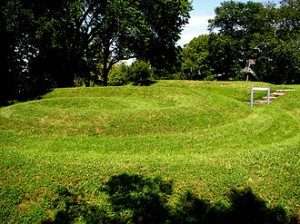
"Held by the tail is not yet caught."
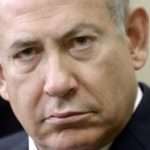
'Prince of Peace'?
And/or: "The reason is that each religion or philosophy that comes into the world is a Benjamin of humanity and insures its own life by 'destroying' its mother. It is because the symbolic serpent turns ever devouring its own tail; it is because, an essential condition of existence, a void, is necessary to every plenitude, space for every dimension, an affirmation for each negation: herein is the eternal realization of the phoenix allegory." ['Transcendental Magic' by E. Levi].
''Kings Mother''?
Try Part 1 {'mother'} and especially 3:8 before those first impressions hiss something else. Then link it all to 3:1 {under ''phoenix''}.
Try 'Trickster' character....as a means....?
Refresher: ''Life can only be understood backwards, but must always be lived forwards."
'Patriarch' / 'Matriarch' or vice versa? As a means....?
Side note: "You have three guesses: why does the proverb say ''Good things come in threes'', and why does the psychologist think that 3 restores the damaged 2 has caused by dividing? The reason , as Ludwig Paneth has stated, is that the triad leads to a new integration, one that does not negate the duality preceding it but rather, overcomes it, just as the child is a binding element that unites the male and female partner." [from the chapter: The Embracing Synthesis {3} / 'Mystery of Numbers' / Annemarie Schimmel].
Duality?
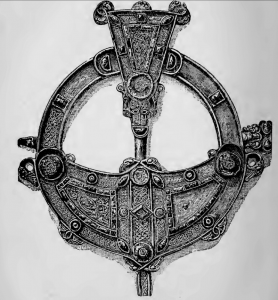
The 'Tara' Brooch. Embossed/debossed? Recall the 'portcullis' ahead of the 'Kings' chamber in the Gt. Pyramid.
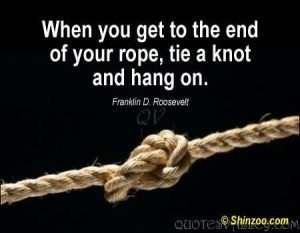 "It has almost become a cliché of these post Freudian times that 'life' is a continuum, a single thread, begun in an act of loving and ended in an act of dying. So we speak of the 'little death' of orgasm and the 'kiss of death' The Celtic goddess Arianrhod stands at both ends of the thread of life - because the ends meet. The Celts believed that life was an endless cycle of birth, death, and reincarnation. To symbolize this cycle, the Celtic kings wore a brooch in the shape of a wheel." [Pages 51/2 'Arachne Rising: The Search for the Thirteenth Sign of the Zodiac' / J. Vogh].
"It has almost become a cliché of these post Freudian times that 'life' is a continuum, a single thread, begun in an act of loving and ended in an act of dying. So we speak of the 'little death' of orgasm and the 'kiss of death' The Celtic goddess Arianrhod stands at both ends of the thread of life - because the ends meet. The Celts believed that life was an endless cycle of birth, death, and reincarnation. To symbolize this cycle, the Celtic kings wore a brooch in the shape of a wheel." [Pages 51/2 'Arachne Rising: The Search for the Thirteenth Sign of the Zodiac' / J. Vogh].
Question. How would that ''forward'' movement be represented? Precession?
Static/dynamic? Janus?
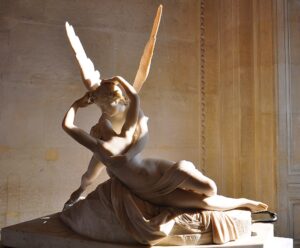

Venus/Cupid/Adonis.
And/or: ''All one has to do is turn around the arrow of ones attention. The Katha Upanishad puts it this way: 'God made the senses turn outward, man therefore looks outwards, not into himself. But occasionally, a daring soul, desiring immortality {or understanding a 'mind set'}, has looked back and found himself. In fact the ''daring soul'' doesn't lack encouragement. He's surrounded by countless reminders and opportunities, countless means of reversing the arrow of attention - if only he's sufficiently inquisitive about his true identity, and only if he's willing to drop for a moment opinions about himself based on hearsay and memory, and imagination and to rely on the PRESENT EVIDENCE...." [Page 56 'On Having No Head' / D. Harding. Parenthesis, this readers].
Arrow of Time?
Continued: Nordic mythology ‘starts’ off from that ‘intention’. Odin learns...in order to give back. Very well explained, from both an objective and subjective point of view, relative to "turning points in the evolution of consciousness", and that 'development' throughout the ages, within the book 'The Sacred History' by Jonathan Black.
Side note: "It happens that we know the Norse name of Gwydion's horse, if Gwydion was indeed Woden or Odin. It was Askr Yggr-drasill - the 'Ash tree that is the horse of Yggr'...." [Page 57 'The White Goddess'].
The Ash tree from which spear shafts are made. ''Pierced/wounded'' link?
All in relation to the Battle of the Trees which Mr Graves defines as: ''....What seems to have been the most important religious event in pre-Christian Britain."
'See' that ''battle'' in the context of the whole.
A working example: {i.e., in respect of a mind set}: ''Each tree or plant for the Druids, had numerous spiritual and magical associations with it: The Birch = New beginnings. The Rowan = Protection. The Willow = Intuition. The Ash = Interconnection. The Oak = Strength. The Holly = Balance. The Hazel = Wisdom. The Apple = Abundance. The Yew = Transformation.
So to seek the above energies that the tree represented to be applied into their own life's, a Druid if he was seeking {say} 'abundance' would eat apples, use a wand {in ritual} made from apple, meditate under an apple tree, etc etc.'' [Page 68 'Idiots Guide to Paganism' / C. McColman].
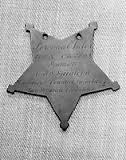
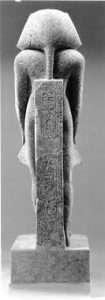
Upside down from a different perspective. 'Bell' skirt and 'flower' pot head?
A more practical example; now represented in its physical form; is the American medal of Honour. The ‘upside down’ Star/pentagram. That word pentagram; if allowed to; can play on the imagination because of those undisciplined first impressions. Due to the environment that we live in. Sometimes called the upside down cross. Its negative attribute given by some because of ‘Peter’ being crucified in the upside down position. Remember ‘Peter’ was giving back. Imparting those new ideas to anyone who would listen. Some stories say...It was his assailants who chose his final resting position. The ‘unconscious’ aspect of the same. Thinking cap time, i.e.,possible synchronistic link.
A working example: ''The star has five appendages {resembling people} in Egyptian art precisely because the starry realm is also the realm of human souls...In the duat when stars drop below the horizon, they continue in an attitude the inverse of that in which they rose above the opposite horizon. It is an upside down netherworld. The stars have turned over, and it happens that they will turn over again and right themselves.'' [Page 204 'Imagining the World Into Existence: Ancient Egyptian Manual of Consciousness' / N. Ellis].
Those same 'stars' that can be seen on the inside of the Step Pyramid.
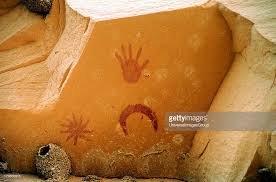
Left or right hand?
And/or: ''The text begins at the tomb entrance on the left-hand wall and goes down to the end of the second corrider, where it 'wraps around' and turns on the right hand wall, coming back UP the stairs so that the text ends on the wall opposite from where it began. This is but one graphic example of the great turnaround in which a world depicted one way flips and becomes its complementary opposite.'' [Page 203 same book].
''Second Nature''?
Refresher: "Error runs down an inclined plane, while truth has to laboriously climb its way up hill".
Side note: On the Right 'pillar' to an entrance of the 'caves' at Gebel el-Silsila can be seen the impression of a handprint.
'Right hand of god'?
And/or: ''The ritual role of Hathorian royal women {including Ankhesenamun} as 'gods hand'....'' [Pages 22/129 'Egypt's Anointing Mysteries' / A. Roberts].
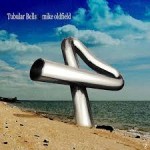
Wet and dry. Anything?
That same unconscious aspect that can be represented with salt water. That American ’upside down’ star/medal that has the Roman ’goddess’ Minerva, [explained elsewhere], as its central emblem, regardless of army / navy / pilots, i.e., Land / Sea / Air. Think about it. ‘Minerva’ in relation to ‘the self’ in relation to the ‘whole’. What better example [as a representation of something], could there be of someone who ‘returns’...In order to help someone else. Co-incidence? Or a ‘meaningful’ one.
"In classical antiquity '17' appears in connection with warfare and heroism." [i.e., Hiram Abif link]. Enlarged elsewhere.
A {working?} example: "According to Plutarch , Osiris was killed by Set on the 17th of Athys, {month of Hathor} - which falls in November / Scorpio, the cycle of death and transformation. He died in his 28th year, an allusion to the number of days in the lunar cycle which governs organic life. In all, 14 parts {half of the lunar cycle} of the 'dismembered Neter were collected by his sisters - and taken to the mythic island of flame to be 'reassembled' - a transformation that became the prototype of Egypt's funerary tradition." [Page 94 from the book by R. Clark].
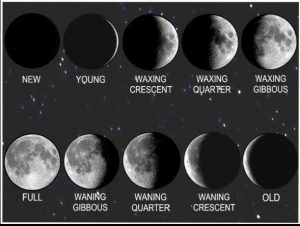 And/or: "The sacred lunar numbers seven {7}, fourteen {14}, and twenty-eight {28} were prominent in Osiris's cult. The lunar cycle of 28 days correspond to his descent into the underworld and ascent to heaven: 14 days each way, or 14 days on the mystic Ladder. Buddha's ladder of descent/ascent had 14 steps...." [Page 752 'The Women's Encyclopedia of Myths and Secrets' / B. Walker].
And/or: "The sacred lunar numbers seven {7}, fourteen {14}, and twenty-eight {28} were prominent in Osiris's cult. The lunar cycle of 28 days correspond to his descent into the underworld and ascent to heaven: 14 days each way, or 14 days on the mystic Ladder. Buddha's ladder of descent/ascent had 14 steps...." [Page 752 'The Women's Encyclopedia of Myths and Secrets' / B. Walker].
And/or: "Mythologically the Hydes {i.e., S/E of the Pleiades} were the daughters of Atlas and Aethra, and hence half sisters of the Pleiades, with whom they made up the 14 Atlantides..." ['Page 387, 'Star Names: Their Lore and Meaning'].
Ebb and flow?
N.B. Orion who was killed {'wounded'?} by a scorpion. Now on opposite sides of the zodiac. All as a means....?
Side note: "Now, the only glyph on the outside of the pyramid {north side} was that on the portal of the double arch, cut into the 17th course of the exterior of the pyramid. This hieroglyph is the horizontal line." ['The Zelator']. Try ''horizon{tal}''.
Synchronistic?...'The 15:17 To Paris. A True Story...' - Spencer Stone. Recall what ''15'' implies.
15th September 1940 ?
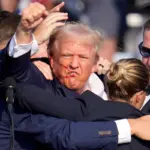
Mr Big or small balls?
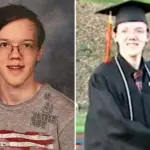
R.I.P. Which one has the testicles?
A working example: "This fight is clearly regarded by the scribes as an event shrouded in mystery. In the Book of the Dead, especially in spell 17, it gives an account of the battle between Horus and Set over a period of 80 years. Horus loses his 'eye' and Set his 'testicles' {'fire'?} - the gods meanwhile are sorely vexed as to decide the rightful heir to the 'vacated' office of Osiris." [Taken from the book 'The Death of the gods in Ancient Egypt'].
Spirit {'fire'} and soul {'eye'} all as a means....?
Question. Why 80?

What would he have done with a loser? Especially the sore-sorry type?
 And/or: "This is the beginning of the praising's and glorifications for going out and coming into the Neterkhert, glorious in Amentet, the beautiful place. These words are for allowing one to go out into the light in all the forms that a person may desire, to play the Senet game in the resulting booth, and to go forth as a living soul.....Who is this person that is being spoken about? [[Page 178 ' Egyptian Book of the Dead' / M . Ashby].
And/or: "This is the beginning of the praising's and glorifications for going out and coming into the Neterkhert, glorious in Amentet, the beautiful place. These words are for allowing one to go out into the light in all the forms that a person may desire, to play the Senet game in the resulting booth, and to go forth as a living soul.....Who is this person that is being spoken about? [[Page 178 ' Egyptian Book of the Dead' / M . Ashby].
Akhet to enlarge.
Chapter '17' is to some the most important in the same book.
The author of 'The Ancient Secret of the Flower of life' does the same on page 145 of Vol 1. Mixing up numbers like 17.5 years and 45 degrees with the left and right eye of Horus. All in story form.
'Thirtyfive' ?
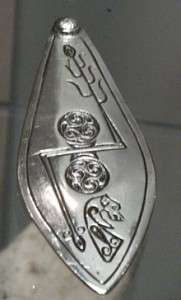
Leaf 'fallen' in autumn? Abstract ''wand''? Try 2:3

Sign of Venus?
Eastern equivalent?..."In the East, the realm of Pre-eminent Happiness is Bhagavan Vajra-Sattva Akshobhya, who is pictured as blue in colour, seated on a throne supported by elephants, and holding a five pronged dorje. The dorje is a Tibetan form of magic wand, being a thunderbolt sceptre. For Westerners this could easily be regarded as a wand, with a star or pentagram at its tip; a five pointed star that has all the implications and power of the 'lightening flash' of the Qabalistic Tree of Life, that traces the descent of force from the heights of creative power. This buddha is known as the hero-minded one, or one of indestructible mind. In short he is a veritable Heracles. He is embraced by the Mamiki the Divine Mother, and from them radiates the white light of the principle of consciousness." [Extract from the book by G. Knight].
'The White Goddess' / R. Graves.
"The Tibetan system proceeds to elaborate very considerably upon the five-fold wheel."
Question. Where have you seen the elephant before relative to the number 'five'? Put all the other {keys?} together to understand something further. It also defines the Greek equivalent of same principle - and/or therefore the ''number'' it relates to? Proving the viability of subject material regardless of ones {first?} impressions of it.
Question 2. What would the principle of UNconsciousness be represented by?
And/or, i.e.,analogy of same principle - but from a different 'angle' [key] ..."Spiritual teacher = 'The Guru Gita': verse 17 aptly describes the guru as ''dispeller of darkness'' [from gu, ''darkness,'' and ru, ''that which dispels'']." [Extract from the book 'Autobiography of a Yogi'].

"Head Jar." What could grow out of it?
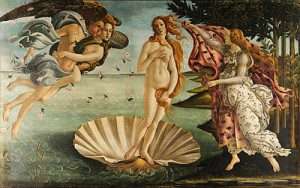
Venus rules over Taurus: A beginning or end?
Egyptian equivalent?: "Since the cosmic Bull had 'rule' over the human neck and throat, it also had rule over human speech. It is recorded that the temples of Serapis were so built that, during a certain time of the year a beam of sunlight fell onto the lips of the statue of Serapis within the temple. The lips were of course the outer symbol of the Word, and the Egyptian hieroglyph 'ru', which was used to denote the lips, as well as the 'birth passage', was adopted into the early Christian symbolism of the ankh cross...This rule was extended to the Word itself...It became an important element in the symbolism of pulpit lecterns from which the Word {'Logos'} of God was read...This symbolism has been missed by the majority of art historians ." ['The Secret Zodiac'].
'Standing'?

'Opening of the mouth'? Swan upping to enlarge.
"The mysteries were one brotherhood and they influenced one another much more than is realised, because men made pilgrimages and GRAFTED the ideas brought back on to their primitive cults, so that mystery cults are largely interchangeable. The traditions of Egypt will throw light on these cults." [Page 66 'The Arthurian Formula' / G. Knight].
'Blood of the Vine'?
"In thy blood - Blood is equivalent to "life" Genesis 9:4. The clause is equivalent to "Thy mother is a vine, living in thy blood," i. e., in the life of thee and of thy children. The excellency of a vine is in her fruitful branches; the glory of a mother in her noble children."
 "Rhacotis (Egyptian: r-ꜥ-qd(y)t, Greek Ῥακῶτις; also romanized as Rhakotis) was the name for a city on the northern coast of Egypt at the site of Alexandria. Classical sources from the Greco-Roman era in both Ancient Greek and the Egyptian language suggest Rhacotis as an older name for Alexandria before the arrival of Alexander the Great....The original city may have included the island of Pharos, a harbor mentioned in Homer's Odyssey as the kingdom of Proteus.[5] Plutarch writes that this reference influenced Alexander in his decision to found a new capital at the harbour of Pharos."
"Rhacotis (Egyptian: r-ꜥ-qd(y)t, Greek Ῥακῶτις; also romanized as Rhakotis) was the name for a city on the northern coast of Egypt at the site of Alexandria. Classical sources from the Greco-Roman era in both Ancient Greek and the Egyptian language suggest Rhacotis as an older name for Alexandria before the arrival of Alexander the Great....The original city may have included the island of Pharos, a harbor mentioned in Homer's Odyssey as the kingdom of Proteus.[5] Plutarch writes that this reference influenced Alexander in his decision to found a new capital at the harbour of Pharos."
"The root of the name, qd, means "construct". The prefix r-ꜥ can be used as a derivational morpheme forming nouns of action from infinitives, so a likely interpretation of the name as a whole is "building site" or "construction in progress".[2] Michel Chaveau of the École pratique des hautes études argues that Rhakotis may simply have been the Egyptian name of the construction site for Alexandria;[3] while John Baines contends that the style of the name and its linguistic context indicate that the name is older."
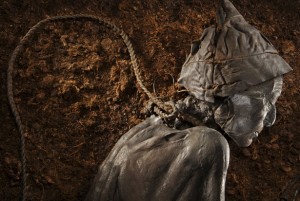
''They were not just trading but sharing religious beliefs. They may have been shared by the victims themselves.'' ['Bog Bodies: Secrets Revealed' / Channel 5]. Recall 'Freemasons' initiate ceremony of a noose around the neck. Coincidence?

Upside down? As a means...?
Analogy of same with all the above [keys ? principles?] in mind..."The method of the initiatory system is both synthetic and analytic, in constant application. It brings ideas and experiences together and it breaks them apart, repeating and recycling...In the Tarot, the Hierophant and the Hanged Man are the most appropriate cards for depicting the method; the former, a revealer of the sacred mysteries, and the latter, the 'sacrifice' that must be made in order to receive those mysteries. One is the teacher, who must interface with the divine and maintain position as a bridge; the other is the candidate or initiate, whose world must be 'turned upside down'. " [Extract from the book 'The Magister' by M. Katz ].
S/E?
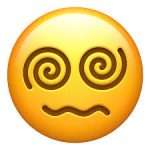
Where have you seen those 'eyes' before?
The study of the subject gives the same result, i.e.,the student becomes his own [inner?] 'teacher' by understanding those universal concepts [''repeating and recycling'', i.e.,revision] in order to define something. In order to understand the parts within the whole. The ''micro within the macro''. The self within the bigger picture. Possibilities of. Nothing more.
''The whole gamut of human experience {and/or emotions}''. Question. What animal represents that final word? ...Why?
Side note: A working example {in the present tense and moment of the WORD}: ''I do podcasts about theories and stuff - weird and wonderfull stuff....One of my theories is that i believe hieroglyphs are actually from the future and their basically just emoji's - because we are getting to the point where our words are getting shorter as when we send messages etc....So i think the pyramids are from the future and its hieroglyphs are just emoji's. Thats how we are going to talk in the future because we cant be bothered to write.'' [Scarlett - 'Pilgrimage' / BBC2 / 2022].
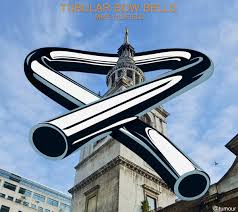
For whom the bell tolls.
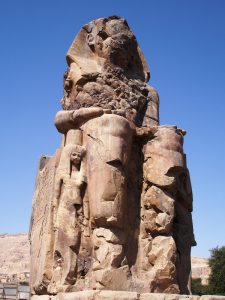 Continued: A ''synchronistic'' example of same [if only for this reader, and/or 'UNmanifested'?] could be the ''primordial scream'' omitted, in the upside down position, that allowed Mr M. Oldfield; of 'Tubular Bells' fame; to experience - in his own words - ''a rebirth''. Which became the beginnings of his own recovery. From darkness to light. From a negative to a positive. That internal struggle. Represented by the film that those ''Bells'' became associated with - 'The Exorcist'. [ 'Tabular Bells: The Mike Oldfield Story'. BBC Four]. Strangely enough those 'Bells' that form a figure 4, as well as the 'heart'.
Continued: A ''synchronistic'' example of same [if only for this reader, and/or 'UNmanifested'?] could be the ''primordial scream'' omitted, in the upside down position, that allowed Mr M. Oldfield; of 'Tubular Bells' fame; to experience - in his own words - ''a rebirth''. Which became the beginnings of his own recovery. From darkness to light. From a negative to a positive. That internal struggle. Represented by the film that those ''Bells'' became associated with - 'The Exorcist'. [ 'Tabular Bells: The Mike Oldfield Story'. BBC Four]. Strangely enough those 'Bells' that form a figure 4, as well as the 'heart'.
AND/OR: ''Ring the BELLS that still can ring. Forget your perfect offering. There is a crack in everything. That's how the light gets in.'' {Prologue: 'Dreams of Isis' / N. Ellis].
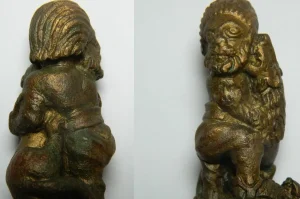
"An unearthed bronze key handle suggests lions were used in executions in Roman Britain, archaeologists have said. The handle, which shows a "Barbarian" grappling with a lion, was excavated from under a Roman town house, off Great Central Street in Leicester.
It also shows figures of four boys cowering in terror." Question. Barbarian or "Master" of the house?
"The haunting tones of the church bell beckoned across the wet fields as the ancient oak came into view..." Douglas Monroe.

''Crack between the worlds of the growing one and the burning one.''
"The voice of truth in a person that has not yet awakened to spiritual life, is the ''still small voice'' that may be felt in the heart, listened to by the imperfect; as a half conscious dreamer may listen to the ringing of bells in the distance; but in those that have become conscious of life, that have passed through the first 'resurrection' of the spirit in their own heart, and received the baptism of the first initiation, administered by themselves, the voice of the new born 'ego' has no uncertain sound, but becomes the powerful Word of the 'Master'. [Emphasis this readers. Chapter 1, from the book by F. Hartman]. Link to the word ''teacher.''
Cranes?
And/or..."You may care to dwell upon the parable which indicates that 'God' is not to be found in the strong wind nor the earthquake, nor in the fire but only within the silence of the still small voice." [From the book 'The Silent Road'. Mentioned elsewhere].
''Ishon'' to enlarge.
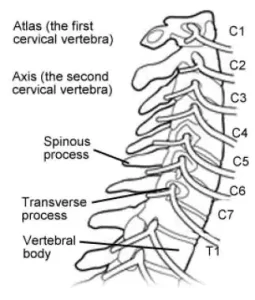
Ladder of ascent. Seven steps to freedom. 'Three and four' to enlarge.
A working example: ''You cannot do it all in one step. But if little steps are taken in the right direction - much can be accomplished. It takes patience and time.'' [Desert Father: Abba Climacus: St. Catherines Monastery - Sinai].
And/or: ''Abbot John of Raithu on the shores of the Red Sea, asked Abbot John to write about the spiritual life: ''Show us the way to Heaven, the way Jacob saw the ladder.'' [Day 'nineteen': Pilgrimage of Freedom: Lent 2023: Magdala: Israel].
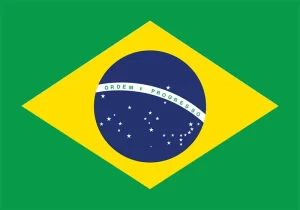
Flag of Brazil. 'Twentysix' stars above the equator. The solitary one = Spica - below. 'Twentyseven' in total. 'nineteen{th}' of November 1889 = Independence Day.
From a different perspective: ''Wherever metallurgy is practised in traditional cultures, it is shrouded in secrecy, and ancient Egypt is no exception, though a cryptographic text in Ramses {Ramesses} VI's tomb at Thebes, orientated towards the Book of Day's iconic scene of the 'Little Re' gestating in Hathor's womb - LIFTS the veil a little on Egypt's metallurgical lore, giving out secrets rarely disclosed about the sun gods birth {i.e., in the 'corridor' of the 'first hour of birth'}. Ramses seems to have been a king particularly steeped in Hathor's copper mysteries...Further more, Re 'is on the way to the stars which the book {called} ''Dissolution'' has named, stating: Sothis -18 stars are behind her and eighteen stars in front of her....This is the division of the year after 180 days {i.e., each of the thirtysix decans representing a ten day period}....He is born in that mysterious dawn time between night and day, the first hour called 'She who Raises the Beauty of her Lord'.'' [Pages 137/151-2 'Hathors Alchemy'].
Refresher: ''Tabular bells comprises 18 metal tubes.''
Sistrum?
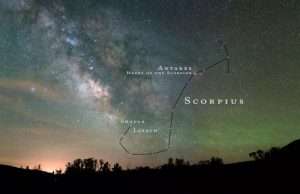
The tail end of the ''stinger'' = two swimming ducks. And/or: Canis Minor = 'Crossing of the Water-dog'.
"Procyon appears on the flag of Brazil, symbolizing the state of Amazonas.[48] The Kalapalo people of Mato Grosso state in Brazil call Procyon and Canopus Kofongo ("Duck"), with Castor and Pollux representing his hands. The asterism's appearance signified the coming of the rainy season and increase in food staple manioc, used at feasts to feed guests....The constellations in Macedonian folklore represented agricultural items and animals, reflecting their village way of life. To them, Procyon and Sirius were Volci "the wolves", circling hungrily around Orion which depicted a plough with oxen."
Sheep decans?
Wolves / hunger.
 A working example {that very first one?}:"The principle of the city came to me as an expression of a cosmic pattern, rather after the fashion of Dion Fortune's the 'Cosmic Doctrine'. First a crossways of two elements, a road and a river {'fording'?}, causing a center that is then ring fenced by a city wall or Ring-Pass-Not and then the pointing upward to the heavens of all the spires and towers of the little parish churches, of which there were very many in London....
A working example {that very first one?}:"The principle of the city came to me as an expression of a cosmic pattern, rather after the fashion of Dion Fortune's the 'Cosmic Doctrine'. First a crossways of two elements, a road and a river {'fording'?}, causing a center that is then ring fenced by a city wall or Ring-Pass-Not and then the pointing upward to the heavens of all the spires and towers of the little parish churches, of which there were very many in London....

Senusret I was the son of Amenemhat I (c.1991-1962 BC), the founder of the Twelfth Dynasty. He was named after his grandfather Senusret, who appears in a few later sources as ‘god’s father’, and as the founding figure of a new line of kings. The mother of Senusret I was a woman called Neferitatjenen. Her name sounds somehow strange, and is indeed only known from a 19th-century copy of a statue inscription. The statue depicted the queen, but is now lost, so there is no way to check if the name is correct. The woman herself remains a mystery.
Nothing can be said about the king’s childhood. We do not know where and when Senusret I was born. At the beginning of his reign, Amenemhat I moved Egypt’s capital from Thebes to the North, founding a new city Itj-tawy (‘seizer of the Two Lands’) about 60km south of modern Cairo. Itj-tawy’s exact location is still unknown, but it was highly symbolic: sited at the border between Upper and Lower Egypt in the area regarded by the ancient Egyptians as the middle of their country. We do not know exactly when this happened or whether or not Senusret had been born by that time.
Along with this came the significance of towers and bells, and the esoteric powers of sound - which can be of considerable practical interest in the technicalities of bell manufacture. The dimensions of which affect the type of sound that goes out - and also the principle of change ringing - in which a mathematical combination is pursued throughout its entire course of possibilities. This is a phenomenon unique to Britain, as on the continent the practice is for carillons of bells that play tunes. All this seemed to have some connection with the mathematical researches and angelic tablets of Dr John Dee. In pursuit of this, i found myself much concerned with St Mary Le Bow, and other churches constructed by Wren after the great fire of London. As part of the conference i was able to lay on a guided tour to a selection of his churches around St Paul's cathedral - St Martin's on Ludgate Hill, St Sepulchre opposite the Old Bailey, St Vedast's Foster Lane, St Mary Le Bow, St Mary Aldermary, St Nicholas Cole Abbey, St Benet Paul's Wharf, St Andrew by the Wardrobe, St Brides Fleet Street, in a clockwise circumambulation that ended in St Paul's cathedral itself at a power point marked by a brass grating directly under the midpoint of the dome and over the crypt. There was some talk of Sir Christopher Wren being associated with a secret society of his time called the Fedeli..." ['I Called it Magic' by G. Knight].
Question. 'Higher' of the Greater Mysteries? And/or ''Ring fenced by a city wall'' - recall the wall {white?} around that very first pyramid. Representation of same concept?
'Catalogue of Cities' {'White Goddess' / R. Graves}.
"Everyone has an internal thought process: that silent other self who speaks to you; the one you debate with." [First sentence; first paragraph; first page of the book by Q. S. Lam ].
Side note: The young Senusret was probably educated at the royal court either by a private tutor – perhaps a high official – or by several teachers, perhaps joined by other royal children and the children of courtiers. Here, he must have met Intefiqer, who later bore the title ‘foster child of the king’. Intefiqer was therefore raised at the royal palace together with royal children, evidently under Amenemhat I. He later became vizier and was one of the leading officials under Senusret I.

Shadow / Anima? For whom? 'Fold/Unfold' to enlarge.
 And/or: "Don't you know,'' asked the Sage, ''that important secrets must be hidden under an apparently trivial aspect. Now Senen-Mut {Hatshepsut's 'teacher'} attracts the attention of the seeker by saying explicitely that this symbol 'has not been found since the ancestors', by which remark he wants to indicate that it corresponds to the particular case of this 'moment'. '' I do not want at this moment to develop the whole meaning of this symbol, but i may tell you this much, that this Sage confirms in it the androgyny by the Queen Hatshepsut who, for a period of her reign, takes upon herself the role of masculinity, whereas the name and role of Senen-Mut, by a curious crossing, gives to this Sage - although he was a man - a feminine aspect in his role as foster-father of the royal maid." [Page 242 'Her-Bak: The Living Face of Ancient Egypt' / Isha Schwaller de Lubicz].
And/or: "Don't you know,'' asked the Sage, ''that important secrets must be hidden under an apparently trivial aspect. Now Senen-Mut {Hatshepsut's 'teacher'} attracts the attention of the seeker by saying explicitely that this symbol 'has not been found since the ancestors', by which remark he wants to indicate that it corresponds to the particular case of this 'moment'. '' I do not want at this moment to develop the whole meaning of this symbol, but i may tell you this much, that this Sage confirms in it the androgyny by the Queen Hatshepsut who, for a period of her reign, takes upon herself the role of masculinity, whereas the name and role of Senen-Mut, by a curious crossing, gives to this Sage - although he was a man - a feminine aspect in his role as foster-father of the royal maid." [Page 242 'Her-Bak: The Living Face of Ancient Egypt' / Isha Schwaller de Lubicz].
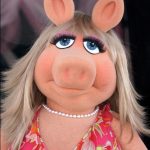 Nephew/Uncle. Niece/Aunt?
Nephew/Uncle. Niece/Aunt?
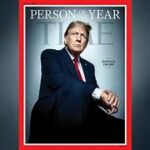
Which one's "piggy?"
A working example: The custom of fosterage was almost universal among the Celts: a child was raised by a noble family and taught household customs and given a general education.....Pendaran Dyfed appears in Triad 'twentysix' as Pwyll's foster-father, and the one to whom Pwyll gave the swine which came from Annwn. Pryderi is said to have tended them during HIS fostering. There is a piece of anachronicity between this branch and Branwen, where Pendaran is described as a young page-boy {Aquarius?}, left with Bran's son to govern Britain in his absence. Yet among those seven who return from Ireland is Pryderi himself!
Piglet movement from one sow to another, known as fostering, is done frequently when the number of piglets a sow gives birth to does not match her rearing ability. Circumstances may also arise where piglet relocation is required such as sow illness or death, or when a piglet fails to thrive on their birth sow.
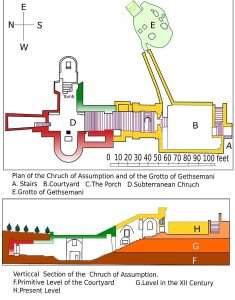 AND/OR: "I would like to POINT something out. As we come down these very dramatic steps, towards the Tomb of Mary - on my right in an alcove {half way down} is the burial place of a Byzantine Queen called Millicent and {later on?} her daughter. About 800 years ago at the time of the Crusaders. Eventually it was taken away and in its place is an altar to Mary's mother and father all in accord to the commentary of The Gospel of St. James. And on the other side opposite in another niche where there would have been another tomb - is dedicated to the FOSTER father of Jesus, the spouse of Mary to Joseph. Now lets continue down to the tomb which is looked after by the Greek Orthodox and Armenians priests. " [Day Nine: Tomb of Mary/ Jerusalem: Pilgrimage- Lent 2024].
AND/OR: "I would like to POINT something out. As we come down these very dramatic steps, towards the Tomb of Mary - on my right in an alcove {half way down} is the burial place of a Byzantine Queen called Millicent and {later on?} her daughter. About 800 years ago at the time of the Crusaders. Eventually it was taken away and in its place is an altar to Mary's mother and father all in accord to the commentary of The Gospel of St. James. And on the other side opposite in another niche where there would have been another tomb - is dedicated to the FOSTER father of Jesus, the spouse of Mary to Joseph. Now lets continue down to the tomb which is looked after by the Greek Orthodox and Armenians priests. " [Day Nine: Tomb of Mary/ Jerusalem: Pilgrimage- Lent 2024].
Melissa?
Combining the mild and the innocent, this sweet and feminine name is worthy of a comeback, in the mode of Madeline and Cecilia. Its original, also attractive form is Melisende, which came from Germany to France and was borne by a daughter of Charlemagne.
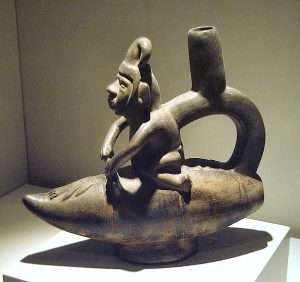
Little reed horse.
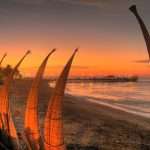 Working example: "Today the fishermen of Huanchaco, still use simple nets, while riding traditional reed boats, a way of fishing inherited from their ancestors. By using the nets bought/exchanged from the people of Caral they were able to catch more fish - and the fish they didn't eat they began to trade with. One of the most important aspects of the origins and beginnings of a civilisation. It tells more about an open community - being able to trade with excess goods. The people at Caral traded nets for fish a thousand years earlier. The first flowering of trade in the America's. When you exchange products from different regions you are actually fostering one of the principle elements of civilisation. That is, on the one hand, social interaction and at the same time you are increasing the economy." ['Blowing Up History: CARAL' / S3 EP2].
Working example: "Today the fishermen of Huanchaco, still use simple nets, while riding traditional reed boats, a way of fishing inherited from their ancestors. By using the nets bought/exchanged from the people of Caral they were able to catch more fish - and the fish they didn't eat they began to trade with. One of the most important aspects of the origins and beginnings of a civilisation. It tells more about an open community - being able to trade with excess goods. The people at Caral traded nets for fish a thousand years earlier. The first flowering of trade in the America's. When you exchange products from different regions you are actually fostering one of the principle elements of civilisation. That is, on the one hand, social interaction and at the same time you are increasing the economy." ['Blowing Up History: CARAL' / S3 EP2].
Mind set being another?
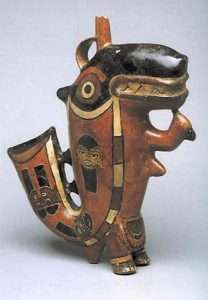
Inside the 'belly' of ?
"Caballitos de totora are reed watercraft used by fishermen in Peru for the past 3000 years, archaeologically evidenced from pottery shards. Named for the way they are ridden, straddled ('little reed horses' in English), fishermen use them to transport their nets and collect fish in their inner cavity. The name is not the original name, as horses were not introduced to South America until after the Spanish conquest of the Inca Empire. The ancient Mochica name of the watercraft is tūp. They are made from the same reed, the totora (Schoenoplectus californicus subsp. tatora), used by the Uru people on Lake Titicaca, and considered part of the Peruvian's National Cultural Heritage since 2016.....
The Swamps of Huanchaco are an ecological reserve about 14 kilometres (8.7 mi) northwest of the historic center of Trujillo, Peru. From this ecological reserve, people extracted the raw material for the manufacture of the ancient caballitos de totora used since the time of the Moche culture for fishing. Huanchaco fishermen still use materials from these swamps to make their fishing boats."
Jonah.
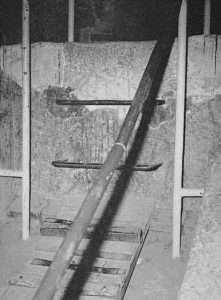
"The Great Step: This noteworthy feature of the Great Pyramid shoots up 3 feet high and is six feet wide. Once you step onto it, you are on a platform 8 feet deep, which is worn and chipped. This platform is part of the "road" that leads to the King's Chamber."

Stone step.
Practical example: "It may feel like a bit of a cliche but appreciating the progress you're making along the way instead of fixating on the end result can be freeing {'freedom'?}. It's an approach Ford has adapted. 'I now focus on the process much more than the outcome; i take time to celebrate and acknowledge the smaller steps and choose a kinder narrative....I get clear on my motivators and my 'why' and check in with myself as to how I'm feeling along the way, rather than being swept into a narrative of providing something to someone else. I feel much more self aware, and kinder in my self talk....Enjoying the journey can be difficult in a world that has become increasingly outcome-obsessed. But their are many ways we can foster this approach in our lives. The first one requires slowing down a little and realizing that joy comes from the doing, not the completing. So instead of rushing for it to be done, take a moment to enjoy the doing, and remember that lots of things in our lives are never truly done - but constantly evolve just like we do. Another vital step is acknowledging the small wins. Have lots of stepping stones to a big goal to pause on. Celebrate each new stone, look back and celebrate how far you have come from the first one {Karnak} - and look forward to the many stones in front." [Page 59 'Readers Digest' / April 2022].
Fostering / adopting?
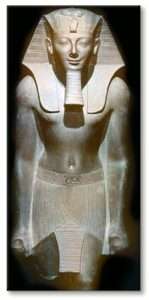
Happy or sad?

Glauberg Warrior. Whats the remedy for mad, bad or sad ?
Working example: Scripture tells us that Barnabas “was filled with joy,” “was a good man, full of the Holy Spirit and strong in faith,” and was a powerful evangelist. It also says he “encouraged the believers to stay true to the Lord” (Acts 11:23-24)....Known as the "Son of Encouragement," Barnabas emerges as a pivotal character in the Acts of the Apostles and exemplifies the Christian virtues of generosity, leadership, and reconciliation. His contributions were not limited to the financial support of the Apostles but extended to his pivotal role in nurturing the nascent church and championing the inclusion of Gentiles into its fold. This article aims to shed light on Barnabas's vital contributions to the early church and his enduring example of Christian fellowship and grace, and insight into how his life and actions can inspire our faith today....
Known as the "Son of Encouragement," Barnabas emerges as a pivotal character in the Acts of the Apostles and exemplifies the Christian virtues of generosity, leadership, and reconciliation. His contributions were not limited to the financial support of the Apostles but extended to his pivotal role in nurturing the nascent church and championing the inclusion of Gentiles into its fold. This article aims to shed light on Barnabas's vital contributions to the early church and his enduring example of Christian fellowship and grace, and insight into how his life and actions can inspire our faith today....
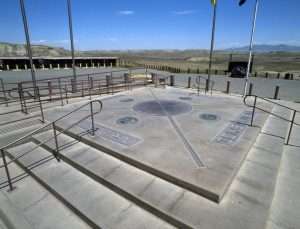
"Four Corners Monument, marking the only spot in the United States where four states come together."
 In Syrian Antioch: Due to growing persecution, Christians flee from Jerusalem to other eastern Mediterranean cities, including Syrian Antioch. Their evangelistic efforts proved extraordinarily successful. Luke says,
In Syrian Antioch: Due to growing persecution, Christians flee from Jerusalem to other eastern Mediterranean cities, including Syrian Antioch. Their evangelistic efforts proved extraordinarily successful. Luke says,
Realizing he needed help, “Barnabas went to Tarsus to look for Saul, and when he found him, he brought him to Antioch. So for a whole year Barnabas and Saul met with the church and taught great numbers of people. The disciples were called Christians first at Antioch” (Acts 11:25-26).

Ivory bag rings have been found in more than 70 cemeteries across southern, central, and eastern England dating to between the late-5th and 7th centuries AD. These rings are most frequently found in richly furnished female graves, and would have served as the framework for bags that hung at the waist.... Recent excavations at an early Anglo-Saxon cemetery in Scremby, Lincolnshire revealed a number of elaborate female burials containing such bag rings....Through a multi-methodological approach, we have established that the ivory used for the Scremby bag rings came from elephants living in an area of young volcanic rocks in Africa at some point during the 5th and 6th centuries AD.....Since most rings have been recovered near the hip {femur?}, it is thought that the bags were suspended from the waist alongside other objects such as iron knives, pairs of copper alloy girdle hangers, and iron ‘latch lifters’ (Vogt, 1960, MacGregor, 1985: 111)

Let us return to the Arcanum of Force.
It is said that “union makes force”, and one understands by this the alliance of individual wills with a view to achieving a common aim. It is the formula for the quantitative increase of force. With respect to qualitative force, it would be appropriate to say that “unity is force”, because one is strong only in so far as there is unity of spirit, soul and body, i.e. in so far as there is virginity. It is inner conflict that renders us weak: the fact that we serve two or even three masters at the same time.
In Scripture’s next paragraph, the Holy Spirit calls two of the five prophets and teachers of Syrian Antioch to leave on a mission (Acts 13:1-3). Barnabas takes the lead, Saul works shoulder to shoulder with him, and John Mark is invited to come along as their assistant. Their first stop is the island of Cyprus, where Barnabas grew up (Acts 13:4-5). Later, right after they leave the island, John Mark unexpectedly hightails it back home to Jerusalem. And this before the men faced any physical persecution.
When they reach out to Gentile leaders in Cyprus, Saul starts going by his Greek name, Paul (Acts 13:9). From this point on, Paul shares equal footing with Barnabas. Luke changes from “Barnabas and Paul” to “Paul and Barnabas” for quite a while and then starts changing back and forth.....Some people are best known for their nicknames. After he’s first introduced in Acts 4:36-37, Joseph is always called by his catchy nickname, Barnabas, “Son of Encouragement.”
Side note: 'Paul' means little one, small one.
Ishon?
And/or: 'Scrolls' can be seen on top of the columns in the city square of Cyprus. And the mosaics seen have zigzag shapes that surround all including the lozenge shapes. As with the mosaics in Magdala. Both have harbours {harbors}....A myth says that Alexander the Great died there while attempting to swim and Anthony and Cleopatra also connected.....Cyprus is known for its earthquakes.
Fire / Water.
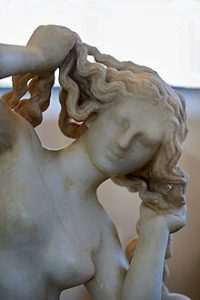
Scholars in the late-nineteenth and early-twentieth centuries, accepting Hesiod's "foam" etymology as genuine, analyzed the second part of Aphrodite's name as *-odítē "wanderer"[8] or as *-dítē "bright".....Hesiod derives the name Aphrodite from aphrós (ἀφρός) "sea-foam",[4] interpreting the name as "risen from the foam",
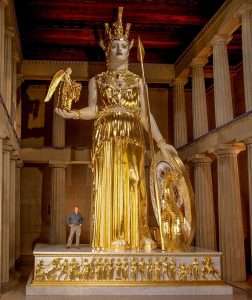
Chryselephantine statues were built around a wooden frame with thin carved slabs of ivory attached, representing the flesh, and sheets of gold leaf representing the garments, armour, hair, and other details. In some cases, glass paste, glass, and precious and semi-precious stones were used for detail such as eyes, jewellery, and weaponry.
And/or: Paphos,[a] also spelled as Pafos, is a coastal city in southwest Cyprus and the capital of Paphos District. In classical antiquity, two locations were called Paphos: Old Paphos, today known as Kouklia,[7] and New Paphos.[8] It is the fourth-largest city in the country, after Nicosia, Limassol and Larnaca, with an urban population of 63,600 in 2018.[9].....In the founding myth, the town's name is linked to the goddess Aphrodite, as the eponymous Paphos was the son (or, in Ovid, daughter) of Pygmalion[17] whose ivory cult image of Aphrodite was brought to life by the goddess as "milk-white" Galatea.[clarification needed]
The author of Bibliotheke gives the genealogy.[18] Pygmalion { a 'sculptor'} was so devoted to the cult of Aphrodite that he took the statue to his palace and kept it on his couch. The daimon of the goddess entered into the statue, and the living Galatea bore Pygmalion a son, Paphos, and a daughter, Metharme. Cinyras, debated as to if he is the son of Paphos[19] or Metharme's suitor, founded the city under Aphrodite's patronage and built the great temple to the goddess there. According to another legend preserved by Strabo (xi. p. 505), it was founded by the Agapenor, a hero of the Trojan wars.
Continued: And what an encourager he was! Scripture tells us that Barnabas “was filled with joy,” “was a good man, full of the Holy Spirit and strong in faith,” and was a powerful evangelist. It also says he “encouraged the believers to stay true to the Lord” (Acts 11:23-24, NLT).

Which corner?
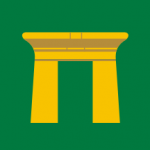
Nea Paphos. "Nea means new."
And/or: "Lazarus became the Bishop of Cyprus where there was a monastry with bell tower. Cyprus a link to Aphrodite/Venus {"coming out of her shell"}. Barnabas became patron Saint of Cyprus. Cyprus a city state with its own coinage. Only after the "laying of hands" did Barnabus and Paul go forth with their work. Archbishop Themus had a dream/vision about Barnabus telling him of his sarcophagus location on Cyprus. It was found with a body/skeleton with a scroll in its hand containing the Gospel of Matthew. It was found under a carob tree. RED cape given to Archbishop. {Pilgrimage of Paul Apostle of Hope: Pauls Travels on Cyprus Coast / Lent / Magdala / 2025}.
The word "carob" comes from Middle French carobe (modern French caroube), which borrowed it from Arabic خَرُّوبٌ (kharrūb, "locust bean pod") and Persian khirnub,[7] which ultimately borrowed it perhaps from Akkadian language harūb- or Aramaic חרובא ḥarrūḇā.[8] 'Ceratonia siliqua, the scientific name of the carob tree, derives from the Greek κερατωνία keratōnia, "carob-tree" (cf. κέρας kéras, "horn"),[9] and Latin siliqua "pod, carob".[10]
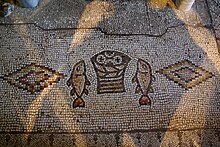
"I am gods wheat, and i am to be ground by the teeth of wild beasts so i may become the pure bread of Christ." {Ignatius of Antioch}.
In English, it is also known as "St. John's bread"[11][a] and "locust tree"[13] (not to be confused with African locust bean).[14] The latter designation also applies to several other trees from the same family. In Yiddish, it is called באקסער bokser, derived from the Middle High German bokshornboum "ram's horn tree" (in reference to the shape of the carob).[15]
The carat, a unit of mass for gemstones, and a measurement of purity for gold, takes its name via the Arabic qīrāṭ from the Greek name for the carob seed κεράτιον (lit. "small horn").[16][17][18]
Horn of plenty? One horns worth?
Horns of Consecration.
And/or: "At the State Opening of Parliament, the Monarch's Speech is kept in the Lord Chancellor's Purse." {'The Chase' / S17 EP91}.
'Opening of the Mouth'?
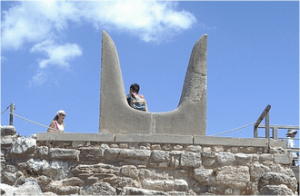
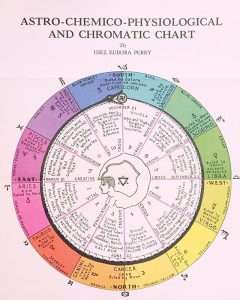
The phrase “hot on the heels” means in close pursuit of someone or something, or immediately after some event1. It originates from hunting terminology, where the “on the heels” part refers to a hunter’s literal closeness behind their quarry. The word “hot” alludes to the warmth of an active living creature, as opposed to the cold of a corpse or the unconsciousness of being “out cold” 1. When hounds are close to their prey, they are said to be “in hot pursuit.”
Side note: King of the Four Corners of the World (Sumerian: lugal-an-ub-da-limmu-ba,[1] Akkadian: šarru kibrat arbaim,[2] šar kibrāti arbaʾi,[3] or šar kibrāt erbetti[4]), alternatively translated as King of the Four Quarters of the World, King of the Heaven's Four Corners or King of the Four Corners of the Universe[5] and often shortened to simply King of the Four Corners,[3][6] was a title of great prestige claimed by powerful monarchs in ancient Mesopotamia. Though the term "four corners of the world" does refer to specific geographical places within and near Mesopotamia itself, these places were (at the time the title was first used) thought to represent locations near the actual edges of the world and as such, the title should be interpreted as something equivalent to "King of all the known world", a claim to universal rule over the entire world and everything within it.
'Spacetime'?

'She who loves silence'.
The title was first used by Naram-Sin of the Akkadian Empire in the 23rd century BC and was later used by the rulers of the Neo-Sumerian Empire, after which it fell into disuse. It was revived as a title by a number of Assyrian rulers, becoming especially prominent during the Neo-Assyrian Empire. The final ruler to claim the title was the first Persian Achaemenid king, Cyrus the Great, after his conquest of Babylon in 539 BC.
It is possible, at least among Assyrian rulers, that the title of King of the Four Corners was not inherited through normal means. As the title is not attested for all Neo-Assyrian kings and for some only attested several years into their reign it is possible that it might have had to be earned by each king individually, possibly through completing successful military campaigns in all four points of the compass. The similar title of šar kiššatim ("King of Everything" or "King of the Universe"), also with Akkadian origins and attested for some of the Neo-Assyrian kings, may have required seven successful military campaigns. The difference between the exact meaning of the two titles may have been that "King of the Universe" laid claim to the cosmological realm whereas "King of the Four Corners of the World" laid claim to the terrestrial.

Spectre: 'Where no foot may tread'? Edward Bloom the First Son of Ash-ton. Phoenix link?

Djedefre = Ist Son of.
Continued: “Adopting a new name” refers to the legal act of changing one’s name to a different name 1. The procedures and ease of a name change vary between jurisdictions. In general, common law jurisdictions have loose procedures for a name change while civil law jurisdictions are more restrictive 1. The reasons for changing one’s name can be diverse, such as marriage, divorce, immigration, or simply a general dislike of one’s name."
"The intuition alone of divine 'love', with its effect on moral consciousness is - they teach - the sole experience to which one should aspire."

Someone's new name.
Due to a connectedness of something?

Happy or Sad?
Where within a landscape would that {concept?} be represented?
Hence..."The joy of good conscious is the accord between the moral rhythms of the 'lower' and 'higher' self. The beatitude [Matthew v,8] promising those who have a pure heart that they will 'see' god - signifies the accordance of their basic rhythm with the 'divine' rhythm. Joy is therefore the state of harmony of the inner/outer rhythms - of rhythm below with that of above..." [Extract from the book by Tomberg. Emphasis, this readers].
Simply put -positive over negative? IN RELATION TO...’'A symbol is an energy-evoking and direct agent’'. Think about it. In relation to those positives/ negatives within a ‘river’. [ J.Campbell. ’Flight of the Wild Gander’. Chapter five. Part seven]. That link to the word ''archetype.'' Question. Autopilot?
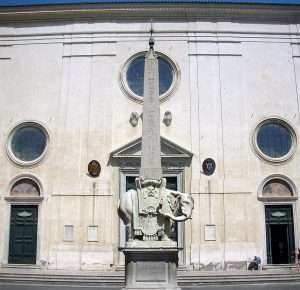

'Prince' link?
Something extra: "....This evening learn the meaning of the word 'wab', PURE. Wab means the widening of an individual nature freed from all....." [Page 203 'Her-Bak' / same book].
And/or: ''Perfection is not a boring, self righteous state in which you criticize everyone about you, but a widening of all your HORIZONS." [ Marian Green book. Page 42].
Astronomy equivalent and or a {work?} in its early {reflective?} phase - {the very first one?}: "Homer draws attention to the physical appearance of the Moon in the guise of Hera when on several occasions he associates it with human feelings and a popular , even child - like, image of its face. When all of Hera's schemes are going well in the closing lines of Book 1 she is said to have a 'smiling face', but then thwarted in Book 8 she shakes with rage. Confronted with Zeus anger in Book 15, she is forced to control her feelings, and signs of both happiness and bad mood are combined. We believe Homer was recording an unusual astronomical phenomenon when he has Zeus sternly remind Hera, 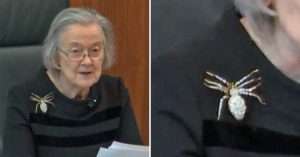 'Do you not remember how once upon a time i had you hanged? I fastened two anvils on to your feet, and bound your hands in a chain of gold which none might break, and you hung in mid air among the clouds'. These lines suggest a lunar phenomenon when four other 'moons' can be seen in the skies. Known as 'parselene' - 'mock moons' or 'moon dogs', these are small diffuse images that can be seen at twentytwo degrees on either side and north and south of the moon. They are caused by the refraction of light by ice crystals in the atmosphere, and, although it is possible to see several moons, it is most common to see only one or two at a time, like the anvils tied to Hera's feet. Hera is also associated with such events as conjunctions..." ['Homer Secret Iliad']. Try ''anvil'' to see something from a different perspective {refraction?}.
'Do you not remember how once upon a time i had you hanged? I fastened two anvils on to your feet, and bound your hands in a chain of gold which none might break, and you hung in mid air among the clouds'. These lines suggest a lunar phenomenon when four other 'moons' can be seen in the skies. Known as 'parselene' - 'mock moons' or 'moon dogs', these are small diffuse images that can be seen at twentytwo degrees on either side and north and south of the moon. They are caused by the refraction of light by ice crystals in the atmosphere, and, although it is possible to see several moons, it is most common to see only one or two at a time, like the anvils tied to Hera's feet. Hera is also associated with such events as conjunctions..." ['Homer Secret Iliad']. Try ''anvil'' to see something from a different perspective {refraction?}.
Follow the title of the book to 'see' that unknown {quantity OR quality?} become a known one. Throughout ALL cultures. From darkness {'moon/silver'} to light {'sun/gold'}.

Male/female anima/animus? as a means....?

A working example: ''As if to emphasize his commitment to the ancient capital, Memphis, Seti added to his own name the epithet ''beloved of Ptah' {i.e., blacksmith}. And together with Queen Tuya - whose parents are named on the monuments as the lieutenant of chariotry, Raia, and his wife, Ruia - he set about renewing Egypt's glory.... especially at Abydos.'' [Page 48 'My Heart My Mother: Death and Rebirth in Ancient Egypt' / Alison Roberts].
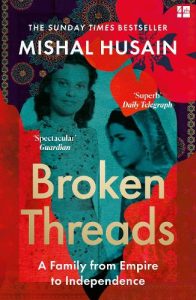 Both Arachne and Ariadne hanged themselves. Arachne’s legend is supposed to account for spiders’ habit of dangling on their own threads, like tiny execution victims. Ariadne’s suicide by hanging (when Theseus failed to marry her) is easily explained if she is another aspect of the spidergoddess.....Theseus is guided through the Labyrinth by the Spider thread; the thread of the Upanishads is called the ‘Inner Controller’; Hippolytus’s reins are tangled and he loses control; and Arachne appears to control the thread that weaves the picture-story of the Zodiac. But if Arachne is indeed the missing thirteenth sign, if she is the controller of the other twelve, why have we forgotten her?
Both Arachne and Ariadne hanged themselves. Arachne’s legend is supposed to account for spiders’ habit of dangling on their own threads, like tiny execution victims. Ariadne’s suicide by hanging (when Theseus failed to marry her) is easily explained if she is another aspect of the spidergoddess.....Theseus is guided through the Labyrinth by the Spider thread; the thread of the Upanishads is called the ‘Inner Controller’; Hippolytus’s reins are tangled and he loses control; and Arachne appears to control the thread that weaves the picture-story of the Zodiac. But if Arachne is indeed the missing thirteenth sign, if she is the controller of the other twelve, why have we forgotten her?
Thread of logic.
Give someone enough rope, and they will hang themselves is a proverb or idiomatic expression meaning that given the opportunity, people will incriminate themselves.
The Greek myths are over two thousand years old – and perhaps, in their earliest forms, much older – and yet many stories from Greek mythology, and phrases derived from those stories, are part of our everyday speech.
So we describe somebody’s weakness as their Achilles heel, or we talk about the dangers of opening up Pandora’s box. We describe a challenging undertaking as a Herculean task, and speak of somebody who enjoys great success as having the Midas touch.

Leaping spiders.
#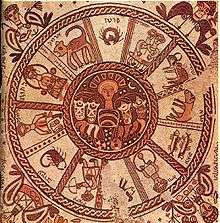 Ariadne (‘spinner’) and Arachne (‘spider’) are both Cretan - goddesses. Some scholars claim they are two names for the same spider-goddess. ‘Numerous seals with a spider emblem have been found at Cretan Miletus,’ says Graves, who believes that the spider cult is associated with the Cretan trade of spinning and weaving. ‘A public textile industry operated there at the beginning of the second millennium B.c.”* But the real meaning of the Spider may go far beyond questions of industry. The legend of Arachne the spider is likewise related to the Zodiac. Arachne was once a woman, a skilled weaver of tapestries. Athene, the powerful goddess of war, learning and the arts, grew jealous of her skill and challenged her to a ‘tapestry duel’. Each was to weave a beautiful and complex — picture, and the gods were to judge between them. When the prize was awarded to Arachne, Athene was so angry that she — changed her into a spider. In despair, Arachne hanged herself. If we accept Ovid’s version of this story, the pictures which Arachne wove were Zodiac signs:
Ariadne (‘spinner’) and Arachne (‘spider’) are both Cretan - goddesses. Some scholars claim they are two names for the same spider-goddess. ‘Numerous seals with a spider emblem have been found at Cretan Miletus,’ says Graves, who believes that the spider cult is associated with the Cretan trade of spinning and weaving. ‘A public textile industry operated there at the beginning of the second millennium B.c.”* But the real meaning of the Spider may go far beyond questions of industry. The legend of Arachne the spider is likewise related to the Zodiac. Arachne was once a woman, a skilled weaver of tapestries. Athene, the powerful goddess of war, learning and the arts, grew jealous of her skill and challenged her to a ‘tapestry duel’. Each was to weave a beautiful and complex — picture, and the gods were to judge between them. When the prize was awarded to Arachne, Athene was so angry that she — changed her into a spider. In despair, Arachne hanged herself. If we accept Ovid’s version of this story, the pictures which Arachne wove were Zodiac signs:
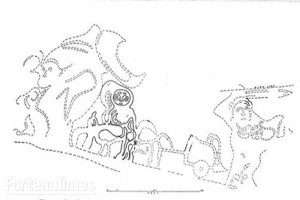 1. Jupiter as a bull seduces Europa. {Taurus} 2. Jupiter pursues Asterie.(?) 3. Jupiter seduces Leda, who bears him twins. (Gemini) ’ 4. Neptune is disguised as a river god. (Cancer)* 5. Phoebus is dressed in a lion’s skin. (Leo) 6. Erigone, the virgin. (Specifically said to be Virgo) 7. Danae weighs gold in her lap. (Libra) 8. Jupiter as a spotted snake. (Scorpio) 9. Birth of the centaur Chiron. (Sagittarius) 10. Neptune, the sea-god, disguised as a ram. (Capricorn) 11. Jupiter seduces the daughter of the river. (Aquarius) 12. Neptune disguised as a dolphin. (Pisces) 13. Apollo disguised as a herdsman. (Aries).
1. Jupiter as a bull seduces Europa. {Taurus} 2. Jupiter pursues Asterie.(?) 3. Jupiter seduces Leda, who bears him twins. (Gemini) ’ 4. Neptune is disguised as a river god. (Cancer)* 5. Phoebus is dressed in a lion’s skin. (Leo) 6. Erigone, the virgin. (Specifically said to be Virgo) 7. Danae weighs gold in her lap. (Libra) 8. Jupiter as a spotted snake. (Scorpio) 9. Birth of the centaur Chiron. (Sagittarius) 10. Neptune, the sea-god, disguised as a ram. (Capricorn) 11. Jupiter seduces the daughter of the river. (Aquarius) 12. Neptune disguised as a dolphin. (Pisces) 13. Apollo disguised as a herdsman. (Aries).
*
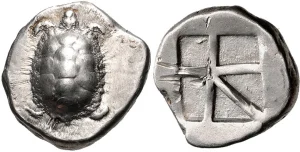
Which and why?
Cancer has not always been a Crab. The Origin of the Zodiac explains that the Egyptians called it Two Turtles, the early Greeks called — it the Tortoise, and the Babylonians called it by the name of another — hard-shelled water creature. Arachne’s picture shows Neptune making - love to the wife of Aloeus. She bears him twins, encloses them ina small ark {'box'}, and sets them afloat on the river. Whether or not we agree that the ark is a turtle-shell, the children of Aloeus’s wife may be the Greek — children of the Babylonian name for this sign, Allul.

'The star of ones BEING is rising'?
Since Arachne wove only twelve constellations plainly in her tapestry, perhaps reserving the thirteenth, ‘of the starry _sky’ for herself, it is right to ask whether she is in some sense the origin of the other twelve signs. In other words, is Silver Wheel a model of the great wheel of the Zodiac? Her constellation has exactly twelve stars; it is the only constellation in or near the ecliptic which has this number. Were these stars in some way taken to represent the Zodiac?
And/or: "Just so did frail Ariadne help outwit the powerful Minotaur and help Theseus escape certain death.....Ariadne's suicide by hanging {when Theseus failed to 'marry' her} is {easily?} explained if she is another aspect of the spider goddess." [Same book].
Question. Why frail?
Remedy?
Side note: Ophiuchus (/ˌɒfiˈjuːkəs/; Ancient Greek: Ὀφιοῦχος, lit. 'Serpent-bearer'; astrological symbol ⛎︎) has been proposed as a 13th sign of the sidereal and tropical zodiac. The idea appears to have originated in 1970 with Steven Schmidt's suggestion of a 14-sign zodiac, also including Cetus as a sign. A 13-sign zodiac has been promulgated by Walter Berg and by Mark Yazaki in 1995, a suggestion that achieved some popularity in Japan.
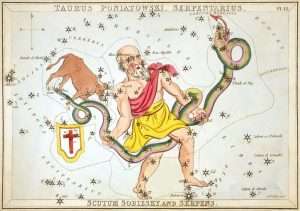
"Scorpio likewise has not always been a scorpion. In Egypt it wasa viper or cobra, according to most sources, Our own symbol for Scorpio, — 'M', is taken from the hieroglyph {opposite}."

Coils of Nature: ''M''?
The constellation is described in the astrological poem of Marcus Manilius as the one that winds in loops: "But, bending its supple neck, the serpent looks back and returns: and the other's hands slide over the loosened coils. The struggle will last forever, since they wage it on level terms with equal powers".[4] Later in his poem, he describes the astrological influence of Ophiuchus, when the constellation is in its rising phase, as one which offers affinity with snakes and protection from poisons, saying "he renders the forms of snakes innocuous to those born under him. They will receive snakes into the folds of their flowing robes, and will exchange kisses with these poisonous monsters and suffer no harm".[5] A later 4th century astrologer, known as Anonymous of 379, associated "the bright star of Ophiuchus", Ras Alhague (α Ophiuchi), with doctors, healers or physicians (ἰατρῶν), which may have been because of the association between poisons and medicines.[6]
Based on the 1930 IAU constellation boundaries, suggestions that there are "13 astrological signs" because "the Sun is in the sign of Ophiuchus" between November 30 and December 18 have been published since at least the 1970s.[7]
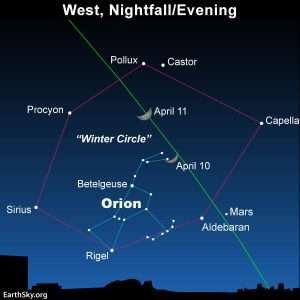 And/or: "The image of a hanged figure and fertility doesn’t seem to work quite right at first and so we consult Robert Graves who writes that dolls were hung from fruit trees to ensure good crops, a practice recounted in Crete, Mycenae, Rhodes and Arcadia 1. The sanctuary to Artemis the Hanged One was at Condyleia in Arcadia "
And/or: "The image of a hanged figure and fertility doesn’t seem to work quite right at first and so we consult Robert Graves who writes that dolls were hung from fruit trees to ensure good crops, a practice recounted in Crete, Mycenae, Rhodes and Arcadia 1. The sanctuary to Artemis the Hanged One was at Condyleia in Arcadia "
"The astronomical poems and their commentators discuss the various genealogies and changing aspects of Virgo-Astraea. The parentage of the 'Virgin' is obscure {as all things are}; some call her the daughters of Jove and Themis; others the daughter of Astraeus and Aurora; others call her Erigone, a daughter of Icarus, a pious virgin whose 'little' dog led her to her dead fathers body."
Procyon.
Other key words for Astraea: 'Silver Bower' / Month of August / "headless between Leo and Libra" / "her righteous balance hanging bee {be?}." "The lion giving to Astraea the flying year." / Syrian goddess / "Inventress of justice, foundress of the city." [Pages 31-33 'Astraea: Imperial theme in 16th Century' / F. A. Yates].
'Brand' to enlarge.

In North Germany Alkor, as there written, has been der Hinde, the Hind, or Farm Hand; in Lower Germany, Dumke; and in Holstein, Hans Bumken, Hans the Thumbkin, — the legend being that Hans, a wagoner, having given the Saviour a lift when weary, was offered the kingdom of heaven for a reward ; but as he said that he would rather drive from east to west through all eternity, his wish was granted, and here he sits on the highest of the horses of his heavenly team. A variant version placed Hans here for neglect in the service of his master Christ ; and the Hungarians call the star Oontzol, with a somewhat similar tale. Another Teutonic ston was that their giant Orwandil, our Orion, having frozen one of his big toes, the god Thor broke it off and threw it at the middle horse of the Wagon. where it still remains.
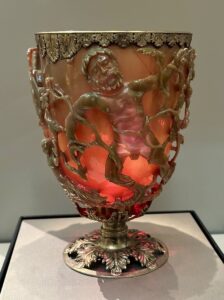
The Lycurgus Cup
Late Roman Empire, AD 300s
This cage-cup is incredibly rare. Its glass contains tiny amounts of gold and silver which cause it to turn from opaque green to translucent red when light is shone through. It may have been part of a wealthy Roman's banqueting set, making its imagery of Dionysus, Greek god of wine, highly appropriate. Its green and red qualities may even have been intended to evoke white and red wine. Alternatively, it may have been used as a lamp because the gilded silver rim and foot were probably added in the late 1700s.
And/or: Sirius appears as the she-dog Maira— the "glittering one"— an appropriate name for this star. The she-dog finds the corpse of Ikarios, or rather the place where his murderers had buried it. Eratosthenes' story, tragic through and through, finds its solution in the transformation of master, daughter, and dog into stars. The daughter's name was "Erigone" and she played an important part in the story, which took a tragic turn while Ikarios was bestowing the gift of wine. In an ox cart he was carrying full wineskins about through the mountainous regions of Attica, then inhabited by wild shepherds. The shepherds became drunk, thought they were poisoned (this is probably a late explanation; originally drunkenness would no doubt have sufficed), and murdered Ikarios. When they were sober again, they hid the corpse. In the late extracts they did this in various ways; in the original version they buried it. Accompanied by Maira, Erigone wandered about in search of her father. In form, the myth is a repetition of Isis' search for Osiris, but it is not likely that this motif was first introduced by the Alexandrian poet. The early designation of Erigone as "Aletis," "she who wanders about," argues against this hypothesis. The searching, wandering woman and the she-dog have gone together since time immemorial.....

Any 'hares'?
In the original myth, wine culture began with this finding of a vine that had grown up into a tree, and in another archaic myth the she-dog Sirius actually gave birth to the vine. According to the oldest myth of the Ikarians, they became acquainted with wine by killing a stranger who came to them unrecognized as the wine god. However, the murdered god, the prototype of the Dionysian sacrifice, only seemed to die. Erigone was his companion, the first Dionysian woman. The FIRST vine grew from his corpse and was at the same time a gift of the she-dog who helped to find it.....

Whats in the 'sack'? 'Carrying' a 'stick'?
The wanderings of Erigone ended— according to the Dionysian feast period of the Athenians— on Choes Day with the Aiora, the "feast of the swings." That this festival signified the end of her wanderings can be inferred from the myth of the Ikarians in which Erigone— in line with a melancholy interpretation of the act of swinging by the explainers of her myth— put an end to her life by hanging herself from the tree that had grown from the corpse of Ikarios. In Athens the girls let themselves be swung in chairs hanging from trees, and the boys were permitted to imitate them, since on Choes Day, the "day of the wine pitchers," they imitated as far as possible everything that was done publicly at the great feast of Dionysos. It was and remained, however, a festival of the virgins. {'Dionysos: Archetypal Image of Indestructible Life' / C. Kerenyi}.
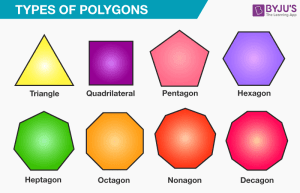 Side note: ''Auriga, the celestial charioteer, has neither chariot nor horse. Instead, he's drawn as a man holding the reins in his right hand, with a goat on his left shoulder — the star Capella — and two baby goats in his left arm. Look for him cruising high across the southern evening sky in January and February.''
Side note: ''Auriga, the celestial charioteer, has neither chariot nor horse. Instead, he's drawn as a man holding the reins in his right hand, with a goat on his left shoulder — the star Capella — and two baby goats in his left arm. Look for him cruising high across the southern evening sky in January and February.''
''Auriga is Latin for charioteer of the antique racing car and is a beautiful collection of stars shaped in the pentagon and located north of the celestial equator. The main star of this constellation is named Capella and it is the third brightest star in the North. Auriga is associated with many Greek mythology characters like hero Erichthonius of Athens, who happens to be the son of Hephaestus (was known for being raised by the goddess Athena). Erichthonius invented the quadriga (the four-horse chariot) which he used in the battle that made him king of Athens.
Since Ptolemy’s time, Auriga constellation remained the one that is officially recognized by IAU today...Auriga is the 21st {'twentyone'} biggest constellation in the night sky.''
''The first record of Auriga's stars was in Mesopotamia as a constellation called GAM, Capella is associated with the mythological she-goat Amalthea, who breast-fed the infant Zeus. It forms an asterism with the stars Epsilon Aurigae, Zeta Aurigae, and Eta Aurigae, the latter two of which are known as the Haedi (the Kids).[18] Though most often associated with Amalthea, Capella has sometimes been associated with Amalthea's owner, a nymph. The myth of the nymph says that the goat's hideous appearance, resembling a Gorgon, was partially responsible for the Titans' defeat, because Zeus skinned the goat and wore it as his aegis.[12] The asterism containing the goat and kids had been a separate constellation; however, Ptolemy merged the Charioteer and the Goats in the 2nd-century Almagest.[16] Before that, Capella was sometimes seen as its own constellation—by Pliny the Elder and Manilius—called Capra, Caper, or Hircus, all of which relate to its status as the "goat star".[19] Zeta Aurigae and Eta Aurigae were first called the "Kids" by Cleostratus, an ancient Greek astronomer.''
'Star of ones being is rising'?
''Auriga is the 21st biggest constellation in the night sky. It is located in the first quadrant of the northern hemisphere and can be seen at latitudes between +90° and -40° - east of Taurus, and bordered by the Giraffe in the north, by Gemini in the south, and by the Lynx in the west. The best time to spot is during evenings winter time.
Auriga belongs to the Perseus family of constellations, together with Andromeda, Cassiopeia, Cepheus, Lacerta, Pegasus, Perseus and Triangulum.''
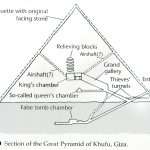
Jagged / straight lines puzzle? Any curves? Pie? ''Squaring the Circle''? Answer = 'triangle'?
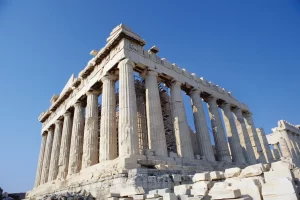
Parthenon. ALL CURVES. NO STRAIGHT LINES. Male/female as a means....
Continued: Someting closer to the 'mark' could be: ''Many of her songs show that Hydra Lerna has always been able to turn a lyrical phrase inside-out and use some evocative imagery ‘…hold me like a bed of nails… I think I found my holy grail…’ and explanation ‘….it is all in our flawed design…puzzle pieces with jagged lines…’. But the situation described here is sort of equal, with the slightly sinister pay-off ‘…when we’re hanging in the balance….I’ll have the photographs of you…’ It is a lyrically dense and thought-provoking song and the music reflects the ebb and flow of the words; based around two six note keyboard figures there is a deep bass counterpoint and subtle percussion. Hydra Lerna is a talented harp player.'' [Cambridgemusicreviews].
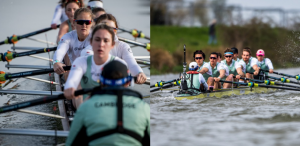
Coincidence?
Side note: "The Isis" (/ˈaɪsɪs/) is an alternative name for the River Thames, used from its source in the Cotswolds until it is joined by the Thame at Dorchester in Oxfordshire. It derives from the ancient name for the Thames, Tamesis, which in the Middle Ages was falsely assumed to be a combination of "Thame" and "Isis".[note 1][1] Notably, the Isis flows through the city of OXFORD.'' [Wiki].
 Side step: ''Dressing is an individual act but also a deeply social one. Clothing is not merely a demonstration of our relation to one another, it is a crystalization of them. When you watch a spider spin a web, it appears over time to be walking over AIR. How does it get from point to point? How does it travel the distance between two firm holds when there is nothing connecting them? It makes a bridge as it goes with the thread it produces! The thread itself is what provides a safe passage between two impossible points over an untraversable distance. An everyday ordinary miracle.'' { 'Worn: A History of Weaving' by Sofi Thanhauser / Radio 4. 28.1.22}.
Side step: ''Dressing is an individual act but also a deeply social one. Clothing is not merely a demonstration of our relation to one another, it is a crystalization of them. When you watch a spider spin a web, it appears over time to be walking over AIR. How does it get from point to point? How does it travel the distance between two firm holds when there is nothing connecting them? It makes a bridge as it goes with the thread it produces! The thread itself is what provides a safe passage between two impossible points over an untraversable distance. An everyday ordinary miracle.'' { 'Worn: A History of Weaving' by Sofi Thanhauser / Radio 4. 28.1.22}.

Hook or Crook?
The spider is not seen everywhere as a goddess or even as more than human {hint, hint} - In Africa the spider is male, a trickster hero, lovable, frail and human. He seems completely unlike Arachne, except in his habit of defying the gods, as she defied Athena...A Jamaican legend tells how the spider rescues himself and his children from the god of death by climbing nimbly to a roof beam. And when Arachne 'hanged' herself, the gods {'higher' self?} turned her into a spider and the rope into a cobweb, up which Arachne climbed to safety.'' [Page 76 same book].
Question. ''Athena'' born from the head of Zeus {hence 'wisdom'}. Therefore Arachne {female} a different aspect to 'wisdom'? In competition with - therefore shadow aspect? Theseus = anima or animus?
And/or: "Except 'seven' - none returned from Caer Sidi'. We know at least two who did return: Theseus and Daedalus..." [Page 106 'White Goddess' / R. Graves].

Elephant and Castle is an area of South London, England, in the London Borough of Southwark. The name also informally refers to much of Walworth and Newington, due to the proximity of the London Underground station of the same name. The name is derived from a local coaching inn.
''Caer Sidi in the Spoils of Annwm is given a new synonym {new 'name'?}, in each of the seven stanzas. It appears as Caer Rigor {'the royal castle'} with a pun maybe on the Latin rigor mortis; Caer Colur {'the gloomy castle'}; Caer Pedryvan {'four cornered castle'}, four times revolving; Caer Veditvid {'the castle of the perfect ones'}; Caer Ochren {'the castle of the shelving side' - i.e., entered from the side of a slope - i.e., in profile?}; Caer Vandwy {'the castle on high'}. I do not know who the canonical 'seven' were, but among those eligible....." [Page 106 same book].
For this reader the names are unimportant. ''Caer Sidi'' in relation to 'frolic' or 'unrestrained' {by way of ''wontonness'' and ''dalliance'' enlarged elsewhere}. In other words a more solid foundation is required before a forward 'motion'. As a means....
Towards incarnate/reincarnate represented as 'east/west'. Try ''jones'' / ''smith'' to get that ''forward motion'' towards a MINDSET.
What's the difference between castle/palace/temple?

A corner of the Temple Mount.
A working example: "To-night we will speak of Self-Remembering. It is necessary to remember oneself every day, at least once. Many different descriptions have been given in the literature of the past. I will quote one given some three centuries ago. A disciple asks his master how he can come “to the Supersensual life and hear God speak.” The master replies: “When thou canst throw thyself into THAT, where no creature dwelleth, though it be but for a moment, then thou hearest what God speaketh.” The disciple asks him if the place where no creature, or nothing created dwells is near or far away. The master says: “It is in thee”, and he adds that it is to be reached by ceasing, even for a moment, from all one’s thinking and willing—“when thou standest still from self-thinking and self-willing and canst stop the wheel of the imagination and the senses.” In another place he says that this act must be done once a day at least and only fora Short time. It certainly must not be attempted too often. He is really describing what in this Work is called Self Remembering. It is very often difficult to hear the Work speaking to us. As a rule we are immersed in life and self interests of various kinds and cannot hear the Work. In the example just given the disciple asks how he can come “to the supersensual state and hear God speak”. This means to a state that is above the life of the senses. Have you ever really thought what is the life of the senses? It is all your daily worries, all your cares, your daily contacts, all you see and hear, etc. through the senses." {'Psychological Commentaries on Gurdjieff and Ouspensky' / M. Nicoll}.
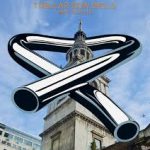
Ring {knock?} three times?
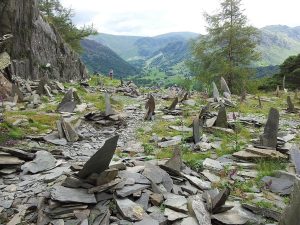
Castle Crag Quarry, nicknamed The Graveyard
Apply the above to define the following: "There is scarcely a stone of the original basilica which does not play its part in the profound symbolism of the zodiac. As we shall see eventually, this symbolism so unites the interior and exterior of the church that they together participate in three rhythms: first, in the daily apparent movement of the sun; second, in an astonishing annual phenomenon of the sun, when the solar body stands in a particular relationship to Florence, and third in a distinctly powerful configuration of planets which might be regarded as signifying a new age, such as that which was inaugurated in Florence after the building of San Miniato..." ['The Secret Zodiac']. Try ''Saturn''.
Analogy?: "This collection i.e.,The Ramesside Books {dating from the beginning of the New Kingdom in Dyn. 19} is distinct among the funerary literature of the period and of Egyptian history overall. Combining philosophical, 'magical', and deeply religious themes, the works reflect Stella, Solar-Horian, and Lunar-Osirian objectives for the 'deceased', often within the same tomb. The cosmology of the Ramesside books appears to be derived from the Heliopolitan Stella theme...from the Old Kingdom." [Pages 280 and xxii 'The Sacred Tradition in Ancient Egypt'].
Try the title to get a flavour {rhythm?} of the overall composition.
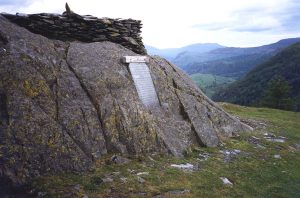
Castle Crag summit with circular stone cairn (no longer present, as of 2024) and war memorial......Castle Crag is a hill in the North Western Fells of the English Lake District. It is the smallest hill included in Alfred Wainwright's influential Pictorial Guide to the Lakeland Fells, the only Wainwright below 1,000 feet (300 m)......Wainwright accorded Castle Crag the status of a separate fell because it "is so magnificently independent, so ruggedly individual, so aggressively unashamed of its lack of inches, that less than justice would be done by relegating it to a paragraph in the High Spy chapter."...The fell has an impressive appearance, a rugged height apparently blocking the valley of Borrowdale, which is squeezed between Castle Crag and Grange Fell, its neighbour on the other side. This narrow gorge known as the 'Jaws of Borrowdale', and is prominent in views from Keswick and Derwentwater.
High Spy, the parent fell, forms part of the north-south ridge between Borrowdale and the Newlands Valley. The rough spur of Low Scawdel at 1,709 feet (521 m) runs out due east from the summit, breaking steeply over Goat Crag and then falling to Broadslack Gill. This small tributary of the River Derwent separates High Spy from Castle Crag....The summit area is believed to have been an ancient hill fort,[1] although the western section has been sliced away by quarrying. It can only be gained by means of a sloping crack to the south..
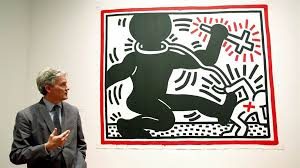 A working example: "There is only one tradition, and that is the evolution into enlightenment which creates people of compassion, maturity, wisdom, and self-transcendence. Every generation must discover the paths that lead to authentic transformation. It isn't about creating new tradition, but about being genuine in one's efforts to reach ones highest potential." ['Wisdom of the 4th Way']. Continued elsewhere - compare it - 'see' it - in relation to all other ''paths''.
A working example: "There is only one tradition, and that is the evolution into enlightenment which creates people of compassion, maturity, wisdom, and self-transcendence. Every generation must discover the paths that lead to authentic transformation. It isn't about creating new tradition, but about being genuine in one's efforts to reach ones highest potential." ['Wisdom of the 4th Way']. Continued elsewhere - compare it - 'see' it - in relation to all other ''paths''.
Hence the final paragraph of the 'Work' : "The Work is not for the elite {i.e.,the word esoteric means inner not secret}, but for anyone who has a sincere desire to reach a connection with a deeper part of themselves that opens on to encounter with that which is greater than themselves. Emotional healing and purification, self transcendence, conscious effort, awakening from sleep are the birthright of all who ''hunger and thirst'' for Truth and right action in the world." [Same book].
"The 'chaste' mind [objectivity link, i.e.,single mindedness] seeks the truth and not [just] the joy of revelation of the truth, [the author {i.e.,Tomberg} defines that 'negative' as ''intoxication'' represented with the symbol or sign of a 'mirage'] - just as chaste love seeks union with 'the loved one' and not the carnal pleasure of union." [parenthesis, this readers].
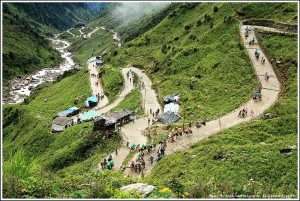 "The stream of knowledge," Sir James Jeans writes in the 'Mysteries Universe' ''is heading toward a non-mechanical reality; the universe begins to look more like a great thought than like a great machine." Twentieth century science is thus sounding like a page from the hoary Vedas. From science, then, if it must be so, let man learn the philosophic truth that there is no material universe; its warp and woof is 'maya' illusion. Under analysis all its mirages of reality dissolve." [Extract from the book 'Autobiography of a Yogi' ].
"The stream of knowledge," Sir James Jeans writes in the 'Mysteries Universe' ''is heading toward a non-mechanical reality; the universe begins to look more like a great thought than like a great machine." Twentieth century science is thus sounding like a page from the hoary Vedas. From science, then, if it must be so, let man learn the philosophic truth that there is no material universe; its warp and woof is 'maya' illusion. Under analysis all its mirages of reality dissolve." [Extract from the book 'Autobiography of a Yogi' ].
Question. Nothing more than an overplay [ pretensions?] of ''moralistic'' values? Affectation?

Joy?
"The joy of good conscience is the accord between moral rhythms of the lower self and the higher self {'pendulum'?}. The beatitude {Matthew 5, 8} promising those who have a pure heart that they will ''see god'' signifies the accordance of their basic rhythm with the divine rhythm." [i.e.,the understanding of A-C in relation to 'divine bit' and its relevance and/or use - to each individual, i.e.,what it means to them; what they apply it to, i.e.,as an example - a self interest or shared]. All four quotes [including the one below] taken from within the book by Tomberg]. Recall what ''see'' implies.
''In cookery, bread that does not rise properly is said to be sad.'' ['The Chase'].
Bread and Wine?

Silver and Gold?
Side note: Practical/working example: ''Hello everyone. Hope you are all well. You may be asking yourself while you are watching this: 'Why is Callie so happy and always smiling? How can she be so in the cold freezing Artic. Shouldn't she be cold and miserable? Well i have a secret - its K. G. Sparkle'. I have a sister who is amazing and hilarious. Those are magic words....whenever she hears them she laughs hysterically for a good twenty minutes. So if i think of K.G. Sparkle i hear her laugh - and that makes me so happy. So if i ever get down i just sprinkle a little K.G. Sparkle on it and it becomes all good." {Callie/'Alone'/2020}.
 Continued: That final sentence [if understood correctly] defines the following..."The sources of joy are deeper than those of suffering. They still spring from the river which ''flowed out of Eden to water the garden. 'Joy' is more ancient than 'suffering', and the world of joy preceded the world of suffering." [i.e.,'source' - and therefore what it implies - relative to ''the fall'' - and what it implies]. Top down in relation to bottom up. The beginnings of which is represented within a u-turn. Along the way 'back' - a 'connection' is made. That union of the two - of two opposing 'paths' - but with one eternal aim [''crossover'' point and/or 'dark night of the soul' ]. Which finally becomes [in its physical form?] what is termed as the philosophers stone. Question. Fact or fiction; a possibility or not? At least the understanding of a subject is got.
Continued: That final sentence [if understood correctly] defines the following..."The sources of joy are deeper than those of suffering. They still spring from the river which ''flowed out of Eden to water the garden. 'Joy' is more ancient than 'suffering', and the world of joy preceded the world of suffering." [i.e.,'source' - and therefore what it implies - relative to ''the fall'' - and what it implies]. Top down in relation to bottom up. The beginnings of which is represented within a u-turn. Along the way 'back' - a 'connection' is made. That union of the two - of two opposing 'paths' - but with one eternal aim [''crossover'' point and/or 'dark night of the soul' ]. Which finally becomes [in its physical form?] what is termed as the philosophers stone. Question. Fact or fiction; a possibility or not? At least the understanding of a subject is got.
Understanding the above; defines the following quote within the book by Tomberg..." Consequently the use of the word ''magic'' is quite justified, if at least one understands by magic the power of the invisible and 'spiritual' over the visible and material." i.e., Bottom - up; in relation to top - down. Question. Which is which?

Pure number?
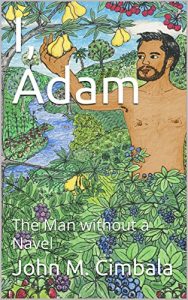 From a diffeent perspective {something extra learned}: "Contrary to what might be considered logical, the mineral kingdom is not situated at the bottom, of the lowest register of the temple walls that explains the phases of becoming. As the first corporeal form, the metallic or mineral kingdom is the closest to the origin, closer to the spirit that animates everything. Because it is created and not procreated. It is located at the uppermost register of the tableaux. The personages at this highest level symbolize non-procreated principles and are depicted without navels. The lowest register portrays Royal Man, symbol of the ultimate aim of creation. Between the two {'void'?} is located the register of pure Number, corresponding to the plant kingdom, and next is the register of combinations or geometry of Numbers, the animal kingdom. The temple is fashioned by man in the image of the heavens, in the image of his world...The incarnation of the universe in man is the fundamental theme of all religions...." [Page 27 'The Egyptian Miracle: An Introduction to the Wisdom of the Temple' / R. A. Schwaller de Lubicz].
From a diffeent perspective {something extra learned}: "Contrary to what might be considered logical, the mineral kingdom is not situated at the bottom, of the lowest register of the temple walls that explains the phases of becoming. As the first corporeal form, the metallic or mineral kingdom is the closest to the origin, closer to the spirit that animates everything. Because it is created and not procreated. It is located at the uppermost register of the tableaux. The personages at this highest level symbolize non-procreated principles and are depicted without navels. The lowest register portrays Royal Man, symbol of the ultimate aim of creation. Between the two {'void'?} is located the register of pure Number, corresponding to the plant kingdom, and next is the register of combinations or geometry of Numbers, the animal kingdom. The temple is fashioned by man in the image of the heavens, in the image of his world...The incarnation of the universe in man is the fundamental theme of all religions...." [Page 27 'The Egyptian Miracle: An Introduction to the Wisdom of the Temple' / R. A. Schwaller de Lubicz].
Try ''incarnation/reincarnation'' - as a means....?
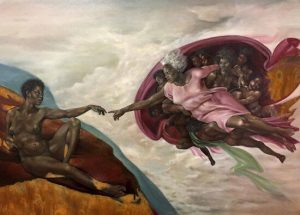 "Error runs down an inclined plane, while truth has to laboriously climb its way up hill". Benefits of.
"Error runs down an inclined plane, while truth has to laboriously climb its way up hill". Benefits of.
"According to the Guinness Book of Records, the steepest street in the world is located on the South Island of New Zealand {Dunedin} and is Baldwin Street, with a slope of nineteen degrees. Can you imagine what it must be like to live at the top?"
A {practical} example: ''The road ahead will be long - the climb steep.'' [Election victory speech/ Barack Obama].
It also defines concave or convex relative to the earth [and/or 'observer' ] - when ALL is taken into account. Try ''polarities''.
"...the opening of the knowledge of the masculine and feminine potencies necessary unto the manifestation of all things." Potency in relation to polarity?
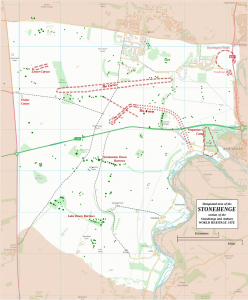
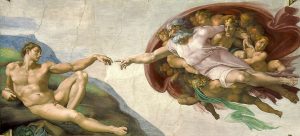 Convex / concave in relation to the causeway between Stonehenge and the river Avon. Many speculate as to why it is in the form of a u-shape rather than as ''straight as the crow fly's''. Concave in relation to the crescent of the moon {i.e.,waxing} and/or ''bottom up''?
Convex / concave in relation to the causeway between Stonehenge and the river Avon. Many speculate as to why it is in the form of a u-shape rather than as ''straight as the crow fly's''. Concave in relation to the crescent of the moon {i.e.,waxing} and/or ''bottom up''?
From the river Avon convex? From Stonehenge to the river concave? Representational of? i.e.,outer / inner and /or external / internal?
''Avon in Welsh means ''river''....''
Question. Chosen name for the river that those ''blue stones'' were taken to?
Try ''fir'' to enlarge.
"The Agnisuryans respond to the sound. The waters ebb and flow. Let the 'magician' guard himself from drowning, at the point where land and water meet. The midway spot, which is neither dry nor wet, must provide the standing place whereon his feet are set. When water, land and air meet there is the place for 'magic' to be wrought {'fire'?}."
"When i began drawing the mandalas - i saw that everything; all the paths i had been following; all the steps i had taken - were leading back to a single point - namely to the mid-point. It became increasingly plain to me that the mandala is the center. It is the exponent of all paths. It is the path to the center, to individuation...I knew that in finding the mandala as an expression of the self, i had attained what was for me, the ultimate. Perhaps someone else knows more, but not me." [C. G. Jung].
''The ego {personal identity} is at the center of consciousness''.
Refresher: "The word 'conscience' {''con-science''} contains the idea of balance, for it implies "simultaneous knowing," i.e.,knowledge of the facts of the two scales suspended at the extremities of the beam of the balance. Conscience is neither a product nor a function of character. It is above it. And it is here - and only here - that there begins and there is found the domain of freedom." [Letter viii 'Justice' from the book 'Meditations on the Tarot'].
Try ''yoke''.
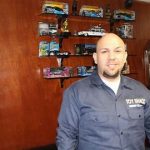
A magician?
 Analogy?: "The universe and everything within it constitutes 'god'. The universe is a gigantic human organism and man is a tiny image of it, a toy replica of god. Because he is a miniature of the universe, by a process of spiritual expansion a man can mystically extend his own being to cover the entire world and subject it to his will. It is because all things are aspects of the one thing that all things are grist to the magician's mill...He has reached the center, where man becomes god. The achievement of this is the Great Work..." ['The Fourth Dimension'].
Analogy?: "The universe and everything within it constitutes 'god'. The universe is a gigantic human organism and man is a tiny image of it, a toy replica of god. Because he is a miniature of the universe, by a process of spiritual expansion a man can mystically extend his own being to cover the entire world and subject it to his will. It is because all things are aspects of the one thing that all things are grist to the magician's mill...He has reached the center, where man becomes god. The achievement of this is the Great Work..." ['The Fourth Dimension'].
Center in relation to that universal framework and 'bit'.
Cleopatra will be found with Mark Anthony, [Pagan equivalent, i.e., indicative of helping someone to understand something]...outside the boundaries of Alexander. Indicative of that return journey to ‘C’. Outside the boundaries of A/B...but within striking distance, [ ’Sting in the tail’ link, i.e.,the tail end of something together with the beginning of something else, i.e., in relation to a 'development' of something. The micro within the macro]. Hence the reason why she will not be found within those boundaries whether sunken or otherwise.
Refresher: "Achilles has a trio of fine horse...Two of the horses, Xanthus and Balius are 'immortal' and mark stars in the Milky Way. Pedasus is 'mortal' and, although said to be every bit as as good as the immortal pair, his star is just outside the Milky Way. The configuration of these makes the familiar triangle of one of Homer's chariots." [Same book].
And/or: "Pollux is orange and red in colour. Castor is bluish {i.e., very hot}. Something of a mystery is connected to these two stars. Castor is a young star, Pollux an old one. Some 2000 years ago some Arabic and Greek astronomers agreed that both stars were of the same brightness but in the present day they are not, so the speculation is that something has changed in the brightness of the Pollux star itself." ['Night Sky in February: 2024' / Mirthy].
"Castor[a] and Pollux[b] (or Polydeuces)[c] are twin half-brothers in Greek and Roman mythology, known together as the Dioscuri or Dioskouroi.[d]

REFRESHER: ''The Swan is white without spot.'' Question Any swans in Egypt? What would they use instead?

''The Birth of the New Man.'' 'Egg/Incarnation' to enlarge
Their mother was Leda, but they had different fathers; Castor was the mortal son of Tyndareus, the king of Sparta, while Pollux was the divine son of Zeus, who raped Leda in the guise of a swan. The pair are thus an example of heteropaternal superfecundation. Though accounts of their birth are varied, they are sometimes said to have been born from an egg, along with their twin sisters Helen of Troy and Clytemnestra.
In Latin the twins are also known as the Gemini[e] (literally "twins") or Castores,[f] as well as the Tyndaridae[g] or Tyndarids.[h] Pollux asked Zeus to let him share his own immortality with his twin to keep them together, and they were transformed into the constellation Gemini. The pair were regarded as the patrons of sailors, to whom they appeared as St. Elmo's fire. They were also associated with horsemanship, in keeping with their origin as the Indo-European horse twins."
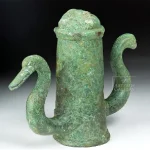
A Roman swan figurine used as a chariot rein guide for two horses.
Genghis Khan. Representative of that subject that some say is the origin of all the mystery clubs. Its most ancient. Shamanism.
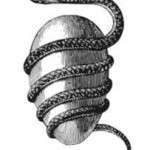
Inner/outer. A beginning or end?
That one word that is never used; throughout; in the book 'The Sirius Mystery' but implied [knowingly or otherwise] by the words..."male initiates" in relation to the Dogon tribe, [chapter two]. The star system 'Sirius' being ''The 'source' of all their 'information'', [authors opinion]. Or the quote used by the same tribe 'the shaper of the world' and that link to "shape-shifters" of which 'shamanism' is renowned. That same link to the 'female' equivalent, i.e.,anima,['unknown']...being the Greek 'goddess' Circe, who 'changed' her 'enemies',[negative aspects] into 'animals', i.e.,'lower' from the 'higher' i.e.,another word associated with the same, being the word 'falcon', as discovered in the same book, by the same author, [chapter five].
If the author had included within his 'hypothesis' alternative 'credible information' such as that which would be found within such publications as 'The Aquatic Ape Hypothesis' by E. Morgan and/or 'The Hidden Messages in Water' by Masaru Emoto, then that 'personal' hypothesis may have stood 'the test of time'.
 Side note: On his 'return' journey home Odysseus lands on an island {accidently or would that be synchronistically?} inhabited by Circe. The only island named with 'vowels'. Is kept 'prisoner' for a ''year and a day'' - his men turned into pigs {therefore ''lower'' and 'otherworld' link; in the 'unknown' sense of the word, i.e., nothing LEARNED from it. Nothing learned or wisdom gained from his experiences}. Experiences of ''Cauldron'' in relation to ''head and shoulders'' and/or ''silver studded chair'' {Seat of first Occasion?}. ['Gods and Monsters'. BBC4].
Side note: On his 'return' journey home Odysseus lands on an island {accidently or would that be synchronistically?} inhabited by Circe. The only island named with 'vowels'. Is kept 'prisoner' for a ''year and a day'' - his men turned into pigs {therefore ''lower'' and 'otherworld' link; in the 'unknown' sense of the word, i.e., nothing LEARNED from it. Nothing learned or wisdom gained from his experiences}. Experiences of ''Cauldron'' in relation to ''head and shoulders'' and/or ''silver studded chair'' {Seat of first Occasion?}. ['Gods and Monsters'. BBC4].
Try ''Odysseus'' to unravel ''myth'' in an attempt to define that universal mind set.
ODDS/EVENS.

Three and four? Wide or long? 'fifteen' teeth?
"A maximum break (also known as a maximum, a 147, or orally, a one-four-seven) is the highest possible break in snooker in normal circumstances[a] and is a special type of total clearance. A player compiles a maximum break by potting all 15 reds with fifteen blacks for 120 points, followed by all six colours for a further 27 points. Compiling a maximum break is regarded as a highly significant achievement in the game of snooker, and may be compared to a nine-dart finish in darts or a 300 game in ten-pin bowling. Joe Davis made the first officially recognised maximum break in a 1955 exhibition match in London."
Continued: The final link however, as to the most likely possible 'source' of their 'information', when 'weighing' up all the available evidence [circumstantial or otherwise, including the meaning of such obvious, in your face; evidence, such as the meaning of 'Circe']... will be found; at least for this reader; within Mr Naydler's book 'Shamanic Wisdom of the Pyramid Texts'. Or further information on the Dogon tribe in order to evaluate correctly can be found on page twelve onwards within the book 'The Ancient Secret of the Flower of Life', [Vol. one]. Using his understanding of 'fish' symbolism to entice the reader to a deeper understanding...especially that 'inner' [symbolic] meaning of the 'dolphin', of which he constantly uses throughout; in one form or another; in the book. In the same vein as Plato and Gurdjieff, but now in 'story telling' form, i.e.,"because it is one of the best methods i know to give and receive information", [chapter 10, same book, vol 2].

''Prince of Peace"?

"The Christ did not try to answer the question of What is Peace? How can we attain peace? He just said.... 'Who is Peace?" {Kathleen Nichols: 'Advent Pilgrimage of Peace' / Magdala / Israel}.
The concepts of 'iron' and 'blacksmiths' very important. As indicated in chapter eight of 'Hamlets mill'. The ‘forging’ of something. The blacksmith being the older brother of the shaman. Think about it in relation to the 'younger'. Ptah / Imhotep being the Egyptian equivalent..."responsible for the final stages of the 'divine' creative outpouring of form into the physical world" {'son of' link?}....."who channelled the spiritual into material embodiment", Hence the link to his ''cap''. Representational of same. Found elsewhere. [chapter seven. 'The future of the Ancient World'/ J. Naydler]. Think about it, in relation to the Hebrew word 'Shekhinah', relative to the Egyptian 'Ka'.
"...Then, in the Memphite myth, when the divine blacksmith Ptah {the Greek Hephaistos} actualized the 'creation' of the world by means of the Desire of his heart and the Word of his speech.'' [Extract from the book by L. Lamy]. Try ''logos''. Egyptian equivalent.
To vulcanize something by ‘fire’.[key. Mentioned elsewhere]. That same ‘substance’ that the trickster character ‘stole’. Think about it...especially in relation to one of its other 'forms'...the Hare and/or fox, i.e., in relation to the many different ways,[forms] of understanding something...in 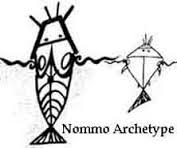 getting an understanding across....in an attempt to define something, for an understanding to take place, i.e., 'to be' made aware.
getting an understanding across....in an attempt to define something, for an understanding to take place, i.e., 'to be' made aware.
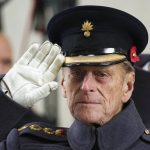
How unlucky can one get. Just missed getting the 'Queens telegram'.
"Serious mysteries may be describable only in terms of paradox, or in what passes for jest."
"If god ever calls me to a holy war - i want Joe Frazier beside me." Muhammad Ali.
A {working?} example: "Gurdjieff's silence regarding his sources gives birth to a suspicion that he is silent for a reason, because he follows a purely personal goal. This is the very opposite to the accomplishment of a mission. Why would one who fulfils a mission hide his sources? It is perhaps here that is found the meaning of the phrase ''Maybe i stole it...". It could be interpreted as the admission that he was not asked to diffuse this teaching, neither in the East nor in the West. It was a personal initiative on his part, to satisfy a personal interest." ['Wisdom of the 4th Way']. Continued elsewhere. Try ''method'' to see 'it' from different perspectives.
'Mans Search for Meaning' / Viktor Frankl.
''Trickster'' character?

"When it comes to snake movement using the right word to describe it can be quite confusing. There seems to be an etymological divide between the word crawl and slither.....It’s true that we mostly use slither to describe a snake’s movement and it almost feels synonymous to snakes. Even in Harry Potter, we have the house of Slytherin, not Crawlerin." 'Kundalini'? "Bridge" to enlarge.
Refresher {Part 2}: "The fourth way is sometimes is called the 'way of the sly man'. The 'sly man' knows some secret which the fakir, monk and yogi do not know. How the 'sly man' learned this secret is not known. Maybe he found it in some old books, perhaps he inherited it, perhaps he bought it, or stole it from someone. It makes no difference. The 'sly man' knows the secret and with its help outstrips the fakir, the monk and yogi." ['In Search of the Miraculous'].
The Dogon tribe do the same in relation to their own stories that contain that very same framework...by way of the 'Pale Fox', i.e.,"The fourth Nommo [Nommo being the "collective name for the 'great culture hero' and founder of civilisation". Chapter two, i.e.,trickster character. See P. Radin book for verification]... is the 'naughty' disrupter named Ogo or Nommo Anagonno. As he was about to be finished [being created] he rebelled against his creator and introduced disorder into the universe. Eventually he will become the 'Pale fox'. Which is the image of his fall". [Chapter nine].
The 'leaping' fox as seen on the pillar{s?} at Gobekli-tepe? [Chapter two 'Gobekli Tepe' by A. Collins].
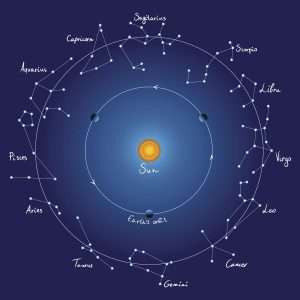
Mans best friend = the Dog Star?
Something extra:{and/or refresher}: "What is remarkable about all this is the way that the 'mill' {which continues to serve as an allegory for cosmic processes} stubbornly keeps on resurfacing, all over the world, even where the context has been jumbled or lost....Among the Cherokees, whose name for the Milky Way {our own galaxy} is 'Where the Dog Ran'. In ancient times, according to Cherokee tradition, 'the people in the South had a corn mill', from which meal was stolen {trickster type?} again and again. In due course the owners discovered the thief, a dog, who 'ran off howling to his home in the North' with the meal dropping from his mouth as he ran, and leaving behind a white trail where now we see the Milky Way, which the Cherokee call to this day - ''Where the Dog Ran''....In Central America, one of the many myths concerning Quetzalcoatl depicts him playing a key role in the regeneration of mankind after the all destroying flood that ended the Fourth Sun. Together with his dog headed companion Xolotl, he descends into the underworld to retrieve the skeletons of those 'killed' ….the bones are brought back....There like corn, they are milled into a fine meal on a grindstone....blood is added by the gods thus creating the flesh of the current age of man..... Dogs are numerous throughout {Odysseus is recognised by his 'faithful' dog on his return to Ithaca} - as are foxes which are members of the dog family i.e.,Samson and 300 foxes.....Santilla and von Dechend are confident that all this 'doggishness' is deliberate: another piece of the ancient code, as yet unbroken, tapping out its message from place to place...." [Page 253/4 'Fingerprints of the Gods' / G. Hancock].
Dogs are numerous throughout {Odysseus is recognised by his 'faithful' dog on his return to Ithaca} - as are foxes which are members of the dog family i.e.,Samson and 300 foxes.....Santilla and von Dechend are confident that all this 'doggishness' is deliberate: another piece of the ancient code, as yet unbroken, tapping out its message from place to place...." [Page 253/4 'Fingerprints of the Gods' / G. Hancock].
Think about it, in relation to the primary aim/purpose of the 'trickster character'. Any trickster character, of which Hermes and Thoth and therefore by the same implication 'Solomon' are identified with. The result of which, becoming those inspirations/aspirations that could lead to a possible understanding...from a 'fallen' state, [benefit of].
'Hermes The Thief' {the evolution of a myth} by Norman Oliver Brown'.

Sutton Hoo purse clasp: Wolfs / eagles and ducks.
"Consciousness is that which one carries within oneself, which rules from within to without until it has totally enlightened us, and it never leaves us stranded, regardless of the neglect into which one might have allowed it to fall." ['Journey into the Light'].
Example of same, as shown throughout by Mr R.Temple of the 'Sirius Mystery' fame. Using his knowledge of the Dogon story, to entice the reader to understand that deeper/inner meaning, within the overall subject. This one. His main interest being the geodetic aspect. Latitude and longitude within all landscapes. Showing all those connections between north and south. East and West. In the same 'vein', and with the same intent as Gurdjieff and Plato do... With the reader in mind. Even though he is off the mark; if only for this reader; with his final 'hypothesis'. [Also verified by the author of the 'Cygnus Mystery', page 284].
Latitude/longitude = 'lozenge' ?
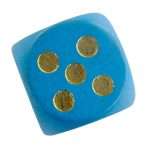
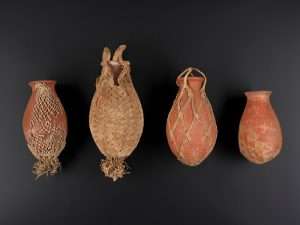
Found with the Qurna Queen and child: ''under a rocky outcrop {'overhang'?} on the north side of the valley at Thebes.''
''A lozenge (/ˈlɒzɪndʒ/[1] LOZ-inj; symbol: ◊), often referred to as a diamond, is a form of rhombus. The definition of lozenge is not strictly fixed, and the word is sometimes used simply as a synonym (from Old French losenge) for rhombus. Most often, though, lozenge refers to a thin rhombus—a rhombus with two acute and two obtuse angles, especially one with acute angles of 45°.[2] The lozenge shape is often used in parquetry (with acute angles that are 360°/n with n being an integer higher than 4, because they can be used to form a set of tiles of the same shape and size, reusable to cover the plane in various geometric patterns as the result of a tiling process called tessellation in mathematics) and as decoration on ceramics, silverware and textiles. It also features in heraldry and playing cards.''
The lozenge motif dates from the Neolithic and Paleolithic period in Eastern Europe and represents a sown field and female fertility.[3] The ancient lozenge pattern often shows up in Diamond vault architecture, in traditional dress patterns of Slavic peoples, and in traditional Ukrainian embroidery. The lozenge pattern also appears extensively in Celtic art, art from the Ottoman Empire, and ancient Phrygian art.
''Running the Fields''?
 A baseball field, also called a ball field or baseball diamond, is the field upon which the game of baseball is played. The term can also be used as a metonym for a baseball park. The term sandlot is sometimes used, although this usually refers to less organized venues for activities like sandlot ball.
A baseball field, also called a ball field or baseball diamond, is the field upon which the game of baseball is played. The term can also be used as a metonym for a baseball park. The term sandlot is sometimes used, although this usually refers to less organized venues for activities like sandlot ball.
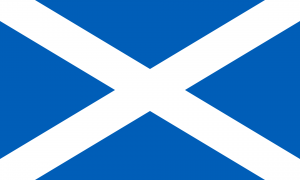
The quincunx was originally a coin issued by the Roman Republic c. 211–200 BC, whose value was five twelfths (quinque and uncia) of an as, the Roman standard bronze coin. On the Roman quincunx coins, the value was sometimes indicated by a pattern of five dots or pellets. However, these dots were not always arranged in a quincunx pattern.
 Side note: In 1983 UNESCO declared a unique jewel in the history of the West to be a "World Heritage monument": the Templar Castle and Convent of the Knights of Christ of Tomar. Built upon a site of Roman cult, this vast monumental complex is the testimony of seven centuries of the History of Portugal and of great moments in the History of the Western civilisation.
Side note: In 1983 UNESCO declared a unique jewel in the history of the West to be a "World Heritage monument": the Templar Castle and Convent of the Knights of Christ of Tomar. Built upon a site of Roman cult, this vast monumental complex is the testimony of seven centuries of the History of Portugal and of great moments in the History of the Western civilisation.
Afonso Henriques, the first king of Portugal, donated a vast region between the Mondego and Tejo rivers to the Knights of the Temple of Jerusalem. Legend has it that in 1160, the knights who arrived in the region chose a hill to build a castle and gave it the name Tomar....
The Church of Santa Maria do Olival (English: Saint Mary of the Olive Grove) is a Roman Catholic church in the city of Tomar, in Portugal. The Church has been characterized as National Monument since 1910.[1]
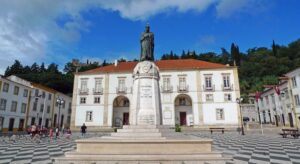
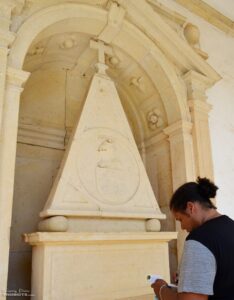
"The Washing Cloister or the Claustro da Lavagem is a two-storey gothic cloister built around 1433 under Henry the Navigator (1394–1460). The name is very practical since it’s where the monks would wash their clothes." Poles or scrolls? Petrified cedar?
The church was built in the second half of the 12th century by the provincial master of the Order of the Knights Templar in Portugal, Gualdim Pais. It was used as a burial place for the Knights Templar of Tomar and, later, by the Knights of the Order of Christ, which succeeded the Templars in the 14th century. Gualdim Pais is buried in the church, and his original tomb slab, dated from 1195 and bearing a gothic inscription, is still preserved inside.
It’s not often to get to say your city was founded by the Knights Templar in 1118, but Tomar is that exception. A beautiful town with a rich and mysterious history makes it one of my favorite places in Portugal. The Convent of Christ in Tomar is a combination of a castle and a convent. It’s a Unesco World Heritage site and one of the most important medieval sites in Europe. With its fascinating atmosphere and odd architecture, you feel like you’re traveling back in time.
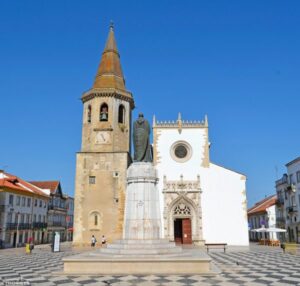
In front and behind. Shield on his back. Sword sheathed. Facing the Church of John the Baptist. In profile?
From Unesco: “Originally designed as a monument symbolizing the Reconquest, the Convent of the Knights Templar of Tomar (transferred in 1344 to the Knights of the Order of Christ) came to symbolize just the opposite during the Manueline period – the opening up of Portugal to other civilizations” [click here to read more]....
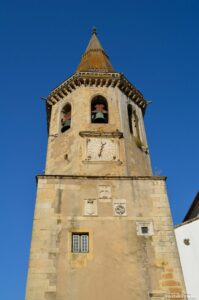
"The Manueline clock was taken from the “Sun Gate” (Porta do Sol) of the Templars’ Castle is from the time of D. João III (1523)...At the bottom right of the clock tower sits a pyramidal stone relief of a dog and a lion which is very weathered by time older than the church itself....They are separated by a flor-de-lis....According to the Tomar website, there is no doubt that this stone came from the the foot or support of an ancient tomb and was later used in the clock tower." Death-rebirth?
The Praça da República is the main square in Tomar. The Church of St. John Baptist is in the main square of the town. It was built between the 15th and 16th centuries and has many interesting artistic details, like the flamboyant Gothic doorway. The Manueline style clock tower is from the 16th-century. There are also several panels painted by Portugal’s best Renaissance artists, Gregório Lopes in the 1530s. Both the church and the clock tower were given to Tomar by Manuel I of Portugal, who was also a Grand Master of the Order of Christ.
The Church of Saint John the Baptist (São João Baptista) is in the main square of the town, in front of the Municipality (17th century) and a modern statue of Gualdim Pais. The church was built between the 15th and 16th centuries.” [click to read more].
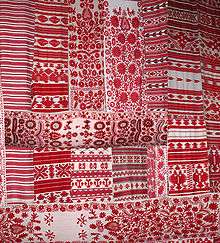
Ukraine carpet. Spots and stripes?
Continued: The lozenge symbolism is one of the main symbols for women in Berber carpets.[5] Common Berber jewelry from the Aurès Mountains or Kabylie in Algeria also uses this pattern as a female fertility sign.
In 1658, the English philosopher Sir Thomas Browne published The Garden of Cyrus, subtitled The Quincunciall Lozenge, or Network Plantations of the Ancients, in which he outlined the mystical interconnection of art, nature and the universe via the quincunx pattern. He also suggested therein that ancient plantations were laid out in a lozenge pattern.[6]
Lozenges appear as symbols in ancient classic element systems, in amulets, and in religious symbolism. In playing cards, the symbol for the suit of diamonds is a lozenge.

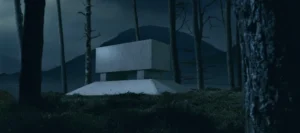
The White Tomb. Any 'washing'?
As seen from a different perspective: "There was also Tros, the son of Alastor - he came up to Achilles and 'clasped his knees' in the hope that he would spare him and not 'kill' him but let him 'go', because they were 'both' of the same 'age'. The implication behind this last remark is that the personal star of Tros {Cetii} is close to the same altitude in the sky as Sirius, and would have appeared on the horizon visible from Greece at about the time Sirius appeared in the sky." ['Homer's Secret Iliad'].
Therefore a link in some form {to a representation of something} - by way of - an heliacal rising?
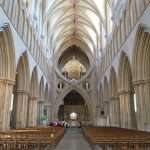
Next level up.
Side note: ''To engage with Nature without losing our unique sense of being human is to stand {'upright'?} in the middle of a Medicine Wheel. Plato talked of the eight spheres of 'heaven', that are attached to a spindle that ''turns on the knees of necessity''. This spindle is the world tree, and our own axis. From this perspective we view the eight major directions about us that join in a circle to form the perimeter of our world view.'' [ Page 215 'Fruits of the Moon Tree'].

Under ones belt?
Question. What do 'shoulders' and 'knees' represent?
Middle ground = ''navel''?
A working example: ''In the sandstone relief at Abydos of the Temple of Ramses II - the Nile god Hapi appears as a long haired hermaphrodite...bent down on one knee, holding in his hands the flowering lotus and papyrus...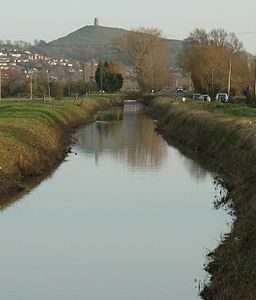 Who floods the fields to nourish all those who thirst....They seem to say that when the waters of the unconscious rise toward the realm of consciousness {wet/dry'?}, then we have come to our time of renewal...Dawn always begins in the BONES.....The search for higher ground may be metaphoric for the search of a higher spirituality.'' [Pages 124-130 'Dreams of Isis' / N. Ellis].
Who floods the fields to nourish all those who thirst....They seem to say that when the waters of the unconscious rise toward the realm of consciousness {wet/dry'?}, then we have come to our time of renewal...Dawn always begins in the BONES.....The search for higher ground may be metaphoric for the search of a higher spirituality.'' [Pages 124-130 'Dreams of Isis' / N. Ellis].
'Mountains low. Valleys high'?
Karnac to Gebel el Silsila?
Libyan White Desert.
Khnum to enlarge.
Side note: ''The sea hare, a marine gastropod of the family Aplysiidae (subclass Opisthobranchia, phylum Mollusca) that is characterized by a shell reduced to a flat plate, prominent tentacles (resembling rabbit ears), and a smooth or warty body. Sea hares eat large seaweeds, and all are simultaneous hermaphrodites.'' [Wiki].
Continued: From a different perspective: ''Shortly AFTER THE MONSOONS arrive on the Colorado Plateau and the Katsinam depart for their home on the San Francisco Peaks.....Orion rises due East to repose for a few moments on the horizon....the belt hovers vertically above the dark silhouette of the sleeping land {i.e., an hour before the sun in early July and three hours before by late July}.'' [Page 44 'The Orion Zone'].

Conscious/UNconscious - which and why?

Upstream or Downstream?
A work in progress: ''As i stood peering into the deep well of Kom Ombo, i felt i was peering not only into my past, but into the antiquity of Egypt, my little self {'ishon'?} caught between two eternal realms....In my minds eye, i watched an imaginal shape of myself descending those circular {'spiral'?} stairs which led down into the abyss that once held the sacred crocodile. I saw how the dark waters of the well reflected the blue sky. In a moment the image seemed to flip. Those same stairs that a moment ago were descending into the abyss, now were leading me out of the abyss towards the light. In truth, the ancient steps of the Nilometer were used in antiquity to determine the height of the 'flood' and the breadth of the inundation, but that day at Kom Ombo, they seemed also to say that when the waters of the unconscious rise toward the realm of consciousness - then we have come to our time of renewal.'' [Page 124 'Dreams of Isis: A Womans Spiritual Sojourn' / N. Ellis].
Understanding the above defines the purpose - in the spiritual SENSE of the word - to the longest 'tunnel' in the Valley of the Kings.
Seti 1st to enlarge.

Overlooking Stonehenge from a southern perspective. Male skeleton found - 'Lord of Stonehenge' - Bronze Axe {near left shoulder} / gold plate on chest {lozenge} and coral shafted mace found within..."In some ways the mystery of Stonehenge will not be solved, but every theory gets us that little bit closer..." Quote by Prof. Mike Parker Pearson within the program 'Stonehenge: A Time-watch Guide' / BBC4. UNDERSTAND THIS SUBJECT - TO GET THAT ''LITTLE BIT CLOSER.'' N.B. Djoser's 'Step Pyramid also overlooking {beginning?} from the south. Question. What was found within it?

Glimmer of light at dawn?
Side step: "The design of the artifact known as the Bush Barrow Lozenge, and the smaller lozenge , has been shown to be based on a hexagon construction. Both the shape and the decorative panels appear to have been created by repeating hexagons within a series of three concentric circles." [Wiki / 'Bush Barrow']. Try among others ''hexagon'' and ''three''.
A working example in fable/story form: ''At the moment of my appearance on gods earth, at which moment - through a hole in the window pane made by our crazy lame goat - there poured vibrations of sound from an Edison phonograph in the neighbours house, where the midwife who delivered me had in her mouth a lozenge saturated with 'cocaine' of German make....which she was sucking to the sound of the music without the proper enjoyment.'' [Page 8 'Beelzebub's Tale to His Grandson' / Gurdjieff].
Death/rebirth? Of Spirit or soul?
Balance of the two?
''Three types of penny have been found which were issued in Ceolwulf's name. The bulk of them were minted at London and of the type designated as Cross-and-Lozenge, which was also in use by King Alfred of Wessex.[14] Ceolwulf's coinage appears to be closely related to that of Alfred of Wessex, and it has been suggested on this basis that the two kings co-operated against the Vikings.[15]
A united England?
''The Royal Mint was at Tower Hill.'' ['The Chase'].
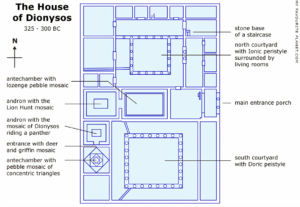
'REFRESHER: 'The whole work of 'turning the light around' uses the method of reversal. The 'beauties' of the highest heavens and the marvels of the sublimest realms are all within the heart: this is where the perfectly open and aware spirit concentrates. Confucians call it the open center {Amarna?}, Buddhists call it the pedestal of awareness {'horizon'?}, Taoists call it the ancestral earth, the yellow court {'sand'?}, the mysterious pass {'Place of Rowing'?}, the primal opening. The celestial mind is like a house; the light is the master of the house. Therefore once you turn the light around, the energies throughout the body all rise.''

Aegean coinage. A+E = Linear A and B? Higher/lower? And/or: "Two rulers sitting beneath the symbol for unity - suggests that Alfred and Ceolwulf had formed an alliance to fight the Vikings." {'Digging for Britain' / S5 EP3}. N.B. 'Box' shaped parameters with both 'facing' the onlooker/observer.
And/or: The two kingdoms {'Houses'?} had shared a currency since Wessex, under Alfred’s brother and predecessor Æthelred I (865-71), adopted the established Mercian ‘Lunettes’ design in the mid-860s. This move is symptomatic of the political status quo at the time: Wessex and Mercia were rivals and allies rather than adversaries. Æthelred I may have wanted to benefit from the tendency for Mercian ‘Lunettes’ pennies to contain less silver, which made it difficult for West-Saxon coins to circulate competitively alongside them. By the time Burgred, king of the Mercians (r.854-74), was forced into exile by the Vikings, this process of debasement had reached a low point. But the monetary entente cordiale between Mercia and Wessex still held. Alfred and Ceolwulf II, Burgred’s successor, undertook to restore the quality of the coinage.
Several new designs were tried out. Most specimens (including the bulk of the hoard) belong to a group known to scholars as the ‘Cross and Lozenge’ type. This featured an elaborate cross enclosed within a lozenge on the reverse, paired with a handsome bust of the king, inspired by Roman coins.
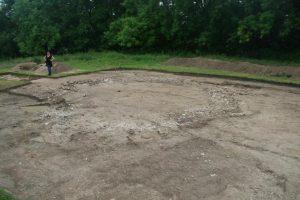
Hexagon building found in Meonstoke in the Meon Valley. 'Lozenge' shape? {'Digging For Britain' /S6 EP1}.
Among the most interesting of the other designs was one which again placed a bust on the obverse, but with a different reverse, which showed two emperors enthroned side by side. The ninth-century Anglo-Saxon manufacturers drew this from Roman coins of the fourth and fifth centuries, issued when emperors shared power. In the context of the rapprochement between Mercia and Wessex, it is unlikely that this image was without resonance; the two emperors might have evoked the co-operation between Alfred and Ceolwulf II. Until the discovery of the Watlington hoard, just two specimens of this coinage had been found, one each for Alfred and Ceolwulf II. It had seemed possible that this coinage might even have been some sort of limited edition; a rarity for the Anglo-Saxons. But Watlington has added over a dozen more specimens, by a number of new moneyers and diverse in style; an indication that, although this may have been a short-lived coinage, it was produced on a significant scale. The coinage with the two emperors stands out as a substantive as well as symbolic segment of the coinage of the 870s.
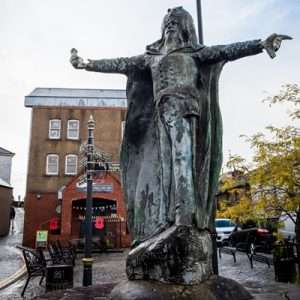
Druid in the middle of the 'bull ring'.
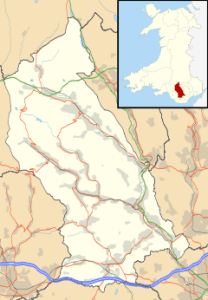
CF 72 {SEVENTYTWO}.
Side note: Llantrisant (![]() Welsh pronunciation; "Parish of the Three Saints") is a town in the county borough of Rhondda Cynon Taf, within the historic county boundaries of Glamorgan, Wales, lying on the River Ely and the Afon Clun. The three saints of the town's name are SS. Illtyd, Gwynno, and Dyfodwg. Llantrisant is a hilltop settlement, at an altitude of 174 m (565 ft) above sea level. The town is home to the Royal Mint.....An ancient tradition called the Beating the Bounds, where local children are bounced by elders on to the boundary stones of the old borough, still occurs every seven years and has its roots set as far back as the 14th century. The rite was intended as a reminder to each generation of the importance of the borough boundaries. The children in question are held under the arms and the legs, and their backside is bounced on each of the stones of the old borough. It is believed that the Beating of the Bounds started in 1346, when Llantrisant was awarded its Royal Charter....The focal point of the town is the Bull Ring, a commercial square in the centre of the town that was used for bull-baiting, until it was disallowed in 1827 due to unruly crowds.[11] The square contains a statue of Dr William Price a pioneer of cremation.''
Welsh pronunciation; "Parish of the Three Saints") is a town in the county borough of Rhondda Cynon Taf, within the historic county boundaries of Glamorgan, Wales, lying on the River Ely and the Afon Clun. The three saints of the town's name are SS. Illtyd, Gwynno, and Dyfodwg. Llantrisant is a hilltop settlement, at an altitude of 174 m (565 ft) above sea level. The town is home to the Royal Mint.....An ancient tradition called the Beating the Bounds, where local children are bounced by elders on to the boundary stones of the old borough, still occurs every seven years and has its roots set as far back as the 14th century. The rite was intended as a reminder to each generation of the importance of the borough boundaries. The children in question are held under the arms and the legs, and their backside is bounced on each of the stones of the old borough. It is believed that the Beating of the Bounds started in 1346, when Llantrisant was awarded its Royal Charter....The focal point of the town is the Bull Ring, a commercial square in the centre of the town that was used for bull-baiting, until it was disallowed in 1827 due to unruly crowds.[11] The square contains a statue of Dr William Price a pioneer of cremation.''
 Continued: ''Simon Keynes and the numismatist Mark Blackburn initially suggested that in about 875, Alfred was the sole recognised ruler in London, while Ceolwulf's involvement would have come about only towards the end of his reign, 879.[16] However, in 1998, the same year that their discussion was published, another Cross-and-Lozenge penny struck in Ceolwulf's name came to light, which appears to be contemporary with Alfred's earliest coinage.[17]
Continued: ''Simon Keynes and the numismatist Mark Blackburn initially suggested that in about 875, Alfred was the sole recognised ruler in London, while Ceolwulf's involvement would have come about only towards the end of his reign, 879.[16] However, in 1998, the same year that their discussion was published, another Cross-and-Lozenge penny struck in Ceolwulf's name came to light, which appears to be contemporary with Alfred's earliest coinage.[17]
In October 2015, the Watlington Hoard of coins, jewellery and silver ingots was found near Watlington, Oxfordshire. The find, dating back to the 870s, included coins carrying the image of two Roman emperors accompanied by the name of either Alfred or Ceolwulf.'' [Wiki].

'C'aroline?
And/or: "We knew that the lozenge itself was an arcane symbol. The four bounding lines were symbolic of the four elements which according to arcane knowledge, frame the outer structure of the phenomenal world. The space they bound is the Etheric, or life force {'quintessence'}, hidden behind the elemental four. It is a 'space' invisible to ordinary vision...The lozenge is one of the basic symbols of esoteric lore, representing as it does as a sort of doorway into the etheric spiritual world...This symbol of the etheric plane is nowhere no more openly announced than in Notra-Dame, France...A figure is displayed within a huge lozenge, the bounds of which are decorated with small lozenges. Altogether there are 41 lozenges in this single architectural detail..." ['The Zelator'].
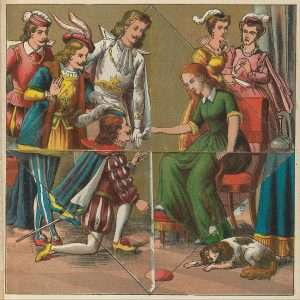
'Middle = 'glass'?

"The Church of Notra Dame de France - Soho - London. The most famous artworks associated with Notre Dame de France are the paintings by Jean Cocteau, his only murals outside France. Decorating the walls of the Lady Chapel, {LEFT of the main CENTER isle, i.e., left of the altar} - Cocteau worked on the paintings between 3-11 November in 1959. People who worked at the church said he would arrive early each day and talked to his creations as they appeared on the walls. There are three panels, the Annunciation (left), Assumption (right) and Crucifixion (middle)." 'Pearls' for tears? The rose that blooms at the centre of the cross?
"The lozenge in heraldry is a diamond-shaped rhombus charge (an object that can be placed on the field of the shield)...The blason Lozengy is a form of variation of the field or of another charge (for example a chevron lozengy) which consists of lozenges semée, or sown like seeds (Latin: semen, a seed), or strewn across the field, but in an organised contiguous pattern. The arms granted to the Canadian John Francis Cappucci bring an example of lozengy voided, the same as "lozengy" but with a smaller lozenge-shaped hole cut out of each segment."
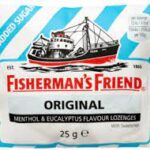 And/or: ''A small medicinal tablet, originally in the shape of a LOZENGE, taken for sore throats, and disolved in the mouth.''
And/or: ''A small medicinal tablet, originally in the shape of a LOZENGE, taken for sore throats, and disolved in the mouth.''Someone closer to the mark; for this reader; using the same knowledge of latitude and longitude within this subjects symbolism will be found with the author Stecchini, as explained within the book 'Secrets of the Great Pyramid' by P. Tompkins.
Analogy? "In practical terms, any journey must take place through some kind of landscape. So the next stage of our practical work with 'magical' images is to use them in a linear way that will take us through an initiatory journey or story. Such journeys are common in all myth and legend..." ['Magical Images and the Magical Imagination' / G. Knight].
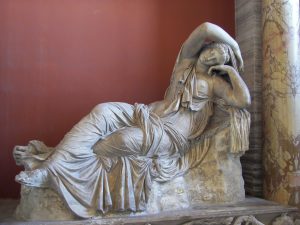
Hestia. Peaceful/Central/ Pure - all as a means to attempt a mindset.
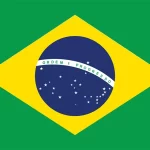
Flag of Brazil. 'Lozenge' shape?
A working example: "A Latin inscription covering the entire width of the 'fireplace' can be read above the symbolic panels which were up to now the subject of our study. It is composed of 'three' words separated one from the other by two pyrogenic vases forming the following epigraph: Nascendo quotidie morimur { In being born, we die every day}….the unfortunate fate that life has in store for us....the walk to the sepulchre as the essential condition of the earthly sojourn, the coffin as the raison d'etre for the crib?....It is the only written word written in the Mutus Liber....A simple examination of the inscription shows that of the three terms which contribute to form it, two are preceded by a special sign, the words quotidie and morimur. This sign, a little lozenge, was called by the Greeks Rombos {to be mistaken or go astray - to turn around}....Nascendo gives the idea of generation or production i.e., in order to generate.....The parents of the Hermetic child speak....The stone of the philosophers is born from the 'destruction' of the two bodies - the philosophers stone - or our 'mercury', its next matter - is also born from the fight....the essential operations of the art always has two principles producing a 'third' one {Son of?}, and that generation depends upon a preliminary decomposition of its agents. Further more philosophical 'mercury' itself, sole substance of the art can never yield anything unless it dies, ferments, and putrefies at the end of the first stage of the Work." [Pages 239/40 'The Dwellings of the Philosophers' / Fulcunelli].
Side note: Mercury = moon/female/wet. Sulphur = sun/male/dry. All as a means....?
The word / name ‘Fulcunelli’ ['ten' letters ], some say is a play on the words Vulcan / Falcon, together with ‘elli’. A beginning / end. All symbolic of a ‘beginners’ journey {linear?}. All within one word. Like the words...Blacksmith / Hammer and Anvil. All symbolic within the blacksmiths ‘Apron’. [use the 'find' indicator]. The author of the Zelator suggests something different,
Side note: ''Apron'' in the guise of something else? Try ''veil''.
A working example: "...Yet no one prior to Schwaller de Lubicz seems to have asked if the apron had special significance. He carefully measured 72 {'seventytwo'} of these 'aprons' - almost all of them within the covered Temple of Luxor....found to be precise mathematical considerations. ['Serpent in the Sky'].
Define those keys to define something beyond ''mathematical considerations''.
Egyptian equivalent... short 'kilt' worn in the 'sed jubilee' as indicated in 'Shamanic Wisdom in the Pyramid Texts. Mentioned elsewhere. More often than not, made of 'leopard' skin. Use the 'find' tool , to understand why, before asking that bigger question, i.e.,why, why go to all this effort. Ritual? Nothing more?
Vulcan: the patron saint of alchemy, who introduced the same to mankind. Falcon: ''The Lord of the skys.'' Eli: meaning ''Ascent'' or ''Yahweh is the most high god." The author of the Zelator offers a different interpretation by way of the Hebrew word ''Ishon'' and this subjects main representation of the symbolic intent of the ''apple.'' The end result, however, regardless of which interpretation one agrees with; is the same. An understanding of something. That inner one. The micro within the macro.
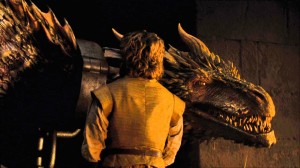 "The Hebrew 'Ishon' means 'dwarf', but in the authorized version of the bible it is translated as 'apple of the eye'. The association is almost certainly linked with the hermetic 'kore' [see part one]. In The Lamentations of Jeremiah [ii, 18], the translation offered is 'let not the apple of thine eye cease', suggesting that the apple of the eye is weeping. However, it could, with a much deeper meaning, be translated, ''let not the small man within cease.'' [Bibliographic notes to the final chapter].
"The Hebrew 'Ishon' means 'dwarf', but in the authorized version of the bible it is translated as 'apple of the eye'. The association is almost certainly linked with the hermetic 'kore' [see part one]. In The Lamentations of Jeremiah [ii, 18], the translation offered is 'let not the apple of thine eye cease', suggesting that the apple of the eye is weeping. However, it could, with a much deeper meaning, be translated, ''let not the small man within cease.'' [Bibliographic notes to the final chapter].
Try 3:8 to enlarge.
Analogy of same. Kore = "The virgin of the eye is a reference to the Greek Kore, which besides meaning the 'pupil of the eye' also means 'maiden' or 'virgin'. Just so, the English 'pupil' can also mean 'someone who is learning'.
The beginning {''virgin''} of something?
Side note: "The hebdomad is the only number within the decad {apart from the monad} which neither generates nor is generated by another number within the decad; hence it is called by Pythagoreans ''virgin, not born of mother''.....Moreover, the hebdomad consisting of the dimensions and the four limits makes manifest corporeality and organic life. The limits are point, line, plane, solid; the dimensions are length, breadth, depth." [Page 186 'Alexandria' Vol 3. / D. Fideler].
'The Eye of Heart' by Frithjof Schuon.
"But again, the movement runs both ways - for what one surrenders is, mystery, the same as what one gains. The eye which Odin offered to Mimir was a pledge given in exchange for water from the well; but the well itself is also called ''the pledge of Odin.'' Similarly, the Celtic languages can use the same word to mean ''spring'' or ''pool'' and ''eye.'' Thus the famous hot springs at Bath [Aquae Sulis] in Somerset were in Roman times named ''the waters of the eye'': like the Boyne they were sacred to a Goddess, in this case one identified with the Roman Goddess of wisdom, Minerva."[Taken from the chapter, 'The Waters of Vision and the Gods of Skill.' Mentioned elsewhere]. Put ''Minerva'' in the box. Then try ''Boyne.''
'Sulis' a link to the Irish suil, meaning ''eye.''
'The Waters of the Gap: The Mythology of Aquae Sulis' by R. Stewart.

'Flower' pot head?
A working example: ''He sacrificed his eye in Mimir's well and he threw himself on his spear Gungnir in a kind of symbolic, ritual suicide. He then hanged himself - upside down - on Yggdrasil, the tree of life, for nine days and nine nights {3x3?} in order to gain knowledge of other worlds and be able to understand the runes.''

'Roof' of the world? VOID?
And/or: ''The 'soul' is suspended between heaven and earth; it experiences complete solitude. For here it is not a matter of ordinary solitude where one is alone in the world, but rather of complete solitude where one is alone because one is outside of the world - the celestial as well as the terrestrial...'Like a lonely bird on the house top' {St. Teresa}...This is the zero point {'void' and/eclipse i.e., solar one?}, between the fields of terrestrial and celestial gravitation. It is from here that the soul is either elevated in contemplation of 'divine' and celestial things {archetypes?}, or descends to act in the human and earthly domain {wet/dry?} - but this zero point is certainly the place of its permanent sojourn. After elevation or after the accomplishment of an act, it returns there. The solitude of the desert between the two worlds is its abode. The other characteristic trait of the spiritual man is that he is upside down. This means to say, firstly, that the 'solid ground' under his feet is found ABOVE, whilst the ground below is only the concern and perception of the head...His will is connected to heaven...in such a way {so to speak} that his WILL 'knows' things that his head {his thinking} - still does not know.'' [Page 316 'letter xii: The Hanged Man' from the book 'Meditations on the Tarot'].

Found on Oak island. 'Spiral' in form. made of two entwined threads. Thirteen branches. 'Apple' island close by. Put to use the ''apple of the eye'' to define those concepts. To ''see' something other than the obvious.

In the southern hemisphere - Orion is upside down. "Gravity" to 'enlarge'. Question. Did the Egyptians know that?
Side step: "Dion Fortune's concerns with the Arthurian legend begins and ends at Glastonbury. Here she settled in 1922 at the foot of the Tor, at Chalice Orchard. She celebrated her love of Glastonbury and its legends, in a book called 'Avalon of the Heart,' which she first wrote about in her 'Inner Light' magazine......"
Any ''birds'' within it?
'Berber' to enlarge.
Egyptian equivalent: 'Intelligence of the heart'? Enlarged elsewhere.
Side note: {A work in progress}: ''The Jewish Talmud, a 4th century AD source, referred to Magdala as Migdal-Nunya, meaning ''tower of fish''....This is one explanation for the origin of the town's name, Migdal, meaning tower.....'The lake supplies fish for pickling, and on its banks grow fruit bearing trees resembling apple trees' {Strabo}.... The harbor, most likely in use up until 67AD....Archaeologists believe that shortly after the conquest, flooding covered the northern side of Magdala, burying thus preserving it for 2000 years.'' [Pages 16/25/30 'Mary Magdalene: Insights From Ancient Magdala' / J. Ristine].
Question. What does the ''flood'' represent within that universal mindset?
 Continued: "There are many different 'roads' leading to our English Jerusalem, ''the holyest erthe in England.'' We can approach it by the high road of history, which leads through a rich country......Its influence twines like a golden thread through the story of our Islands. OR we can come to Glastonbury by the upland path of legend. In and out twine the ancient folk stories, full of deep spiritual significance to those whose hearts are turned to their key. AND there is a third way to 'Glastonbury,' one of the secret Green roads of the soul [ or Green Language] - the 'mystic' way that leads through the hidden door [or 'chambers'] into the land known only to the 'eye of vision.' This is 'Avalon of the heart......' [Introduction to the book 'The Arthurian Formula' by D. Fortune and others]. Can you by now see why [as in this example] the author uses such phrases as 'Chalice Orchard' or 'Avalon of the heart.' Can you 'see' that inner meaning?
Continued: "There are many different 'roads' leading to our English Jerusalem, ''the holyest erthe in England.'' We can approach it by the high road of history, which leads through a rich country......Its influence twines like a golden thread through the story of our Islands. OR we can come to Glastonbury by the upland path of legend. In and out twine the ancient folk stories, full of deep spiritual significance to those whose hearts are turned to their key. AND there is a third way to 'Glastonbury,' one of the secret Green roads of the soul [ or Green Language] - the 'mystic' way that leads through the hidden door [or 'chambers'] into the land known only to the 'eye of vision.' This is 'Avalon of the heart......' [Introduction to the book 'The Arthurian Formula' by D. Fortune and others]. Can you by now see why [as in this example] the author uses such phrases as 'Chalice Orchard' or 'Avalon of the heart.' Can you 'see' that inner meaning?


What happens when monkeys are let loose in an orchard?
"Analogy of same; but more KEYS to {contemplate?}..."I saw a building jutting out like a great white ocean liner toward the blue brine, {'horizon/peninsula' link?}. First, speechlessly, then with ''Oh's!'' and ''Ah's!", finally with man's insufficient vocabulary {'gnosis' link, i.e., what it implies} of joy and gratitude, i examined the Ashram: sixteen unusually large rooms, each one charmingly appointed. The stately central hall, with high ceiling windows, looks out on an altar of grass, ocean and sky: a symphony in emerald, opal and sapphire. A mantel over the huge fire-place of the hall holds pictures of Christ, Babaji, Lahiri Mahasaya and Sri Yukteswar; bestowing, i feel, their blessing on this tranquil Western ashram. Directly below the hall, built into the very bluff, two meditation caves confront the infinities of sky and sea. On the grounds are sunbathing nooks, flagstone paths leading to quiet harbours, rose gardens, a eucalyptus grove, and a fruit orchard..." [Extract from the book 'Autobiography of a Yogi'. All emphasis - this readers].
West in relation to 'altar'. Grass in relation to emerald and/or Ocean/opal - Sky/sapphire - All of which i.e.,represented within 'gardens and groves' = the ''fruit of ones labours.'' Look up ''16.'' to understand ''its'' implication.
Joyous Garde?

New eyes?
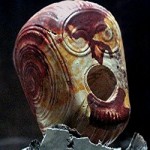
A different perspective? {i.e., owl and flint}.
A working example: ''The idea, too, that i am living in all likelihood in an alchemist's house makes me look at the place with new eyes. It doesn't seem quite real. Why did he hide the manuscript in the well? Was someone supposed to find it or not? Basically, i'm thrilled.'' [Page 98 'Mercurius' i.e., 'Eileen in relation to ''Solution'' }.
''The great task is to become aware of our UNconscious projections - to make them conscious. This enables them to be withdrawn into the subjective realm where there belong. The more the unconscious projections are made conscious, the less power they have over us. Consciousness is enlarged and, simultaneously, we begin to percieve the world more as it is and less as we have been colouring it. In other words, the withdrawal of projections promotes both self knowledge and a knowledge or reality.'' [Page 96 , same book].

Rising or falling?
"...but if you are armed with the 'wand' of intuition, the 'cup' of sympathy, the 'sword' of reason and the 'pentacle' of valor, you will find there {the legends say} the Medicine of Metals, the Elixir of Life, the Philosophers Stone, True Wisdom and perfect happiness." [Extract from the book 'The Cosmic Trigger' by R. Wilson. Emphasis, this readers].
''Medicine of Metals'' = 'Metal of the mind'? If so, what represents it And why?
The real questions however remain the same. WHY GO TO ALL THIS EFFORT?

''A special place in hell''? Question. For the Germans or Euro? WATCH THIS SPACE. {edited 8.2.19}.
'The Apples of the Hesperides'. This penultimate labour takes Heracles so close to the center of things that it is sometimes cited as the last labour. However, this is esoterically incorrect, for the final labour must be the harrowing of hell and the overcoming of the powers of Death. To approach the garden in the far West where the Tree of Life grows in the form of an apple tree bearing golden fruit is, however, a similar feat of overcoming natural inner boundaries, the one symbolized in the Old Testament by the angel who prevents mankind returning to the Garden of Eden, the earthly paradise." [Extract from the book 'The Rose Cross and the Goddess: The Quest for the Feminine Eternal Principle' from the chapter entitled 'The Heroic Quest for the Hesperides' by G. Knight].
'The apple of the eye'.
REFRESHER...'Sulis' a link to the Irish suil, meaning ''eye.''
Medway Gap?
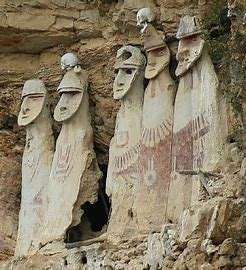
Above or below the 'cloud line'?
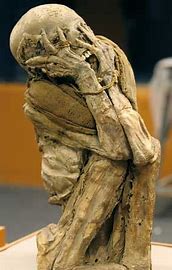 And/or: "Here then, is the first twist in the Pilgrim's Way story, because at Farnham, Belloc's prehistoric travellers did not forsake the chalk for the valleys of the River Wey and the Itchen and make for the area around Winchester. Instead, Belloc argues that they kept to the chalk on the higher ground and from Farnham took an ancient trackway that has become known as the Harroway or Hoar Way. The derivation of the name varies greatly depending upon who you refer to. Timperley and Brill suggest it is one of the oldest roads in Britain and refer to it as the Harrow or 'Hard Way'. Jacetta Hawkes believed it to be one of the main east-west thoroughfares used by prehistoric man....It is the Harroway that took Belloc's prehistoric travellers westwards towards Salisbury Plain and Stonehenge. For Salisbury Plain is where all the great chalk ridges of southern England converge....The Harroway served as a key east-west trackway that extended across southern England." [Page 30 'The Pilgrims Way' / Derek Bright].
And/or: "Here then, is the first twist in the Pilgrim's Way story, because at Farnham, Belloc's prehistoric travellers did not forsake the chalk for the valleys of the River Wey and the Itchen and make for the area around Winchester. Instead, Belloc argues that they kept to the chalk on the higher ground and from Farnham took an ancient trackway that has become known as the Harroway or Hoar Way. The derivation of the name varies greatly depending upon who you refer to. Timperley and Brill suggest it is one of the oldest roads in Britain and refer to it as the Harrow or 'Hard Way'. Jacetta Hawkes believed it to be one of the main east-west thoroughfares used by prehistoric man....It is the Harroway that took Belloc's prehistoric travellers westwards towards Salisbury Plain and Stonehenge. For Salisbury Plain is where all the great chalk ridges of southern England converge....The Harroway served as a key east-west trackway that extended across southern England." [Page 30 'The Pilgrims Way' / Derek Bright].
Question. What would represent south-north or would that be north-south?
Question 2. Recall the substance of 'chalk' I.e., seashells and flint. Something below a 'salty' waterline but NOW above it {'Island'?}. Wet/dry?
'Flint' = the spark of something? With what direction in mind? 'Horizontal or vertical'?
Question 3. Is that {Island} 'floating' or 'fixed'? All as a means to determine a MINDSET?

